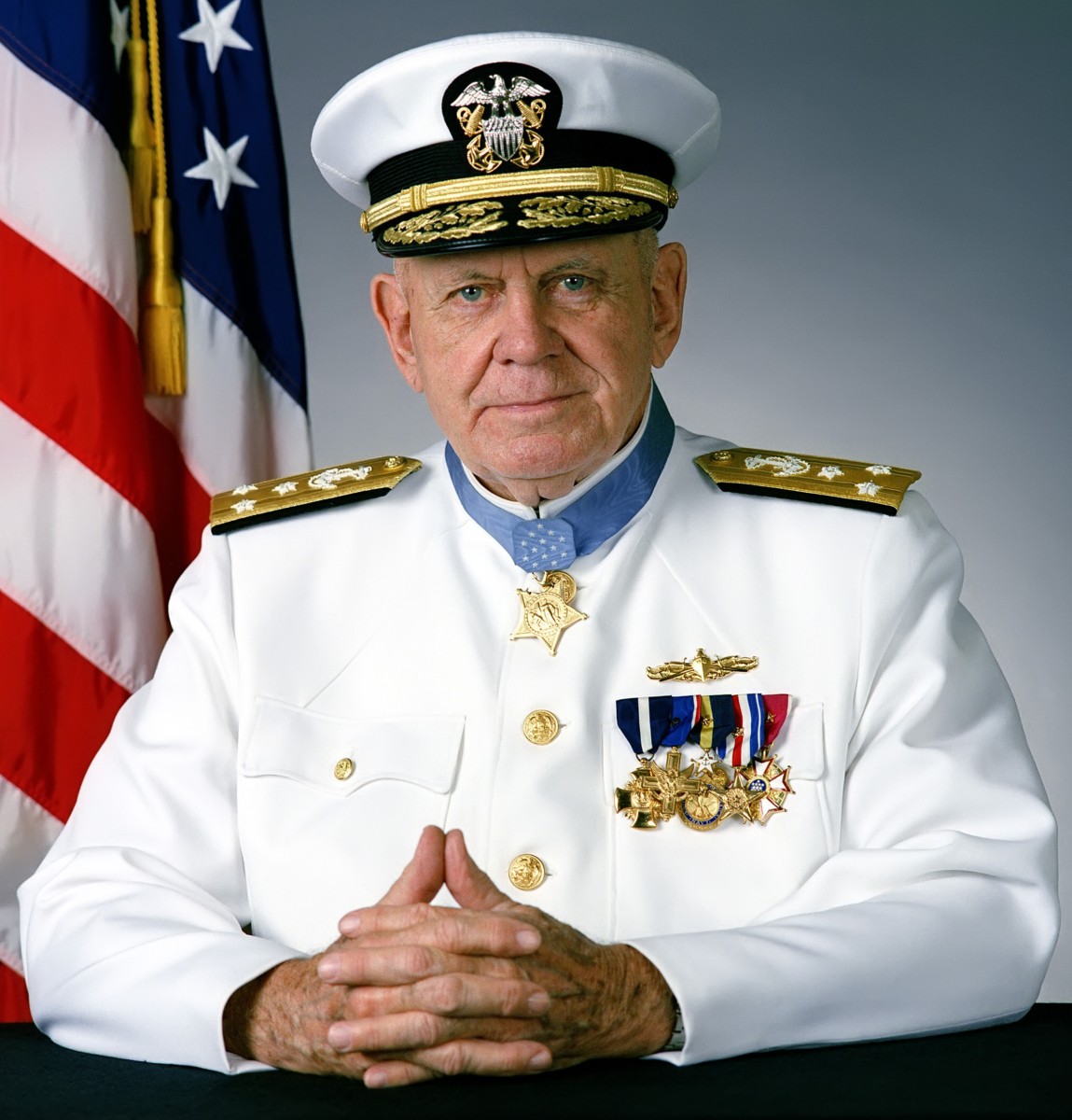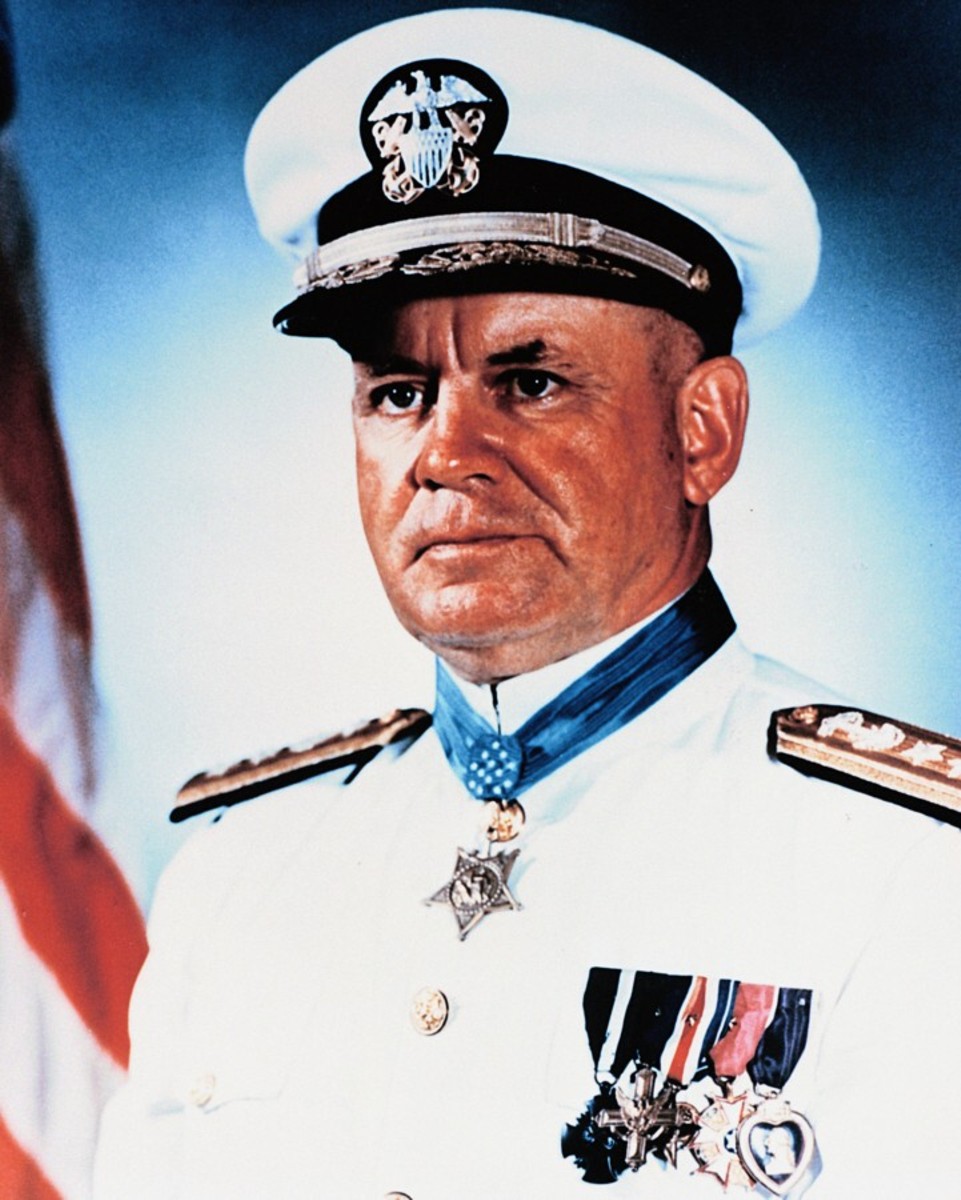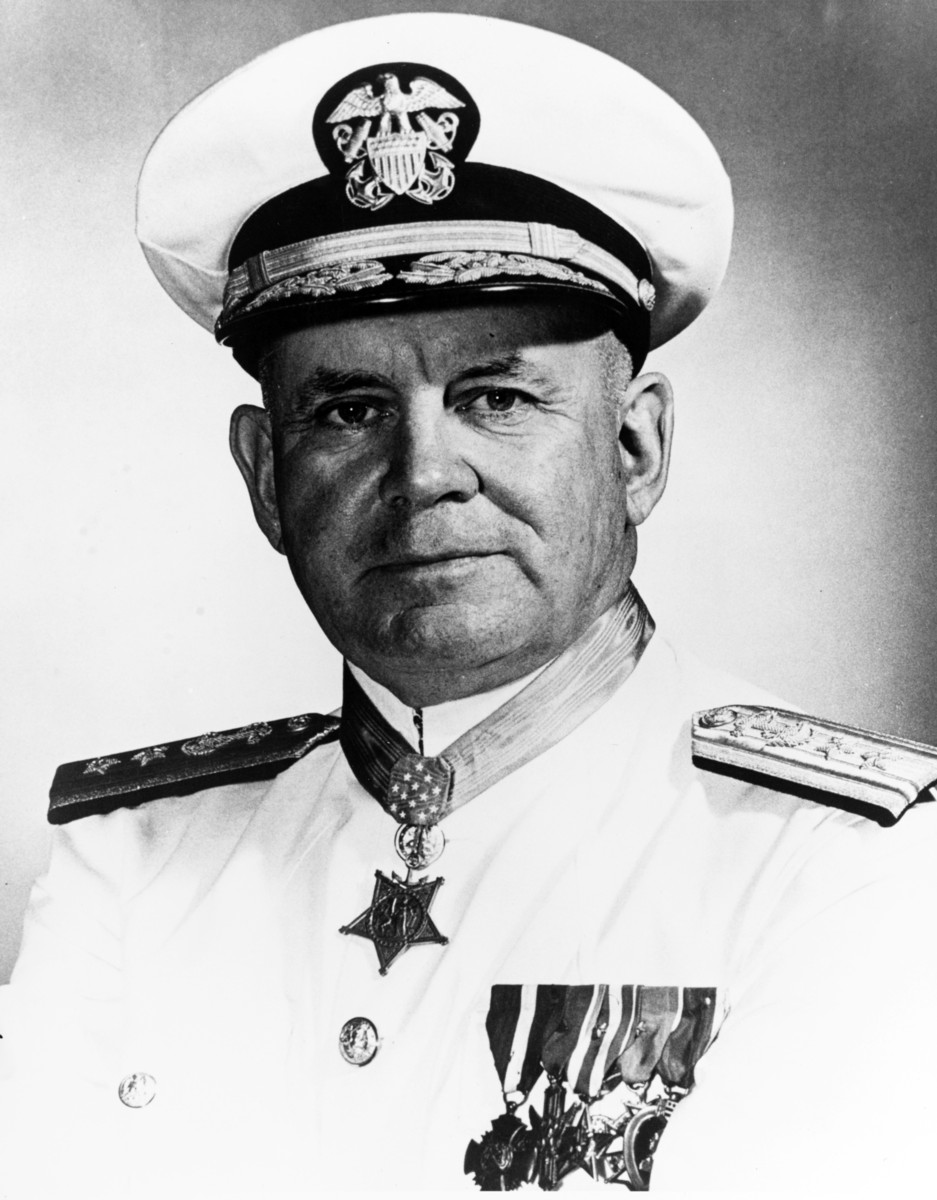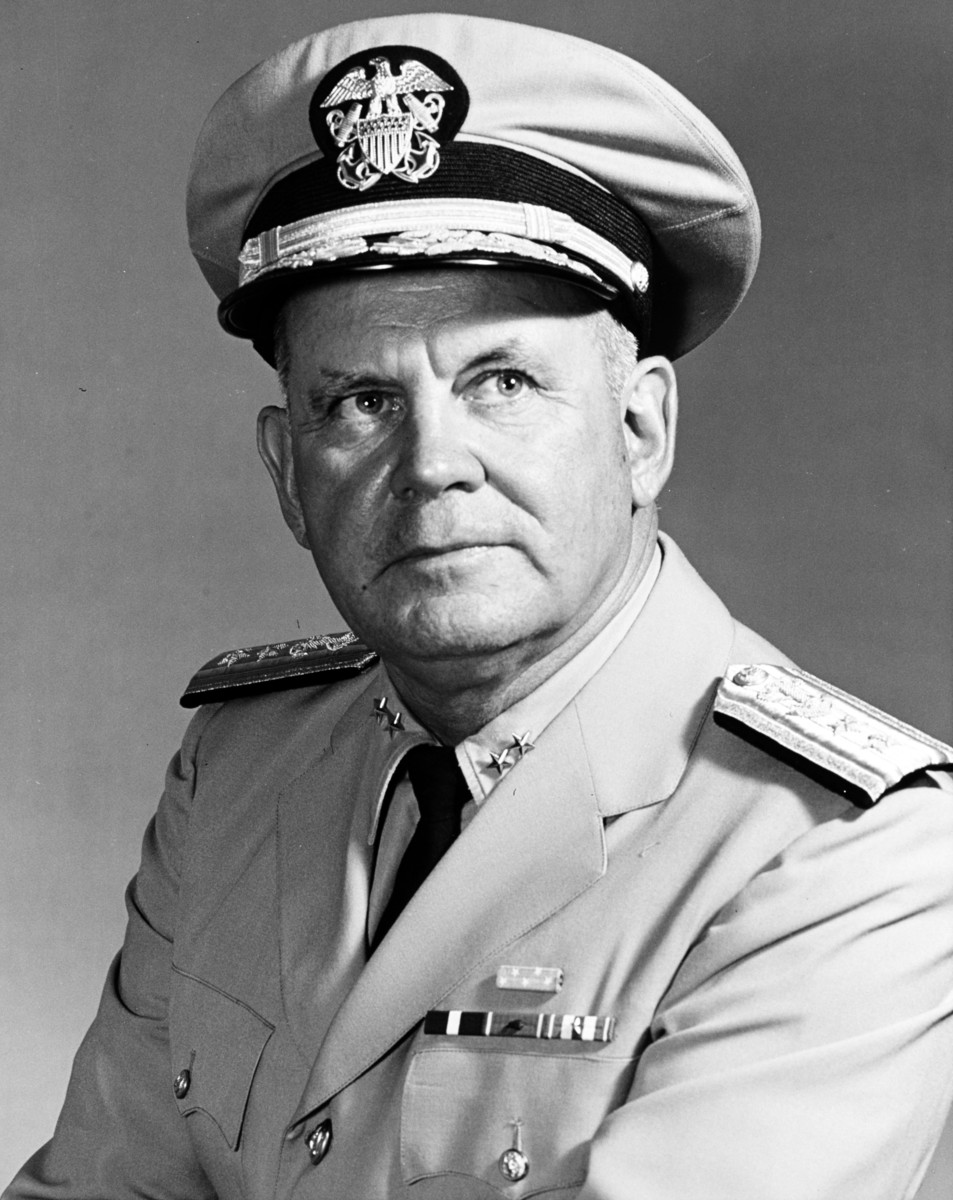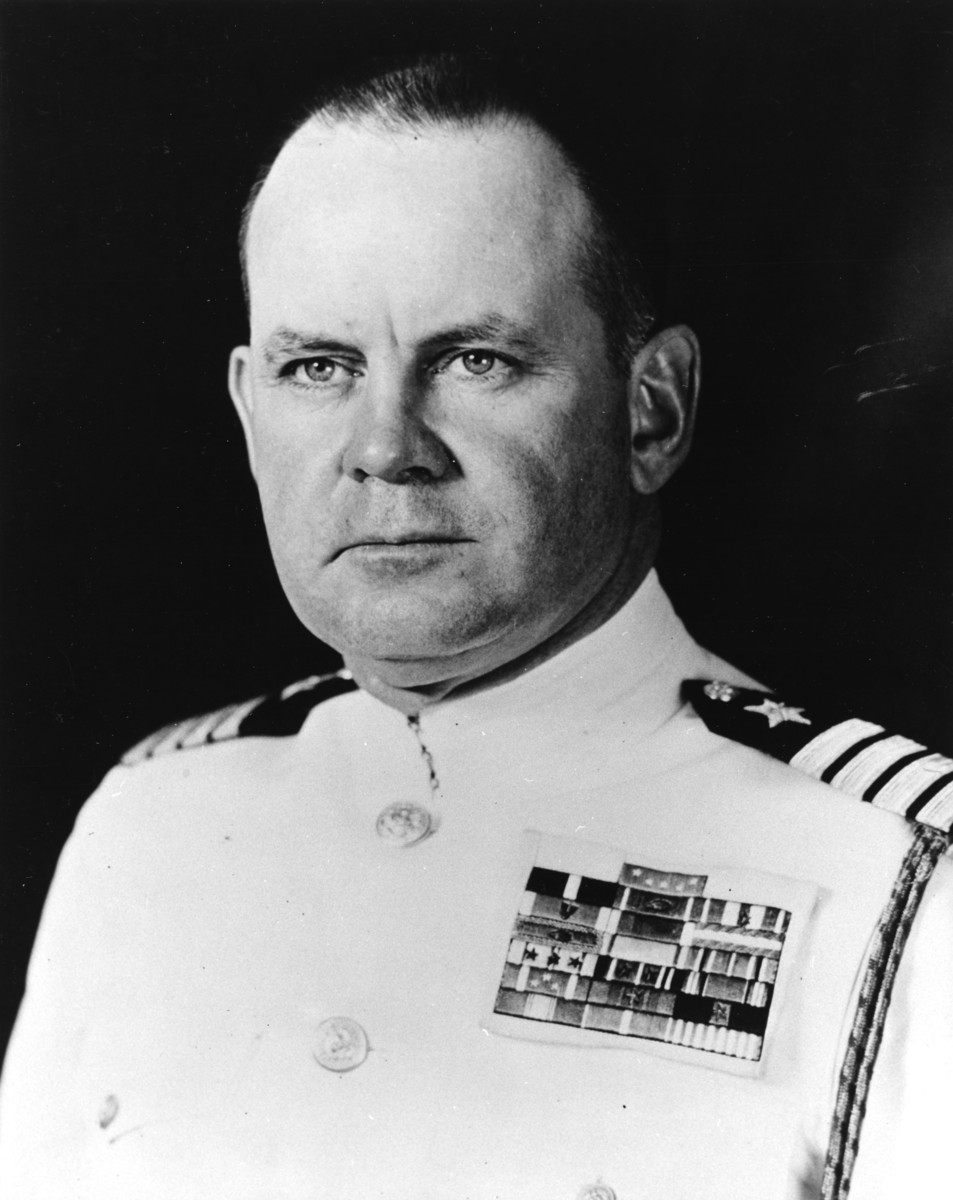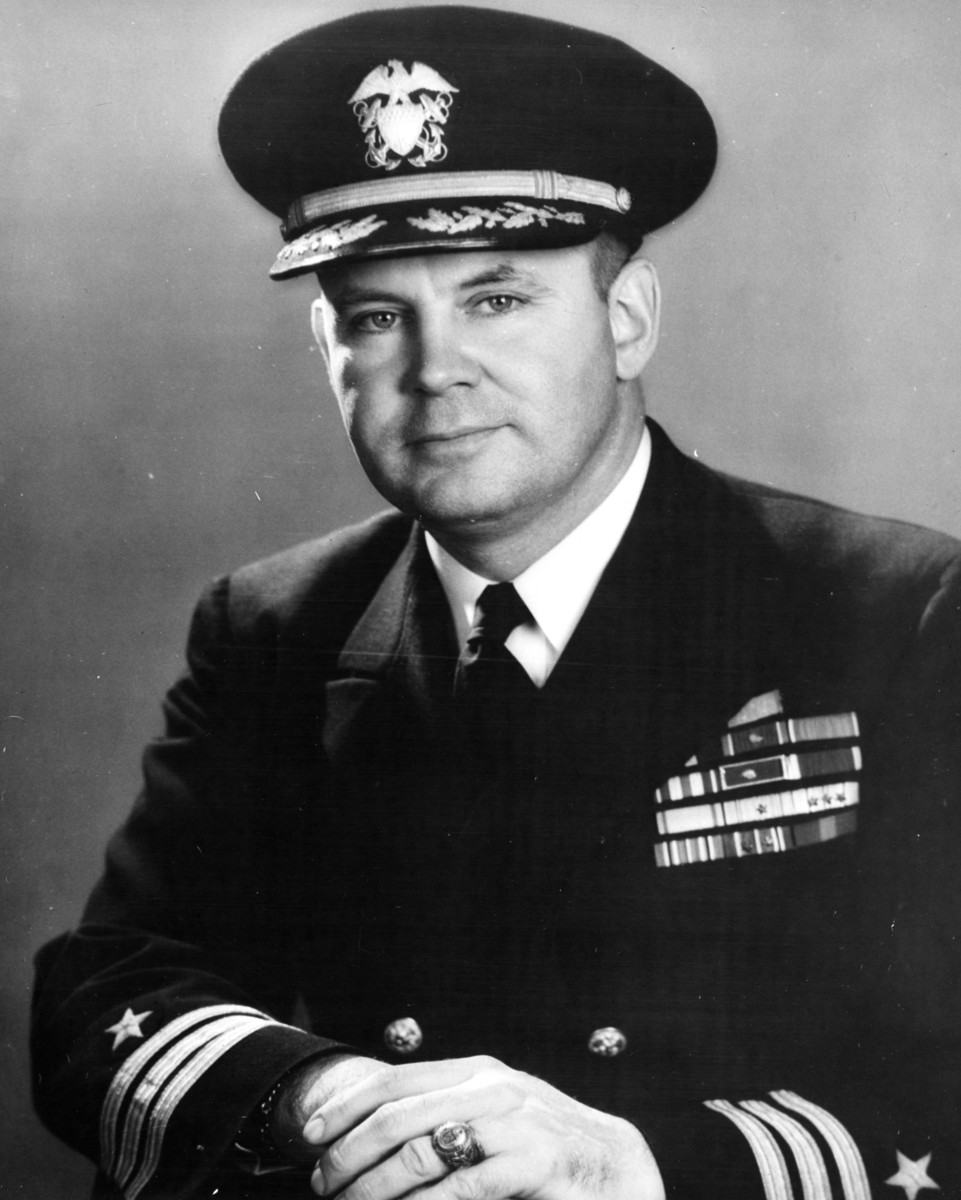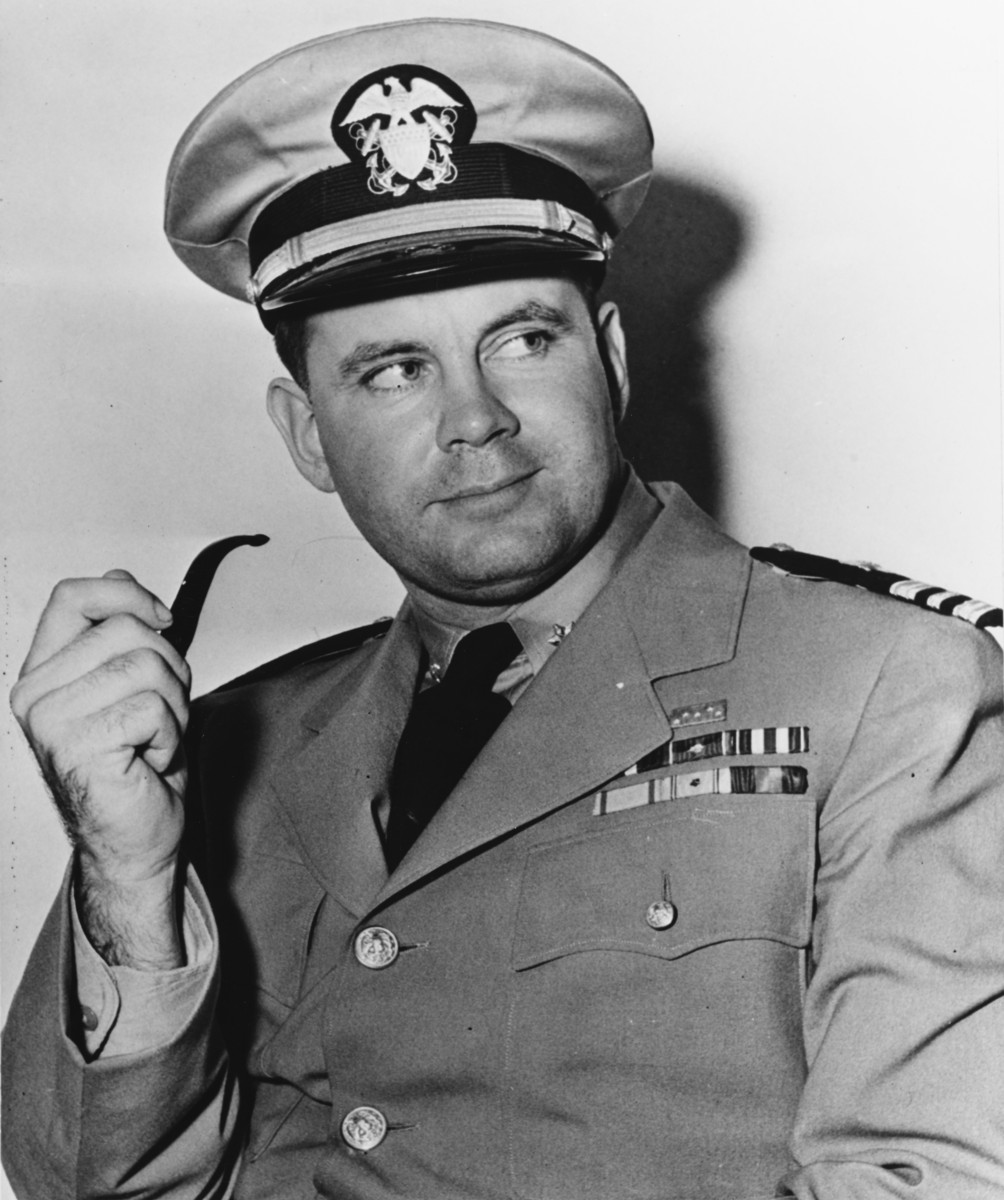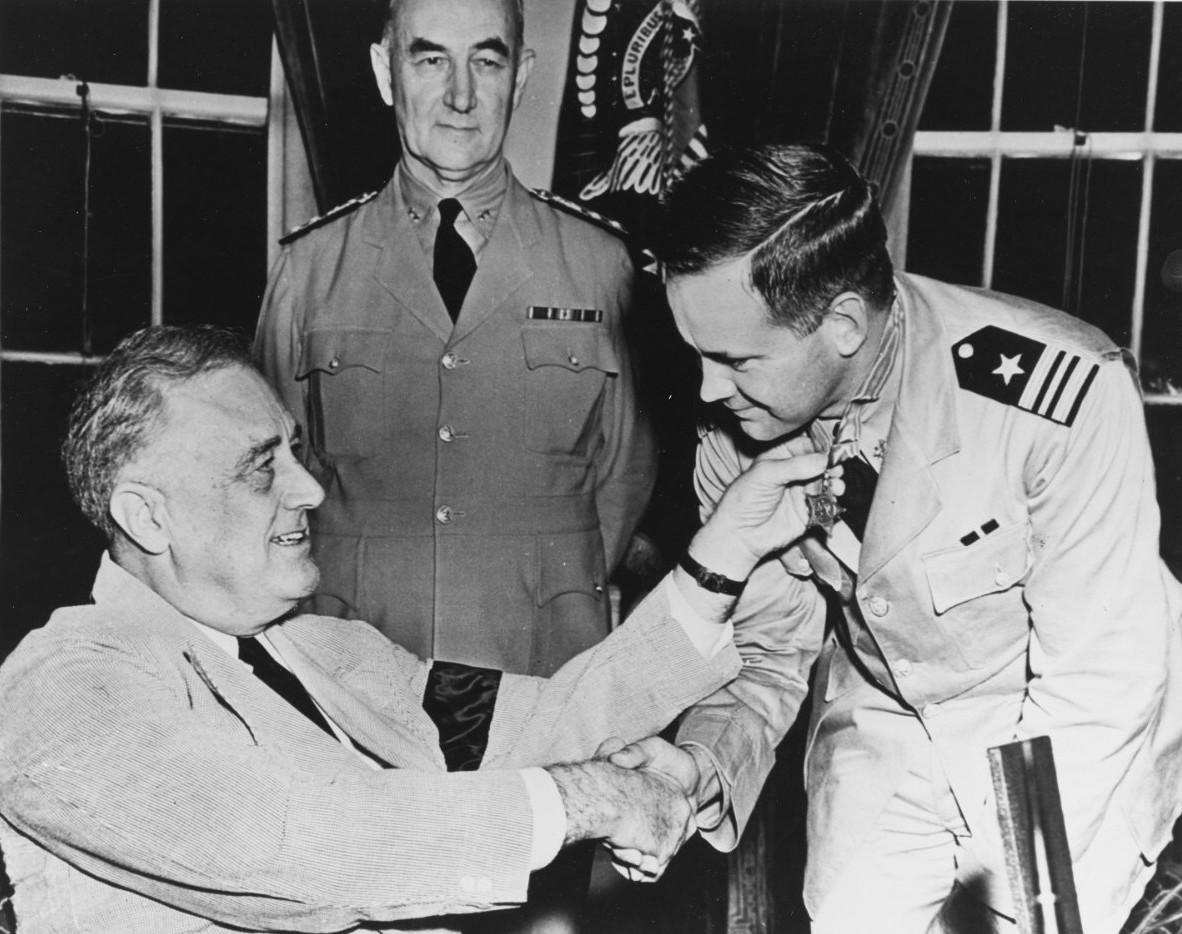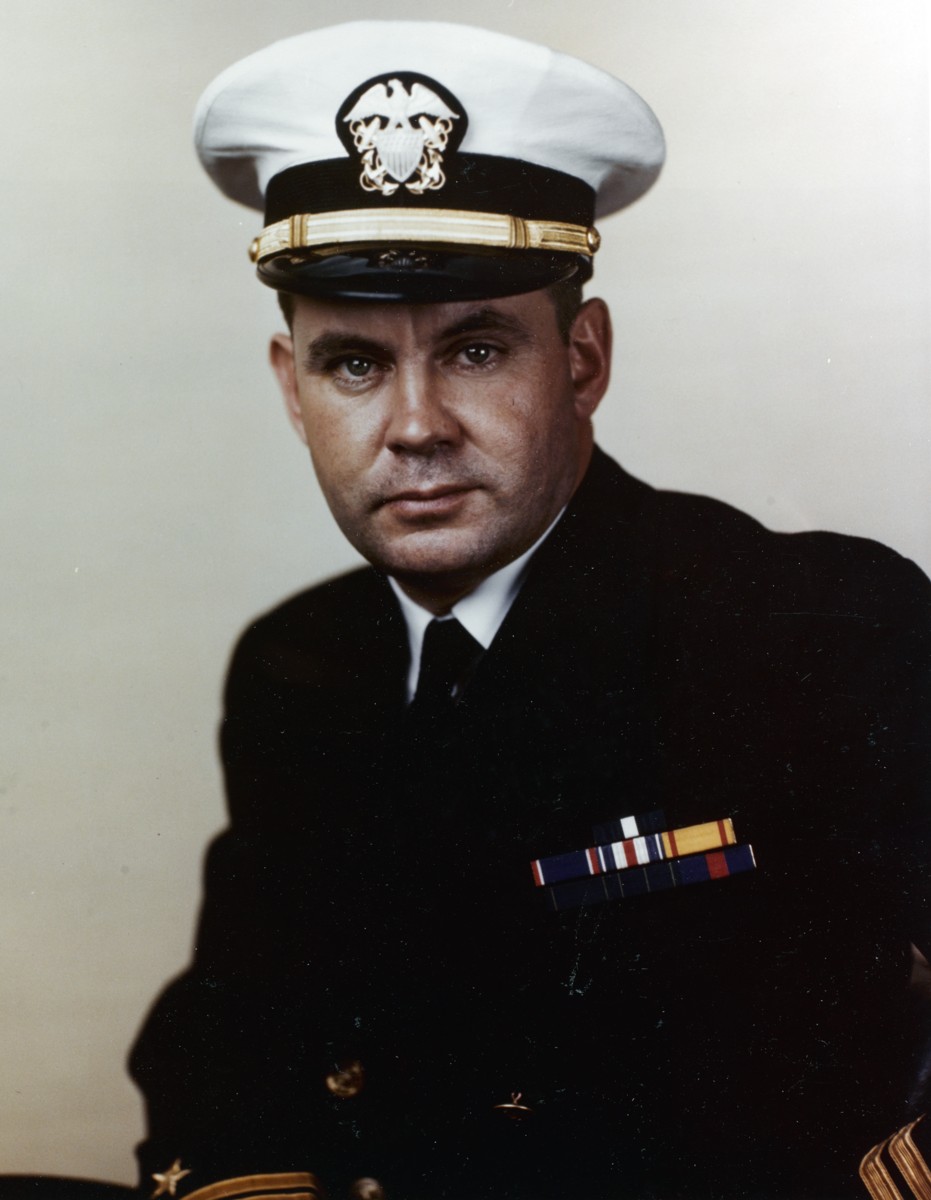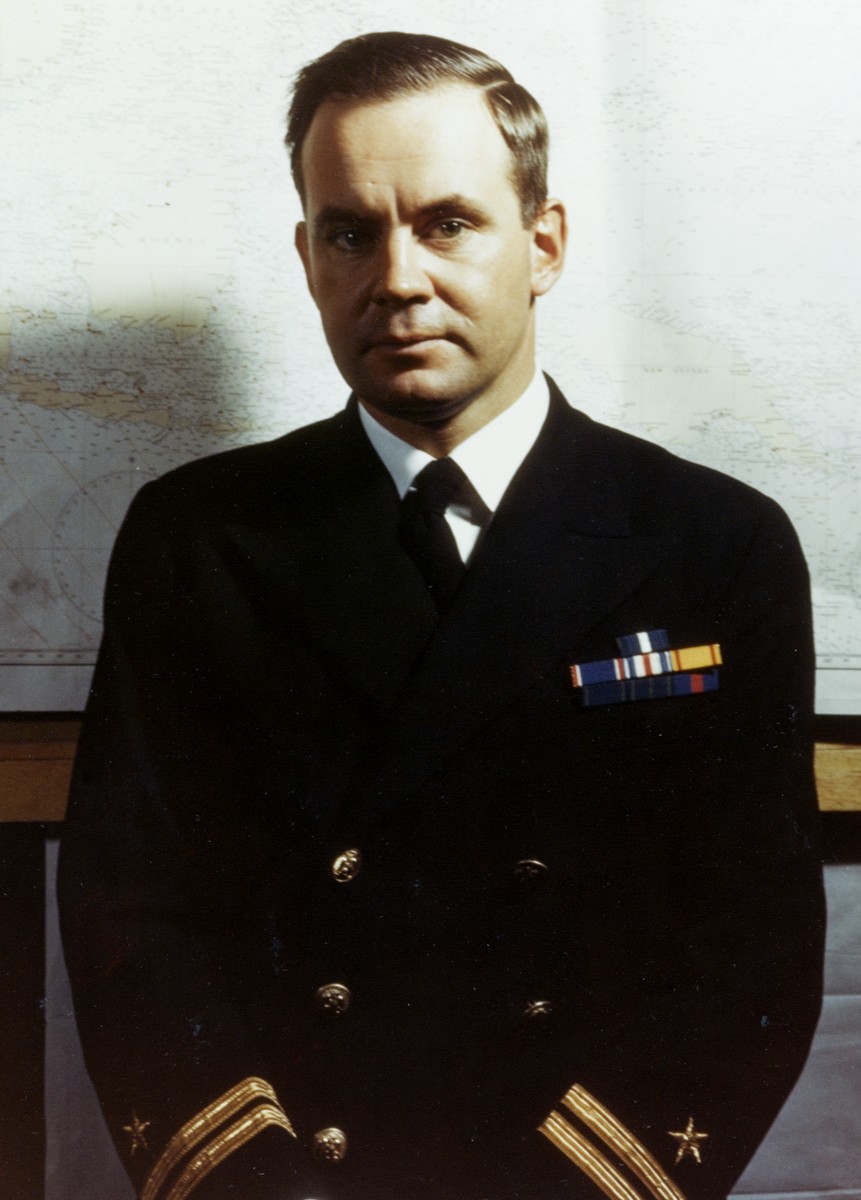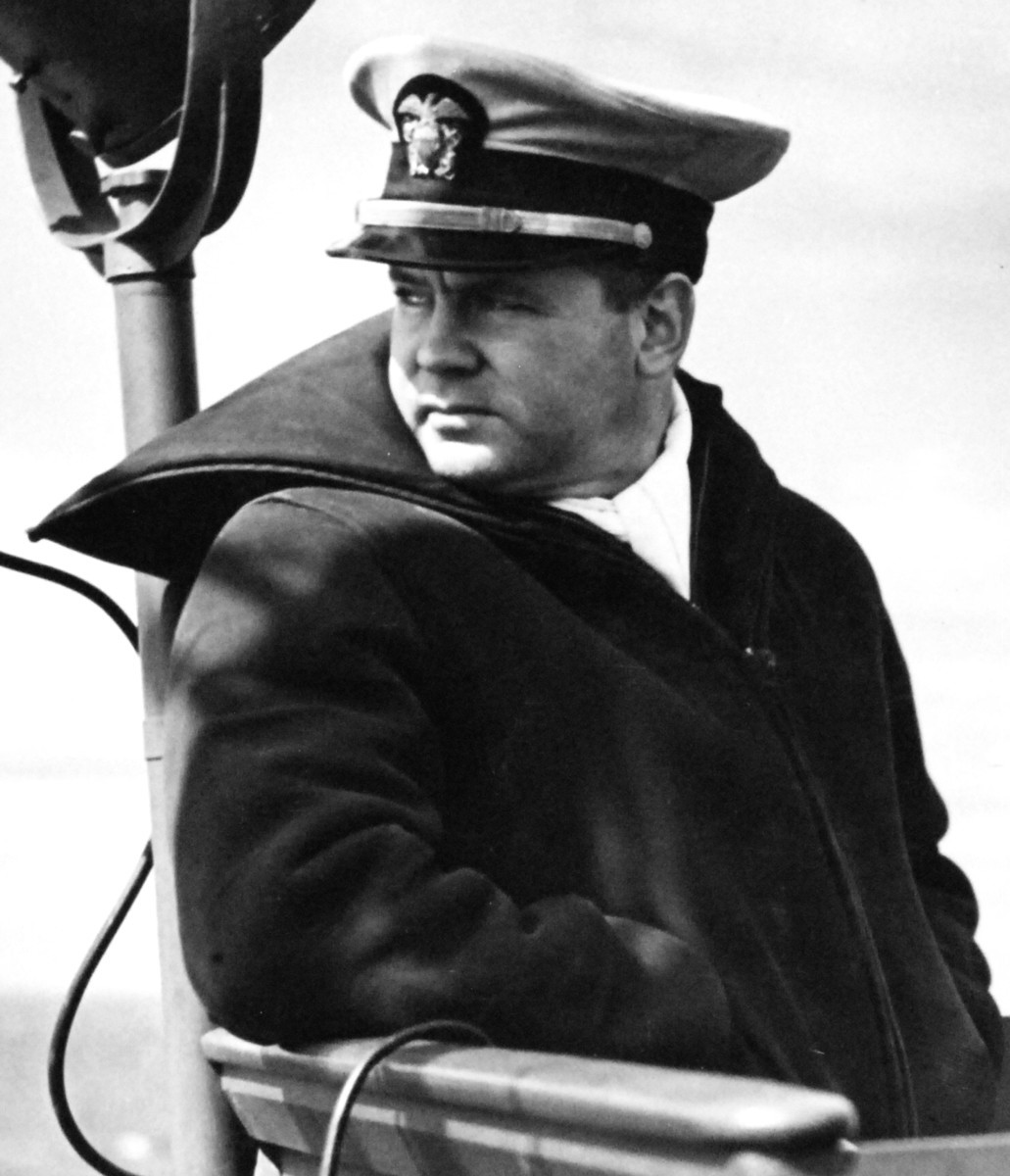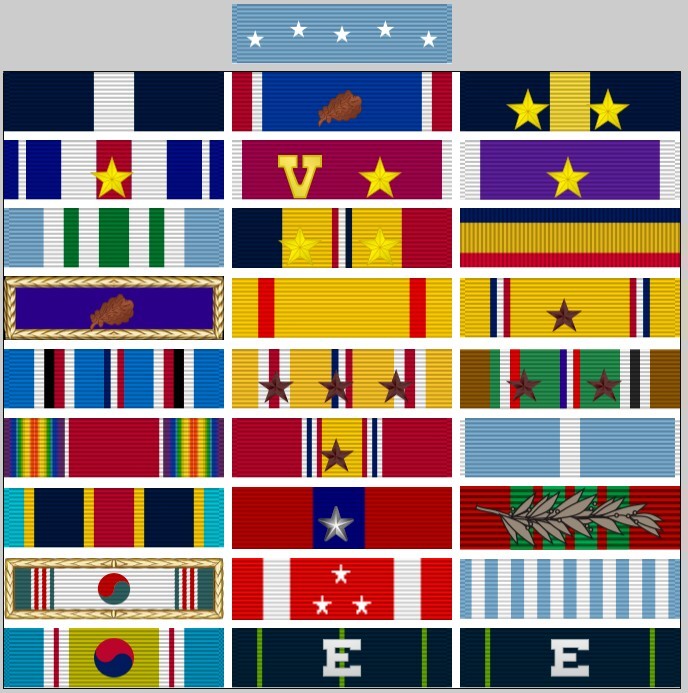 |
||
|
HOME
|
US Navy -
ships
|
US Navy - air
units
|
USMC - air
units
|
International
Navies
|
Weapon Systems
|
Special Reports |
||
|
US Navy - Guided Missile Destroyer DDG 84 - USS Bulkeley |
||
|
||
| 10/24 | ||
|
Type, class:
Guided Missile Destroyer - DDG; Arleigh Burke class, Flight IIA Builder: Ingalls Shipbuilding, Pascagoula, Mississippi, USA STATUS: Awarded: June 20, 1996 Laid down: May 10, 1999 Launched: June 21, 2000 Christened: June 24, 2000 Commissioned: December 8, 2001 IN SERVICE Homeport: forward deployed to Naval Station Rota, Spain Namesake: Vice Admiral John Duncan Bulkeley (1911-1996) Ships Motto: FREEDOM’S TORCH Technical Data: see: INFO > Arleigh Burke class Guided Missile Destroyer - DDG |
||
| images | ||
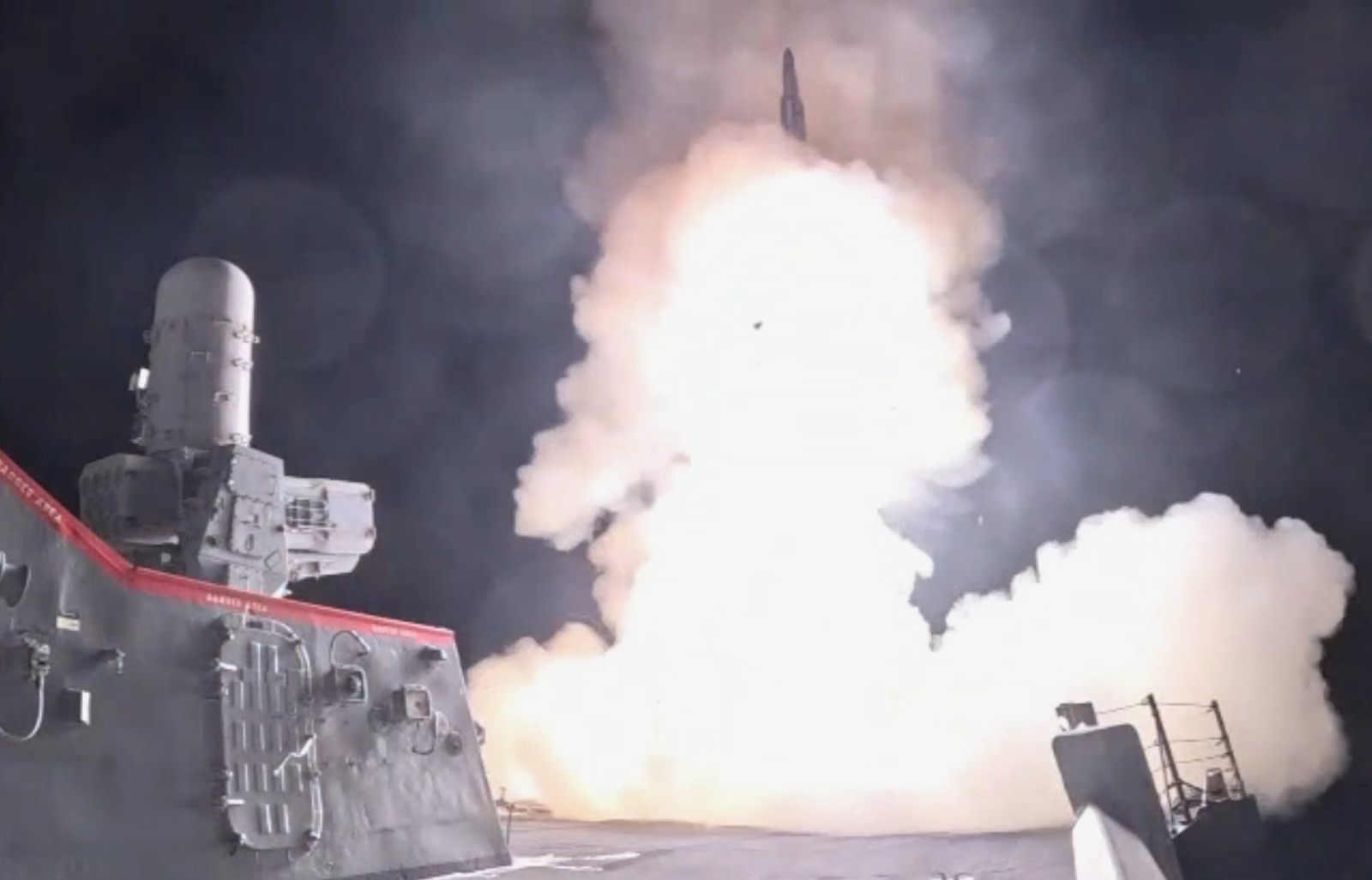 USS Bulkeley engages multiple Iranian ballistic missiles in defense of Israel from the Eastern Mediterranean Sea - October 1, 2024 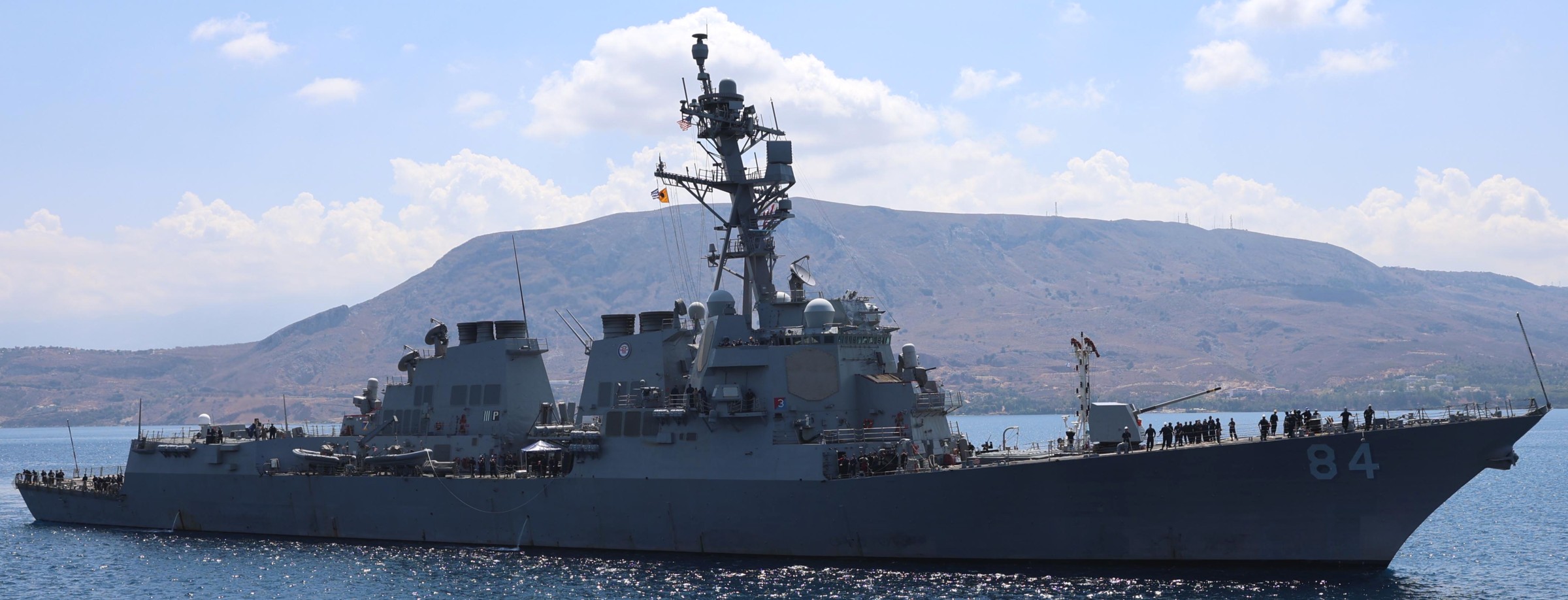 Naval Support Activity Souda Bay, Crete, Greece - August 2024 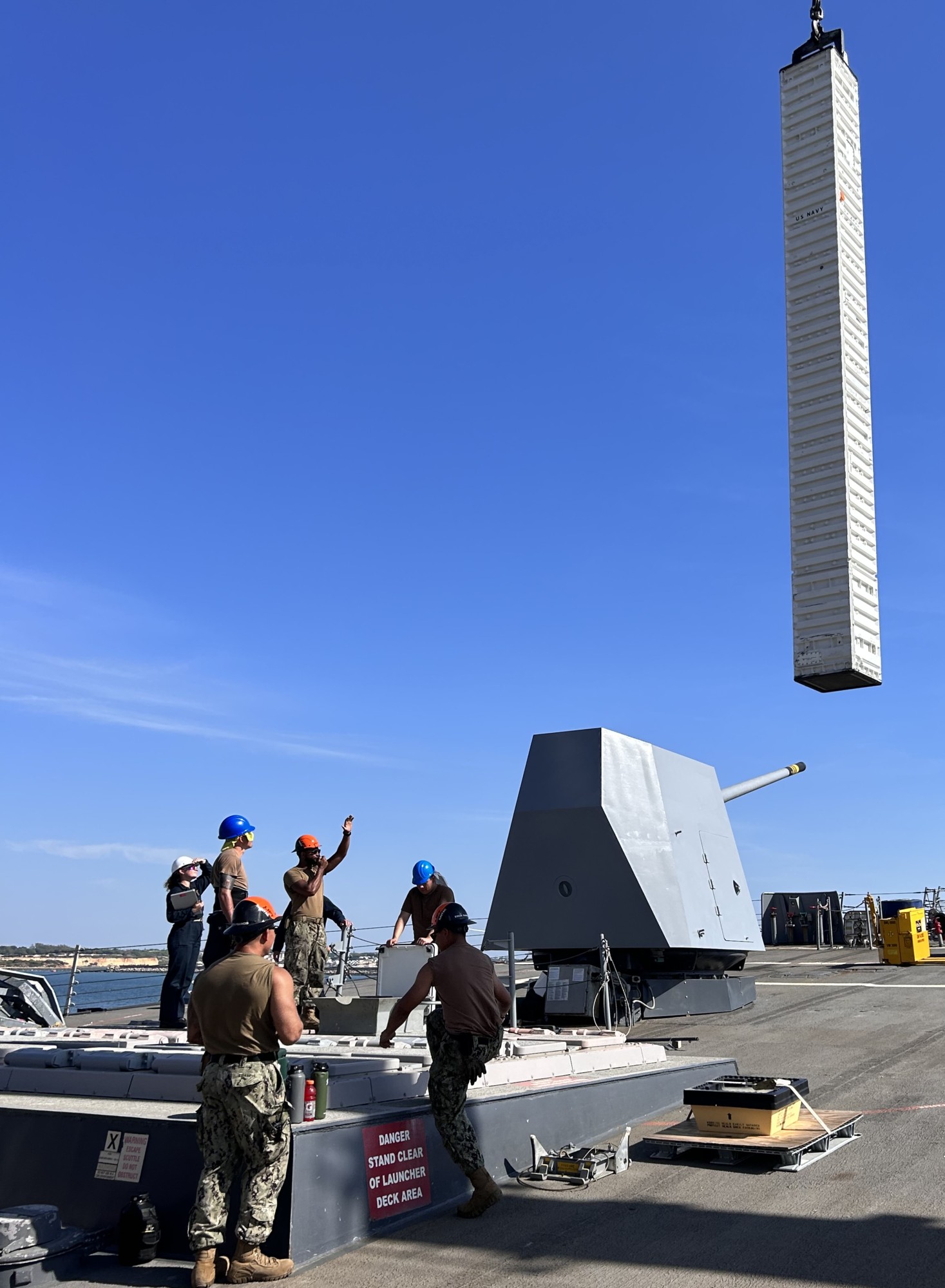 ammunition onload at Naval Station Rota, Spain - October 2023 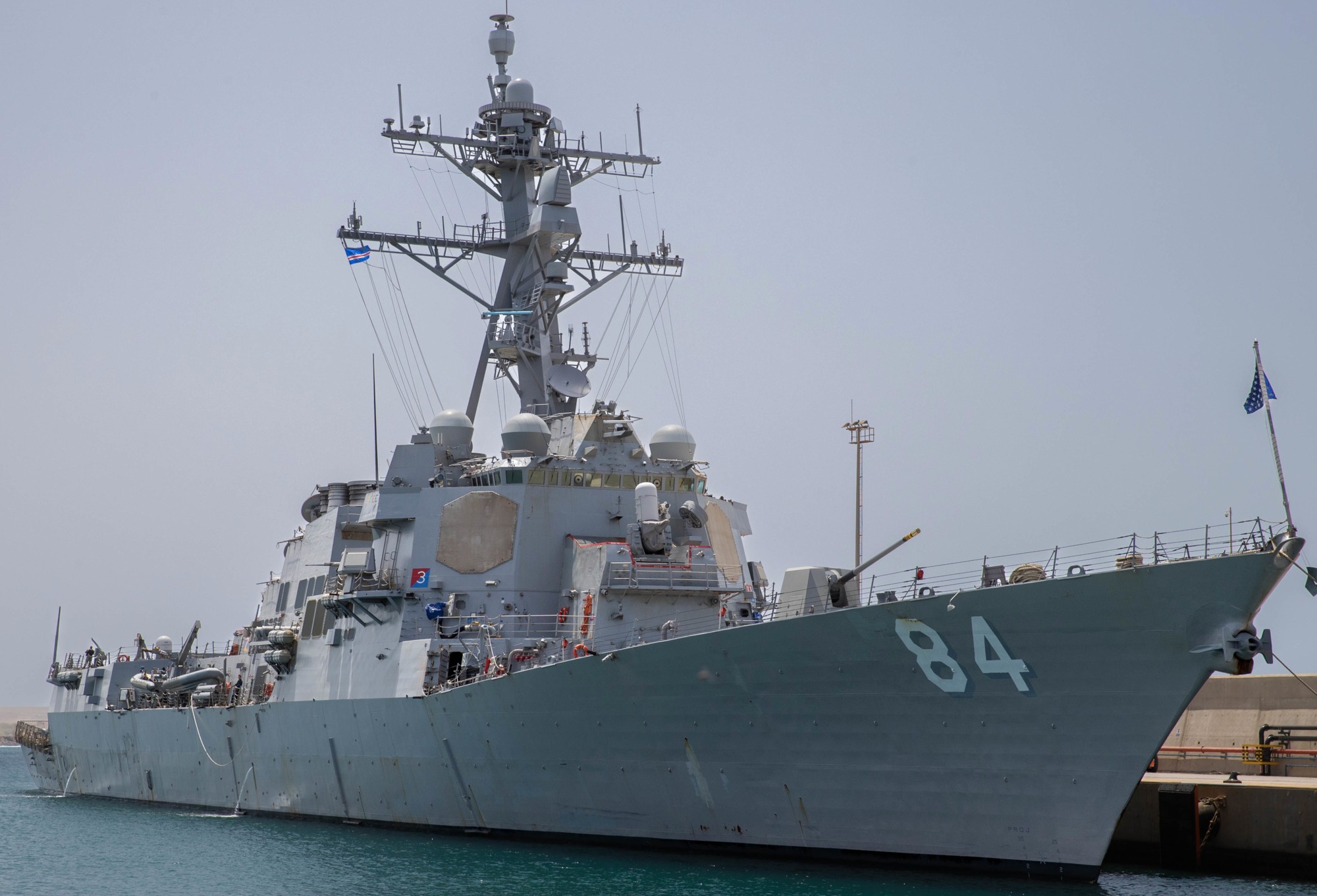 Sal Island, Cape Verde - March 2023  Sal Island, Cape Verde - March 2023 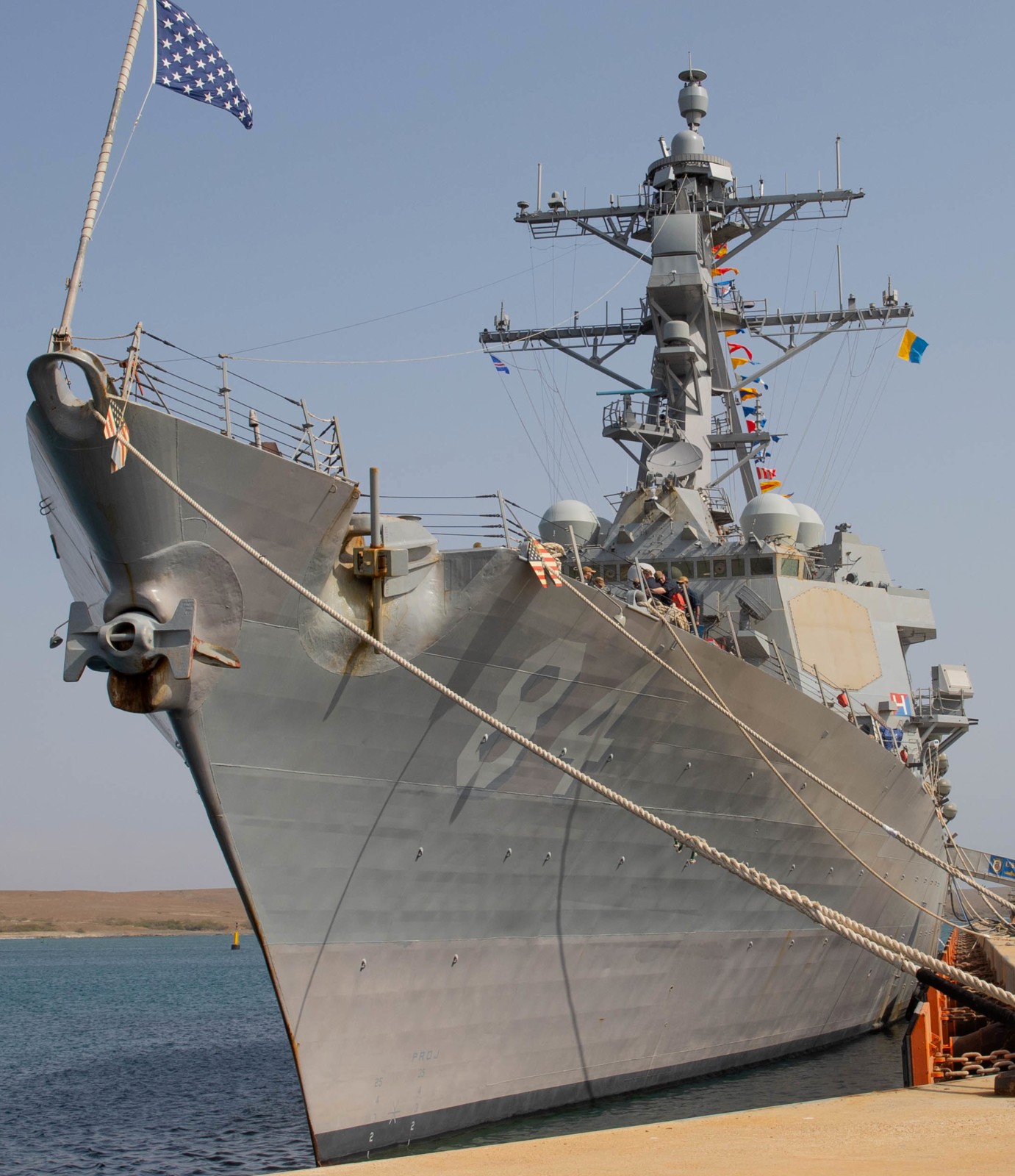 Sal Island, Cape Verde - March 2023 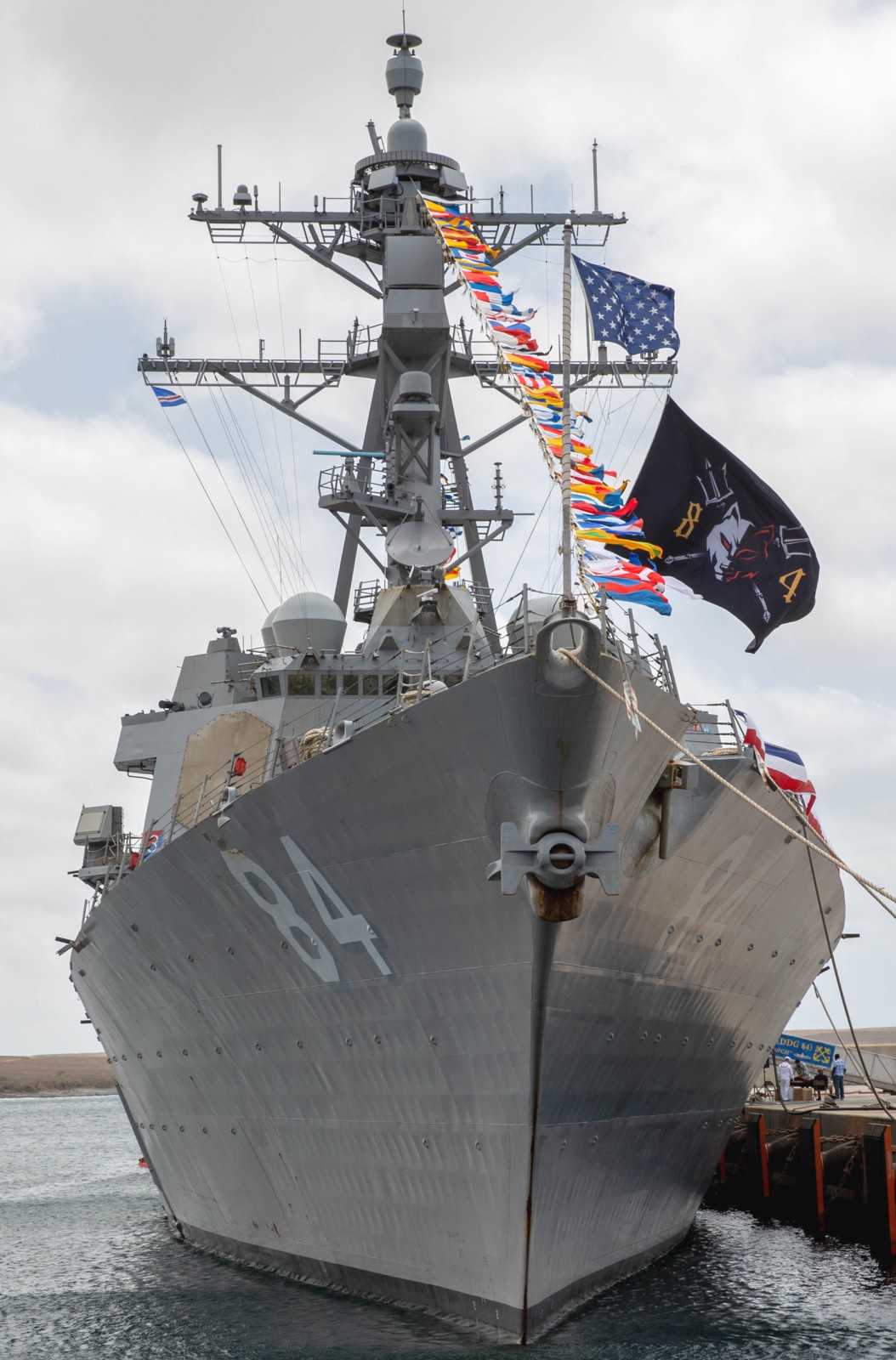 Sal Island, Cape Verde - March 2023  alongside USS George H. W. Bush (CVN 77) - Adriatic Sea - January 2023  moored at Naval Station Rota, Spain - December 2022  arriving at her new homeport, Naval Station Rota, Spain - August 17, 2022 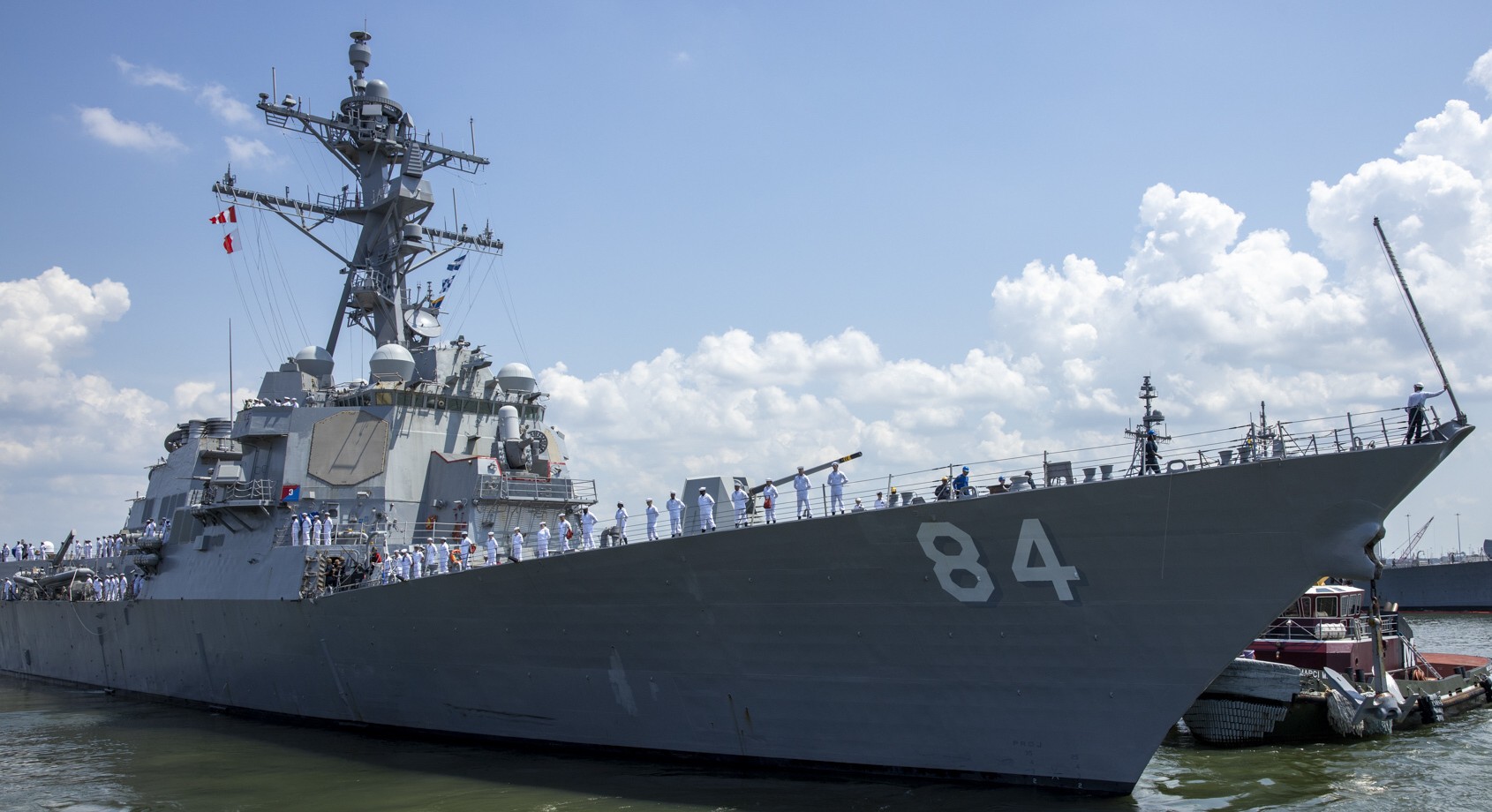 departing Naval Station Norfolk, Virginia for a homeport shift to Rota, Spain - August 4, 2022 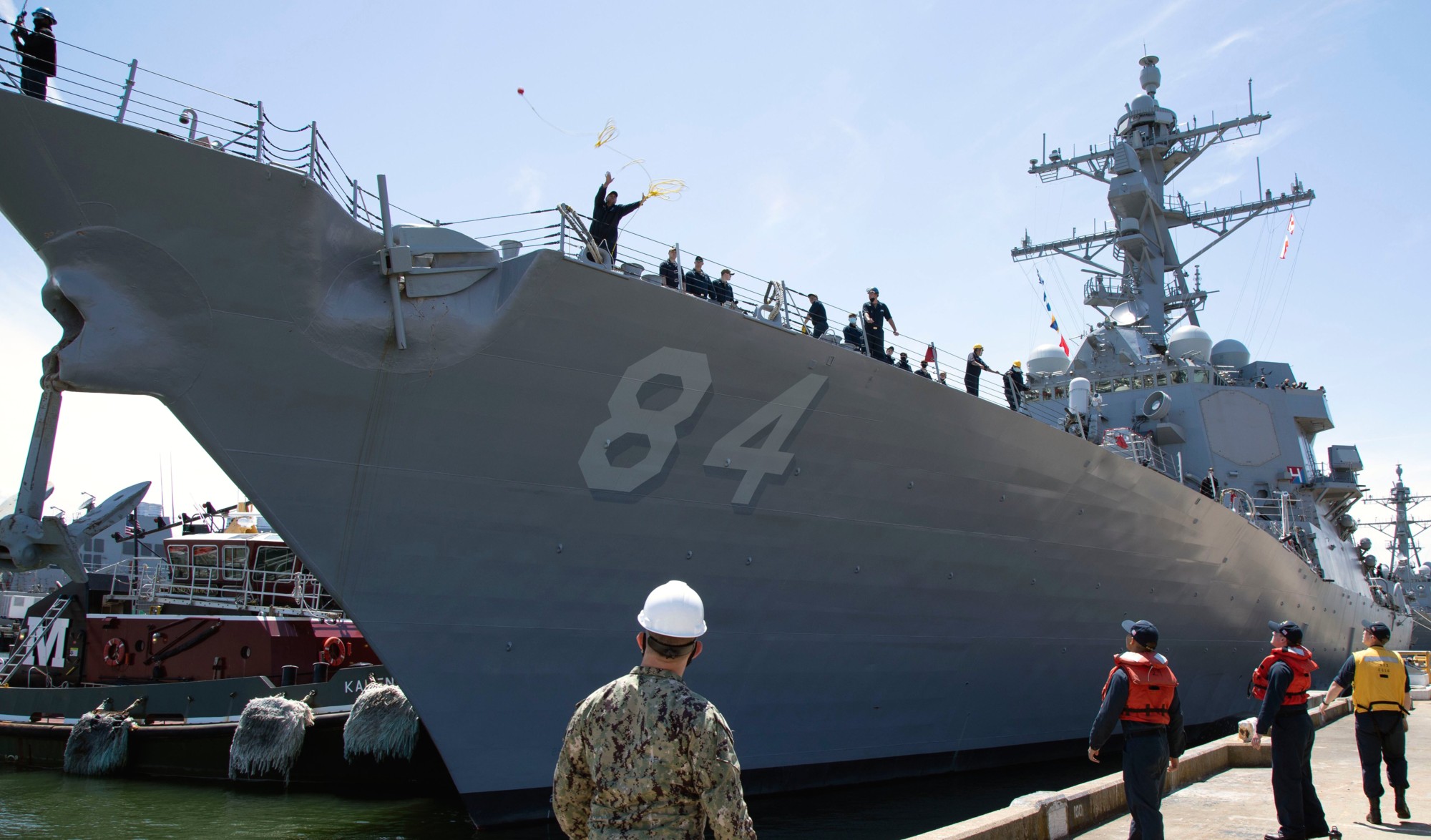 Naval Station Norfolk, Virginia - May 2021  in dry dock at BAE Systems Ship Repair, Norfolk, Virginia - November 2019  returning to Naval Station Norfolk, Virginia - November 11, 2018 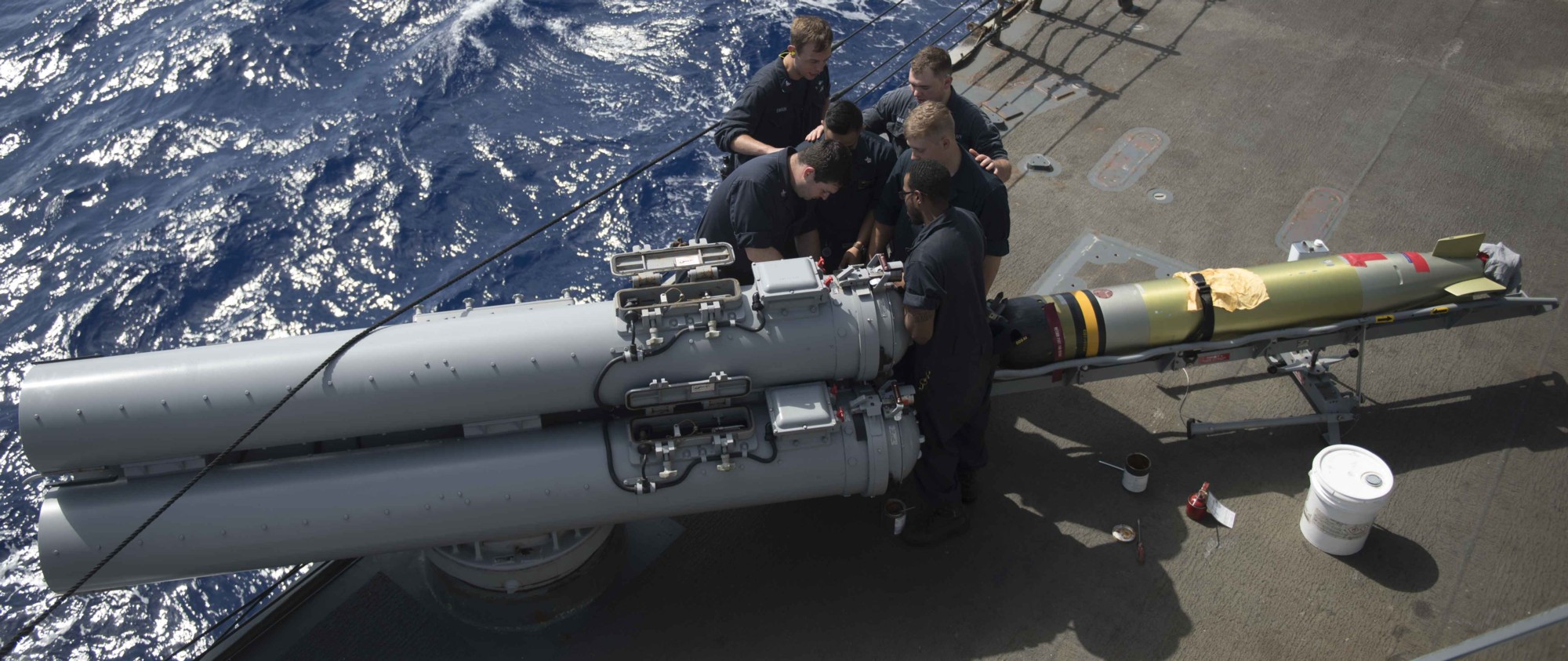 torpedo exercise - Mediterranean Sea - September 2018 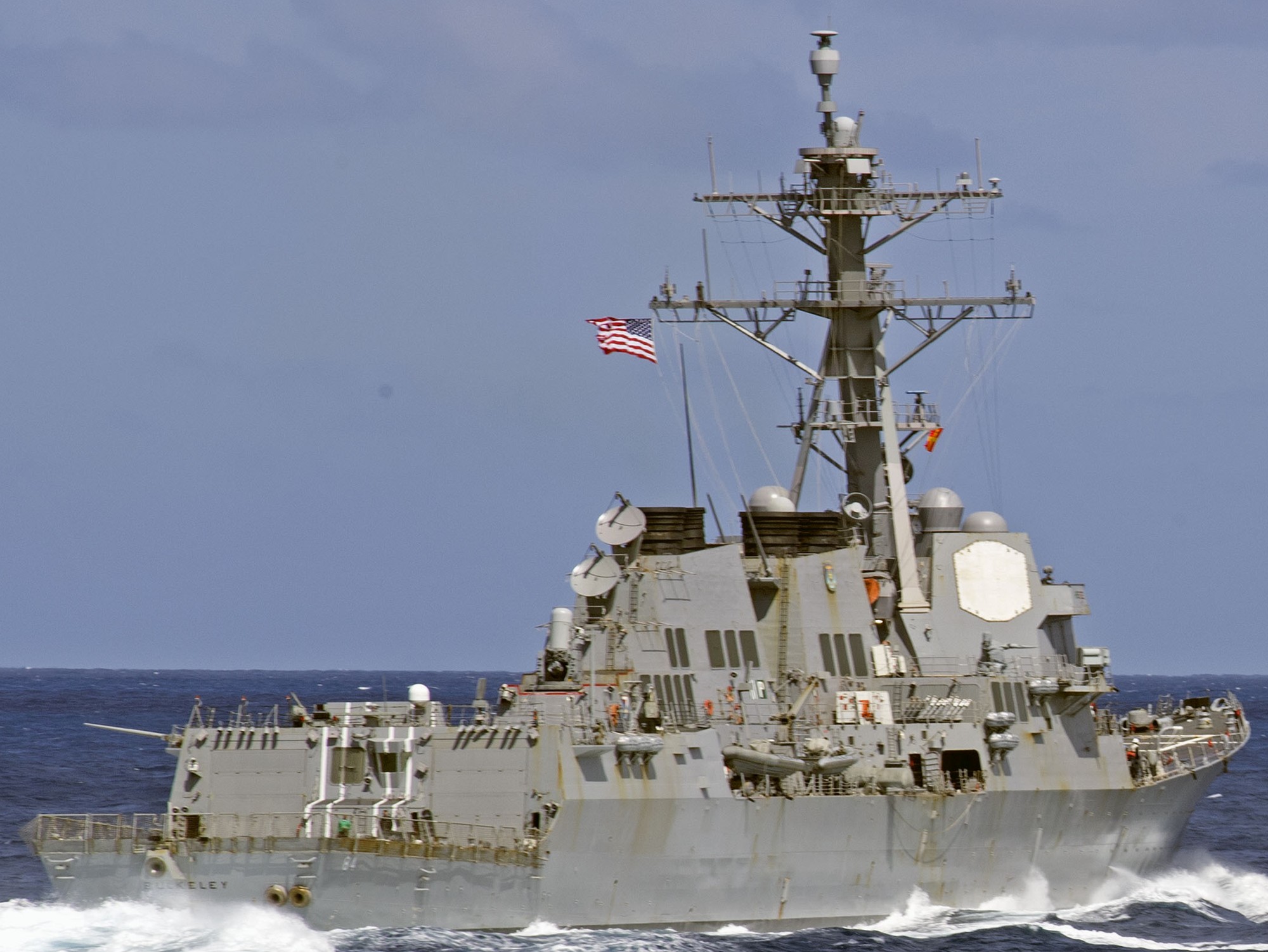 Atlantic Ocean - April 2018 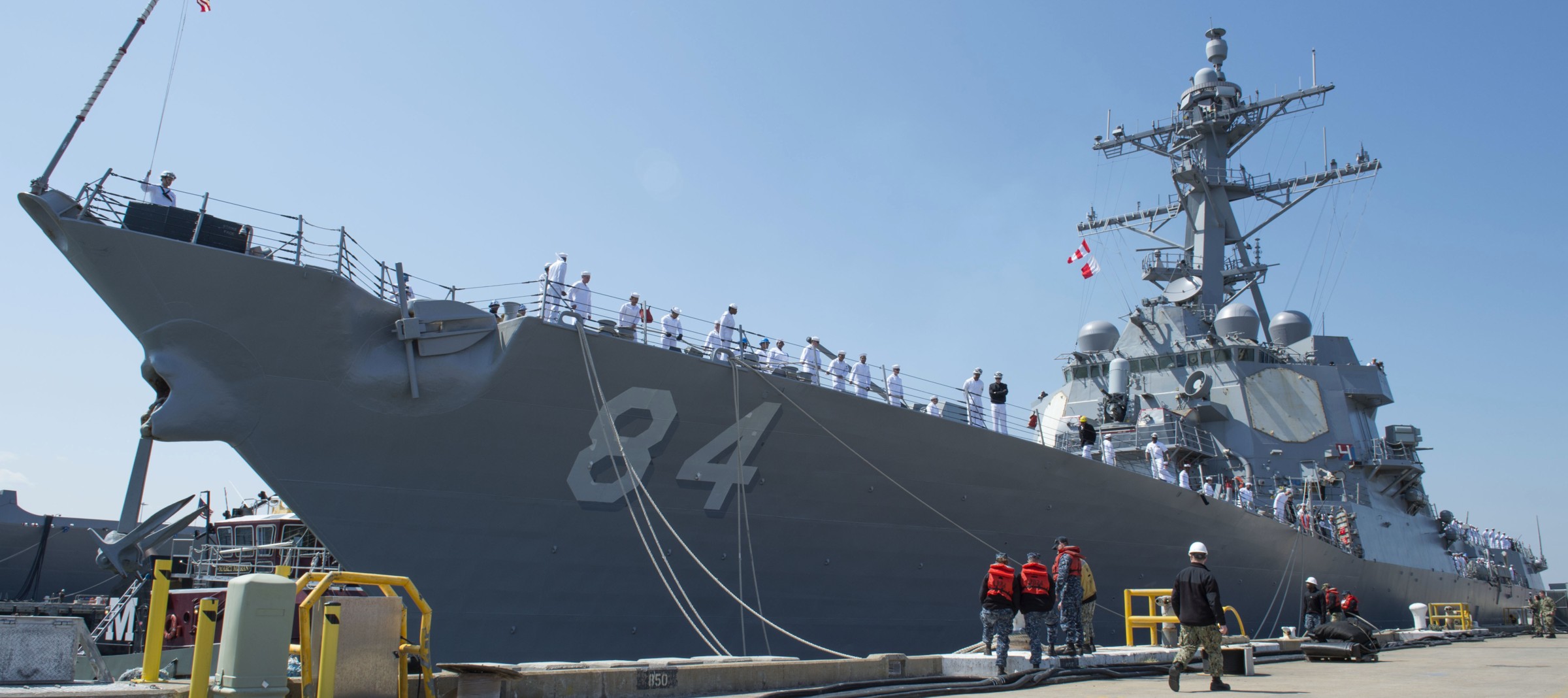 departing Naval Station Norfolk, Virginia - April 11, 2018 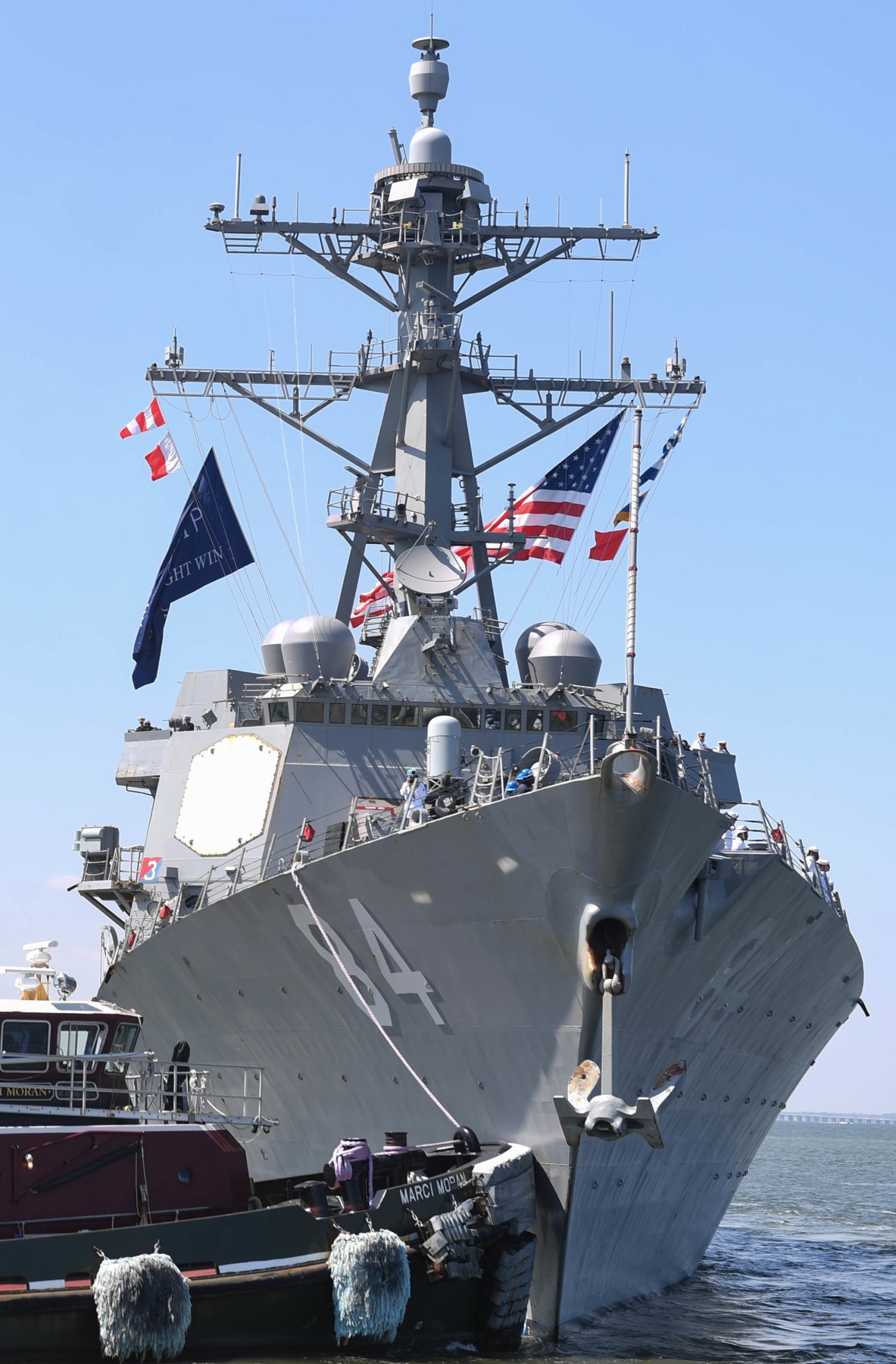 departing Naval Station Norfolk, Virginia - April 11, 2018 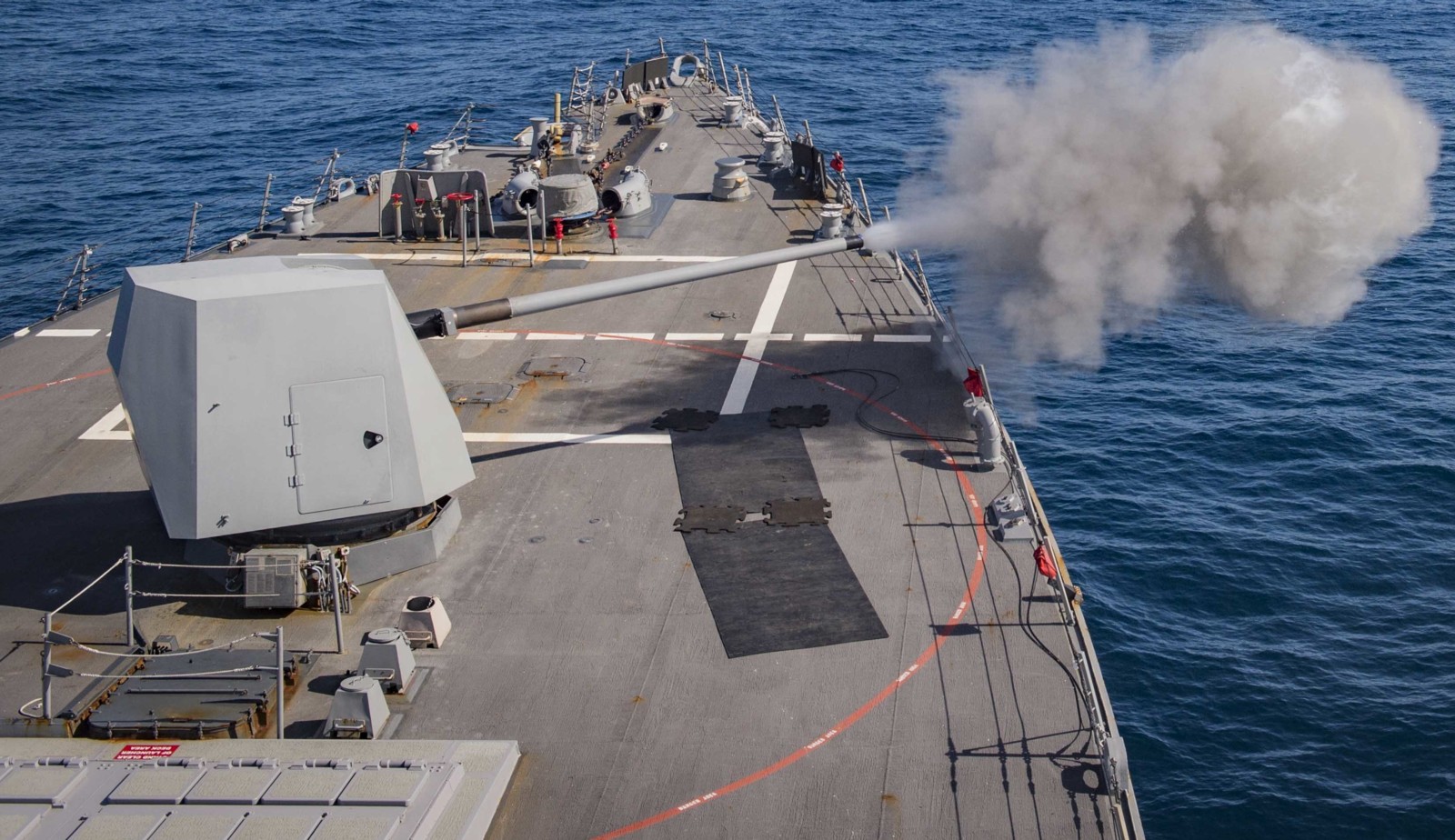 Mk.45 Mod.4 gun fire - Atlantic Ocean - February 2018 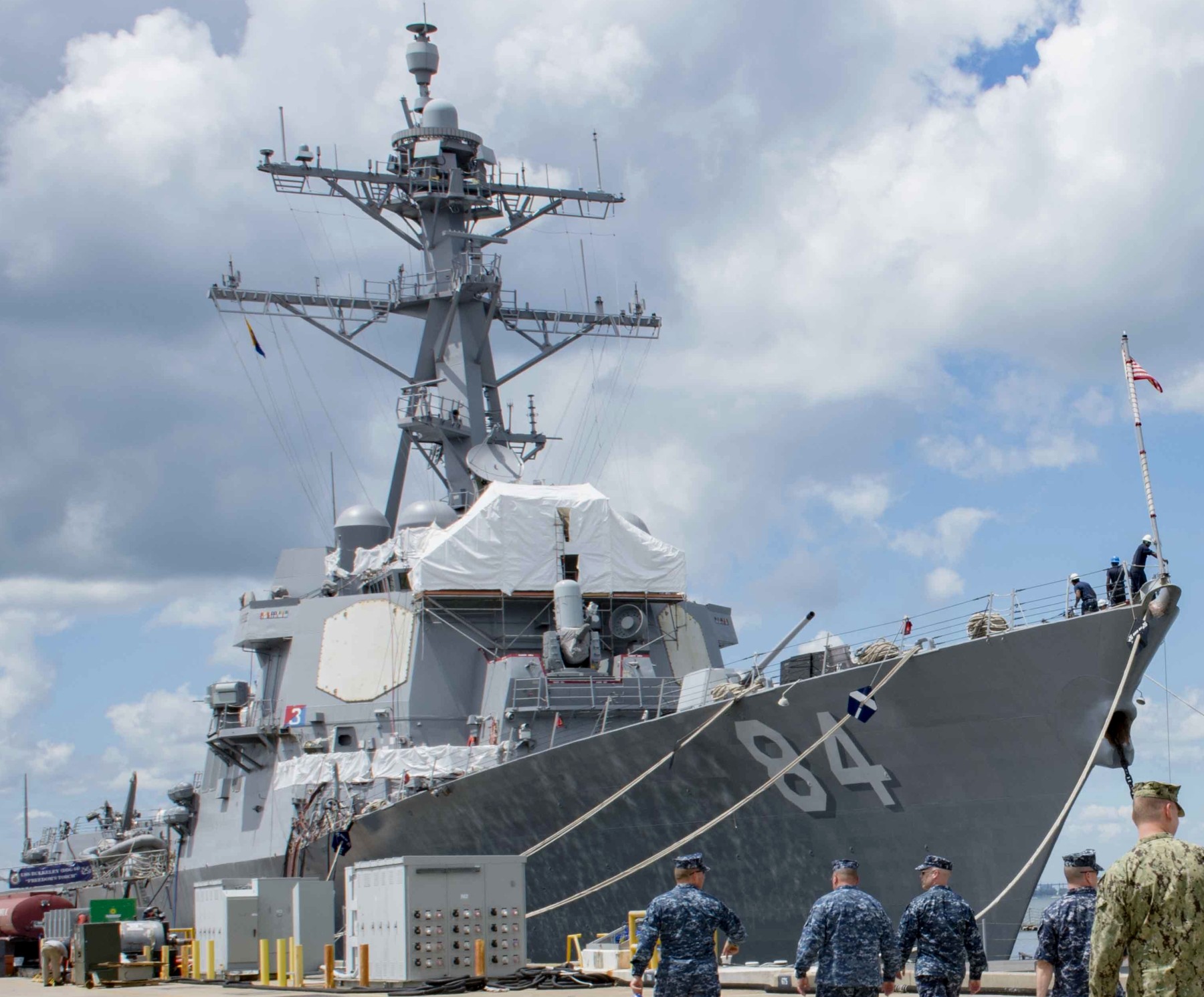 moored at Naval Station Norfolk, Virginia - August 2017 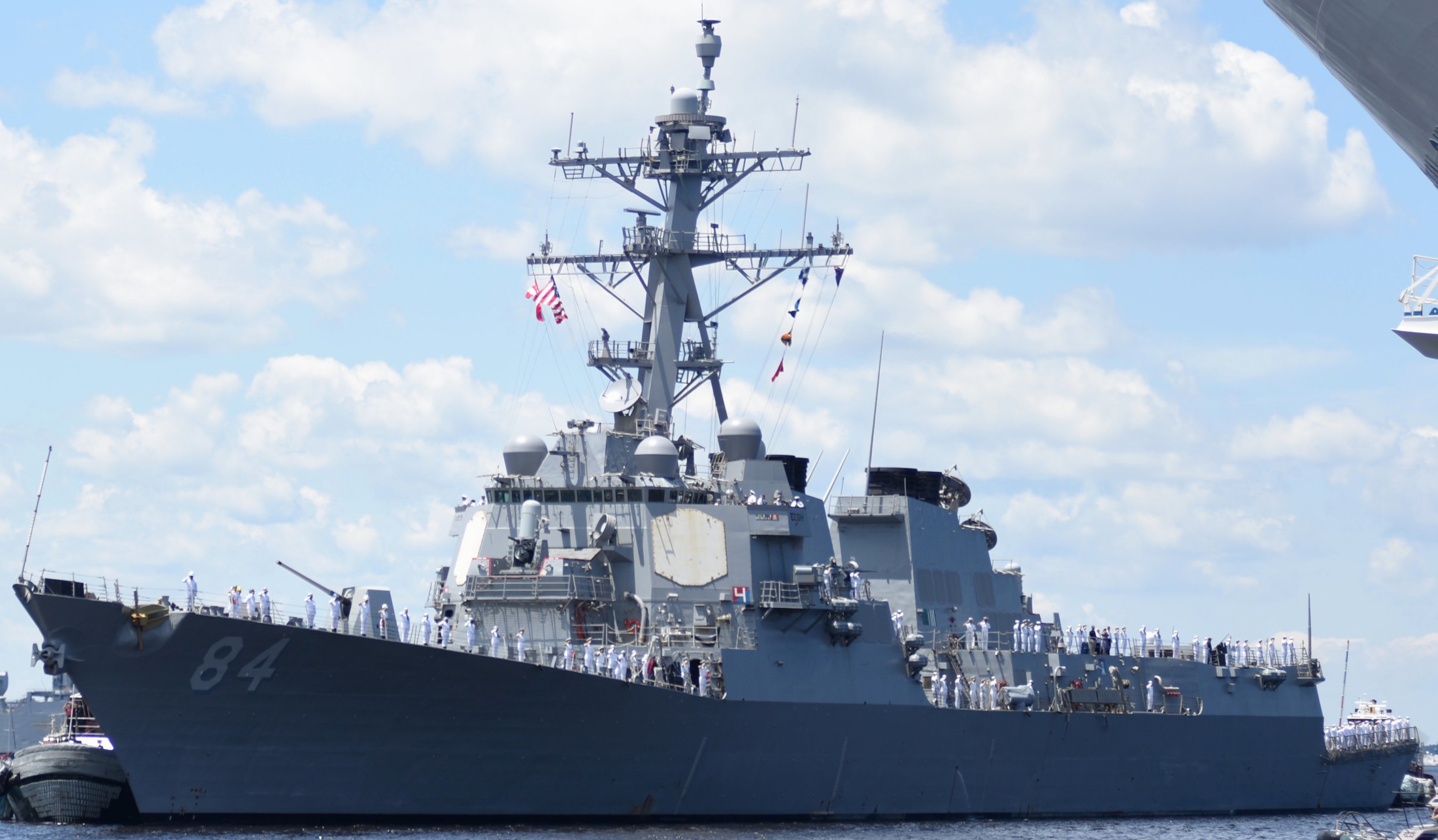 Norfolk Harbor Fest, Virginia - June 2017  during Exercise Cutlass Fury - Atlantic Ocean - September 2016 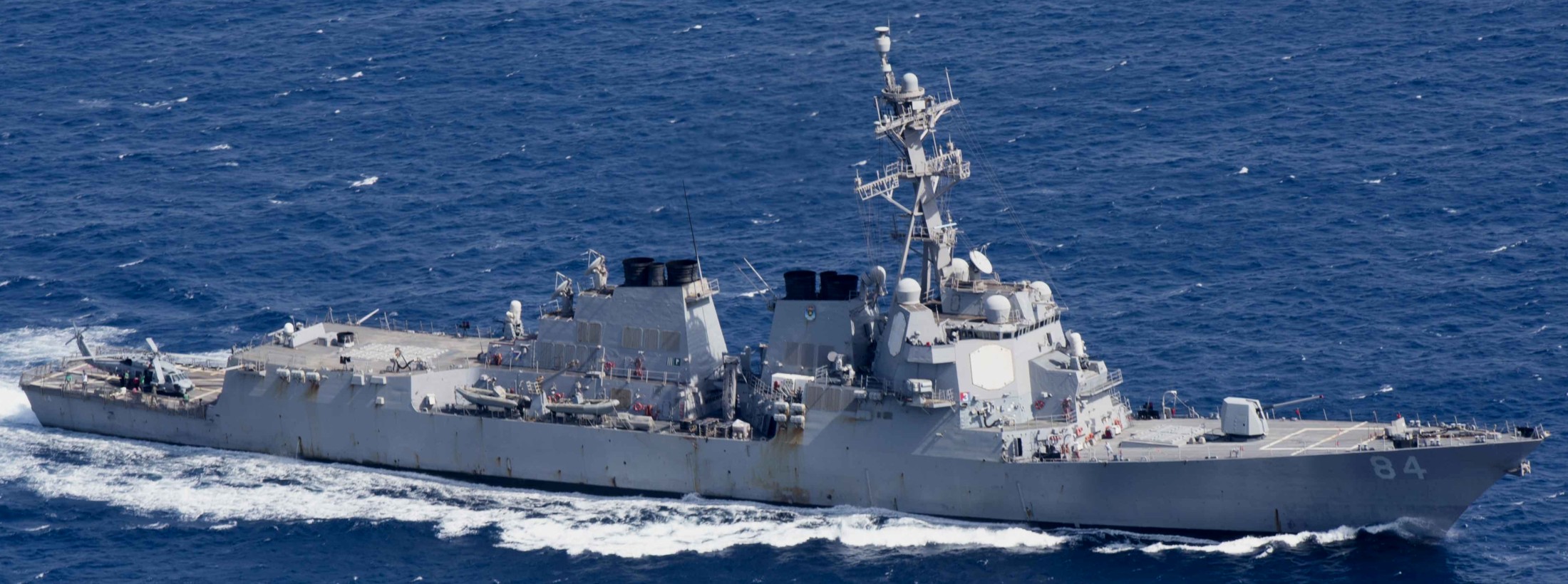 Atlantic Ocean - July 2016 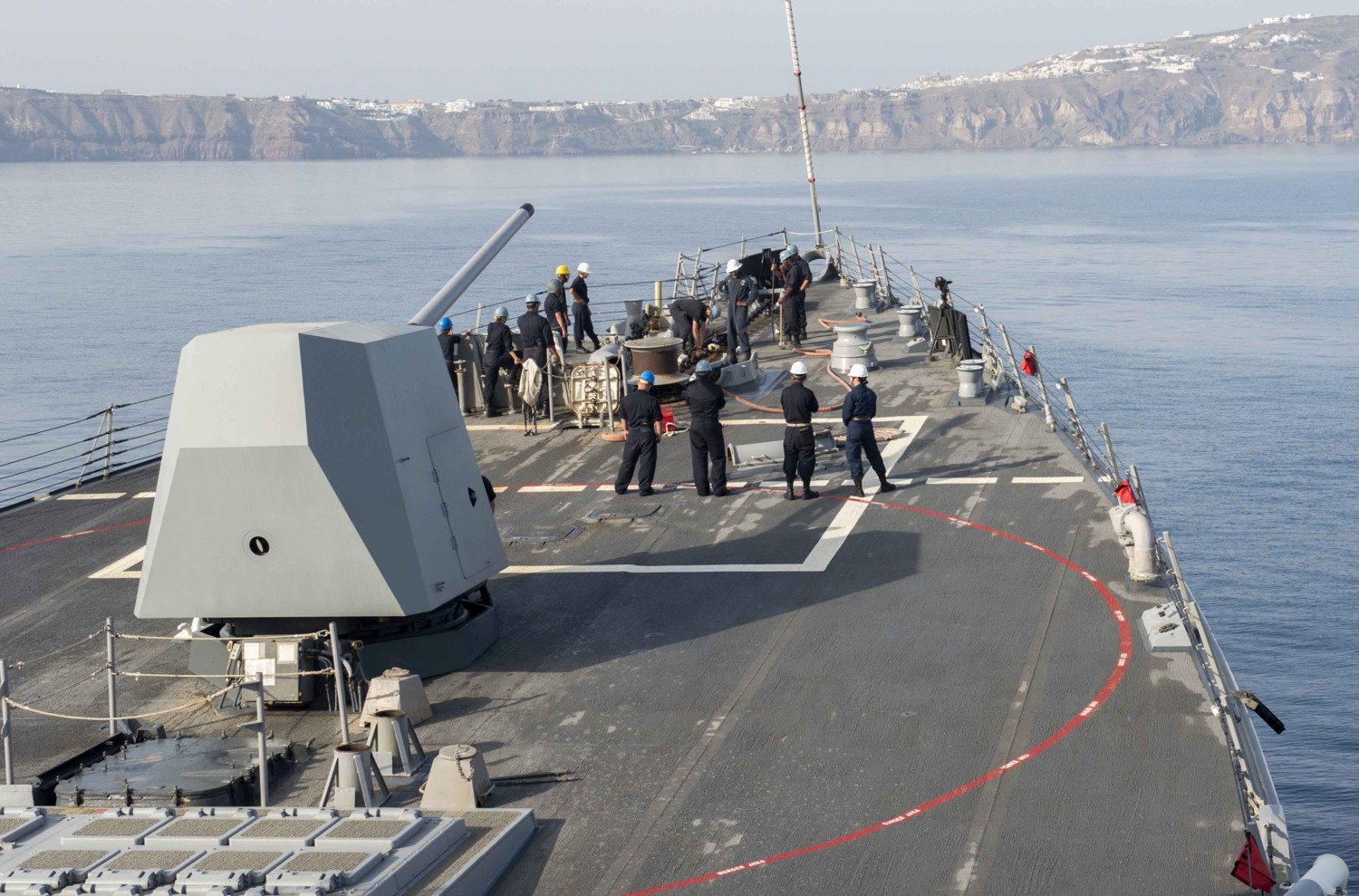 off Santorini, Greece - June 2016 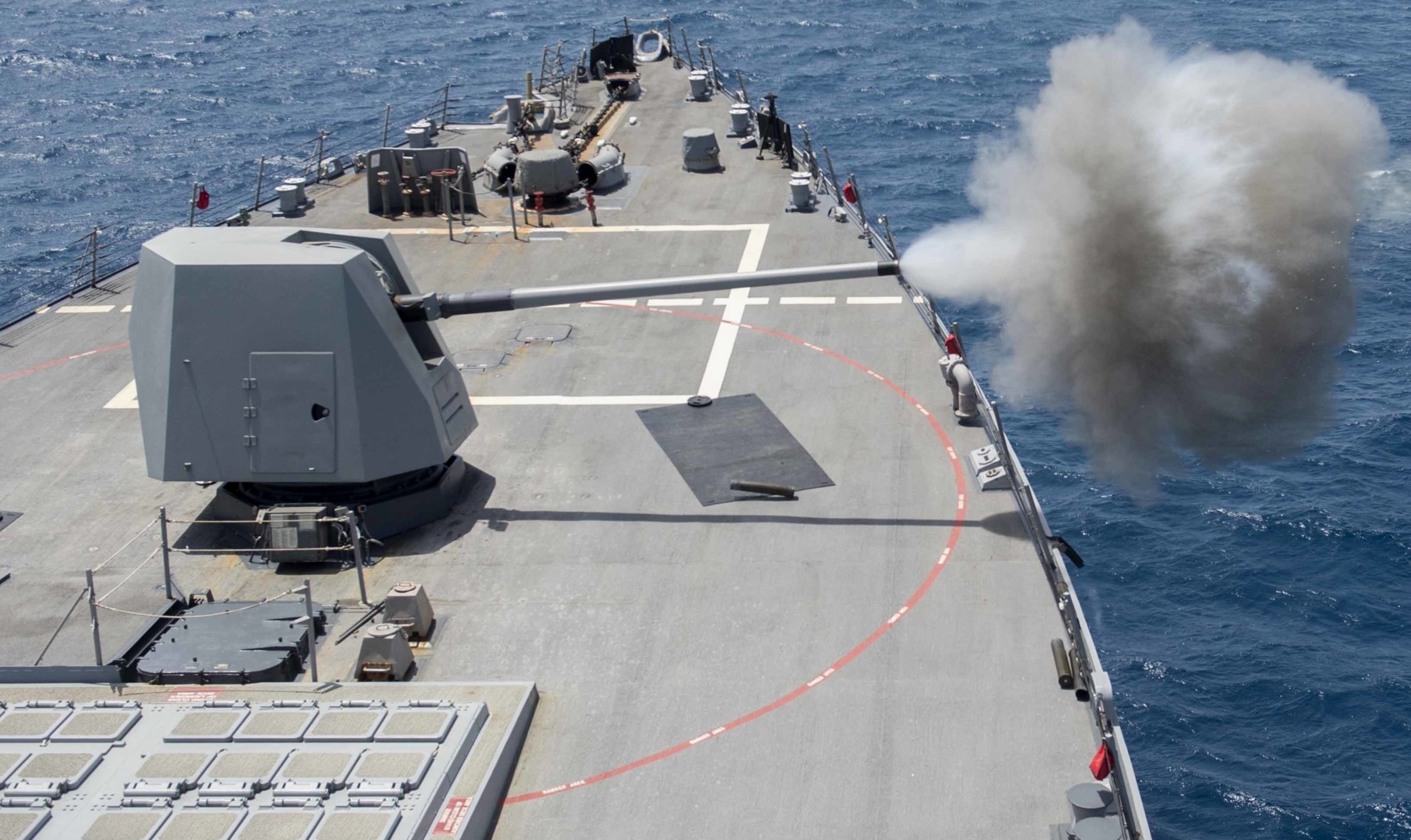 Mk.45 Mod.4 gun fire - Red Sea - June 2016 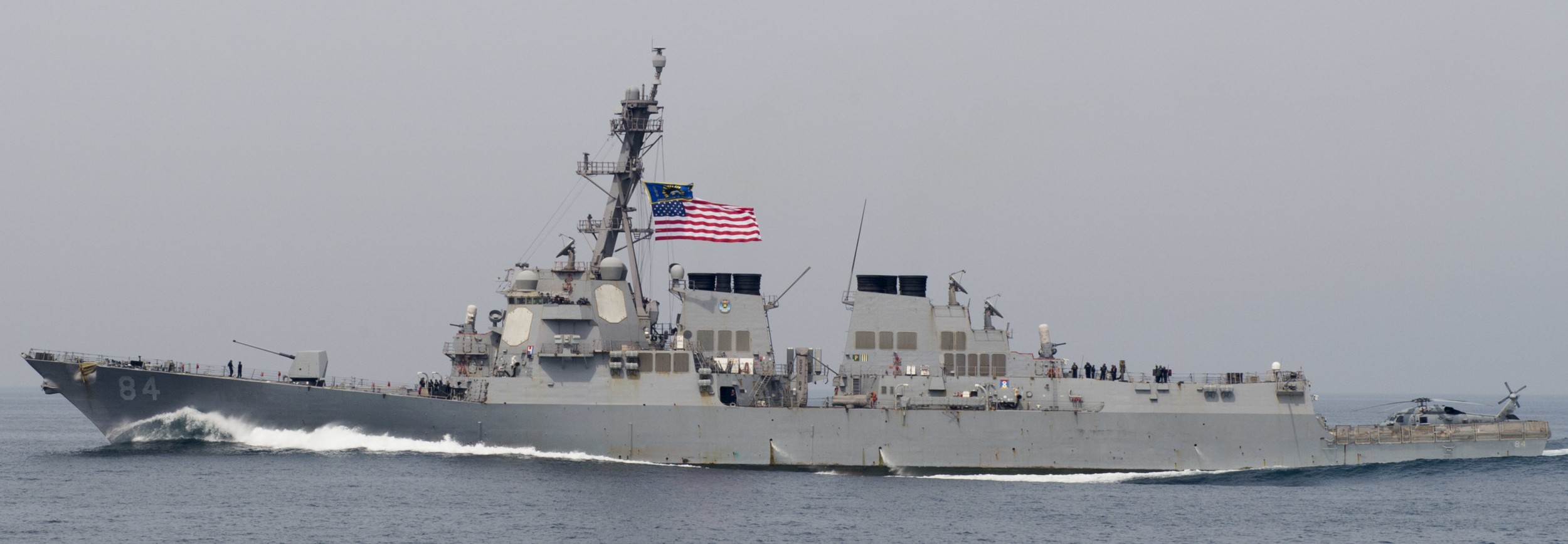 Arabian Sea - March 2016 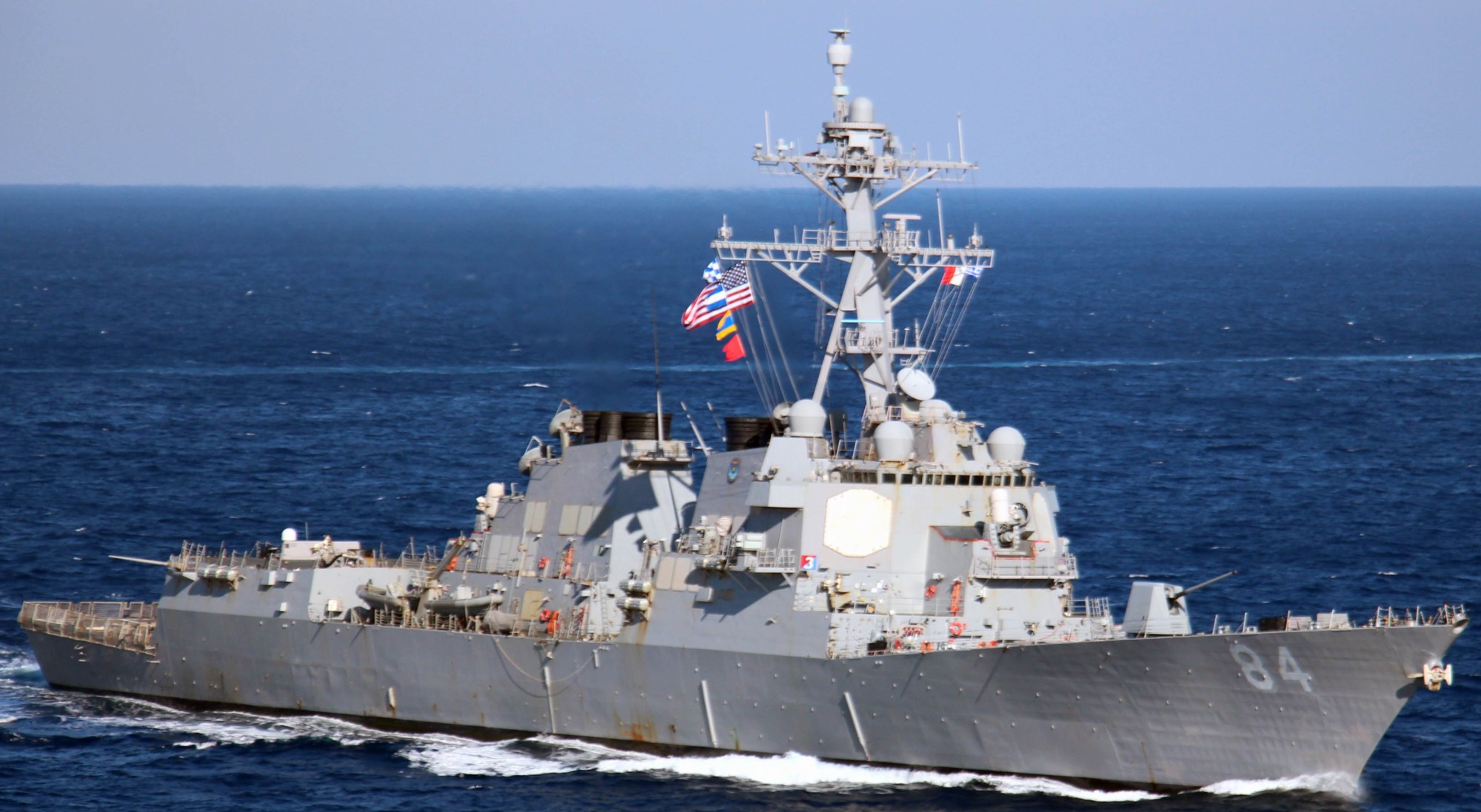 Aegean Sea - December 2015 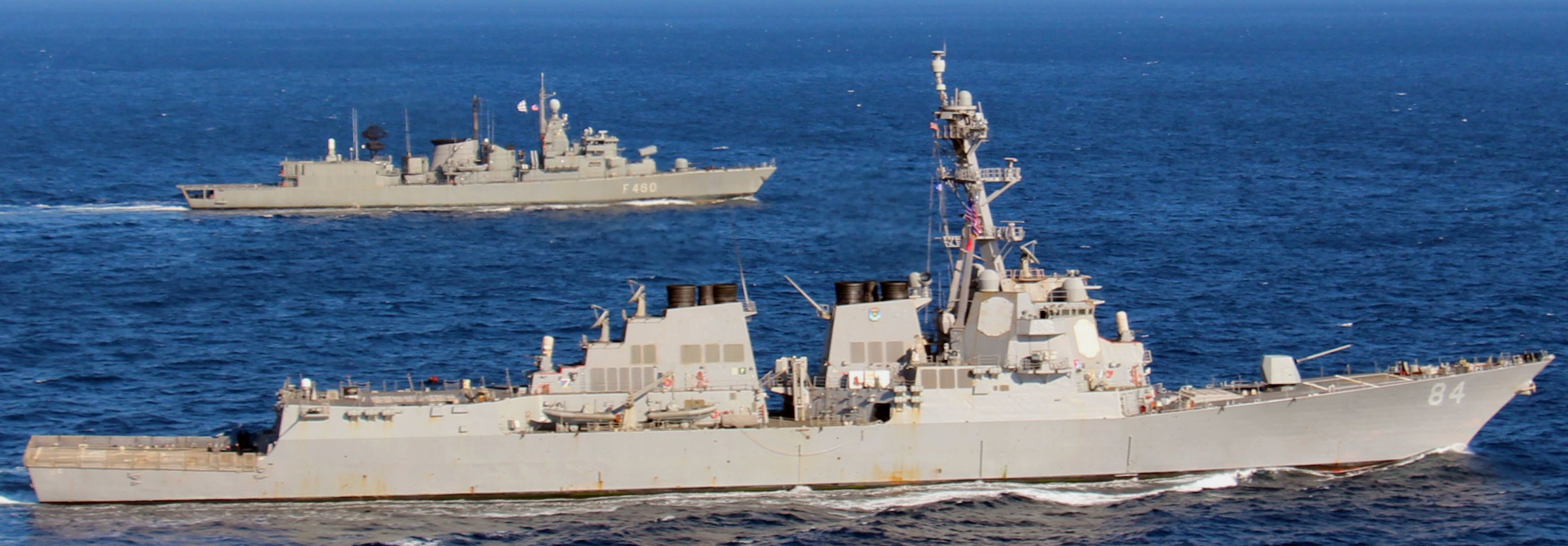 Aegean Sea - December 2015 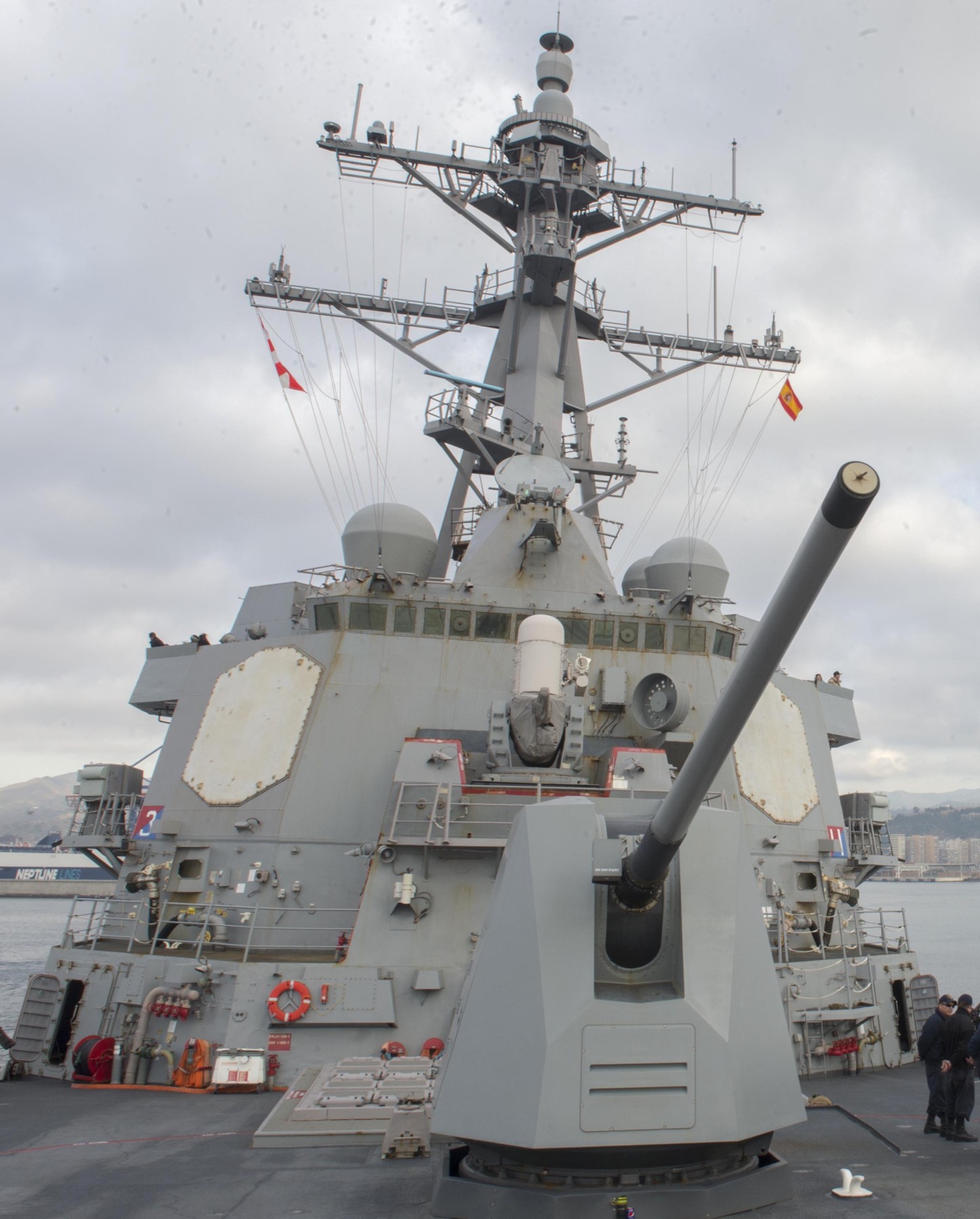 Malaga, Spain - December 2015 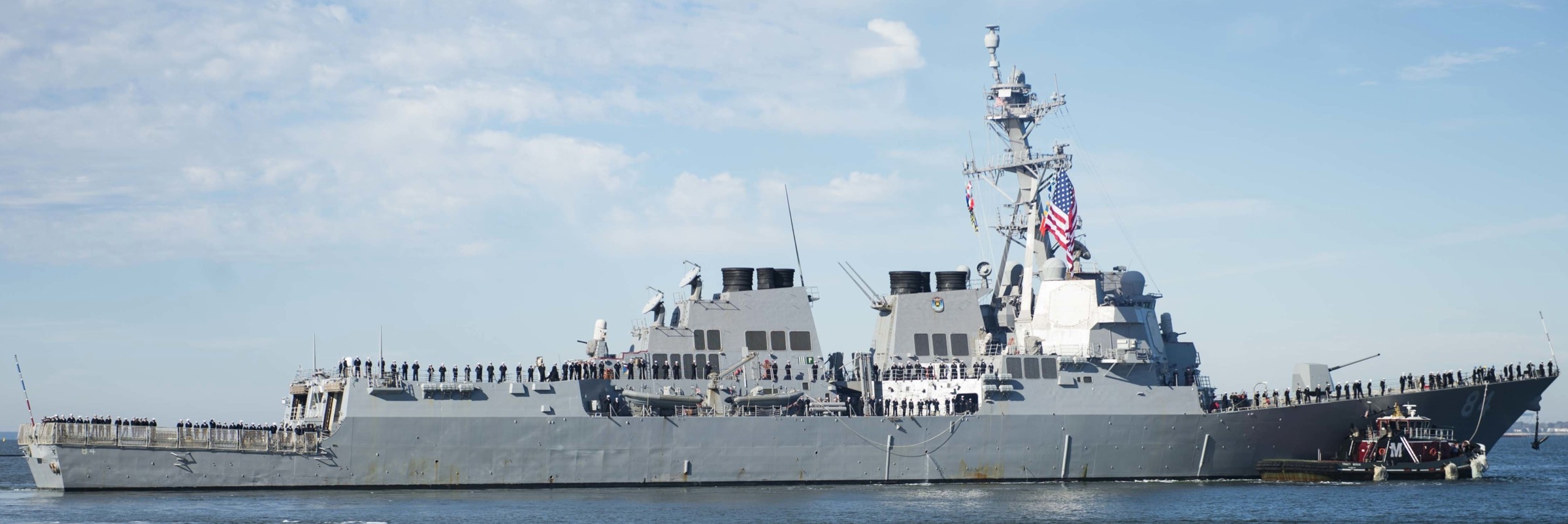 departing Naval Station Norfolk, Virginia - November 16, 2015  departing Naval Station Norfolk, Virginia - November 16, 2015 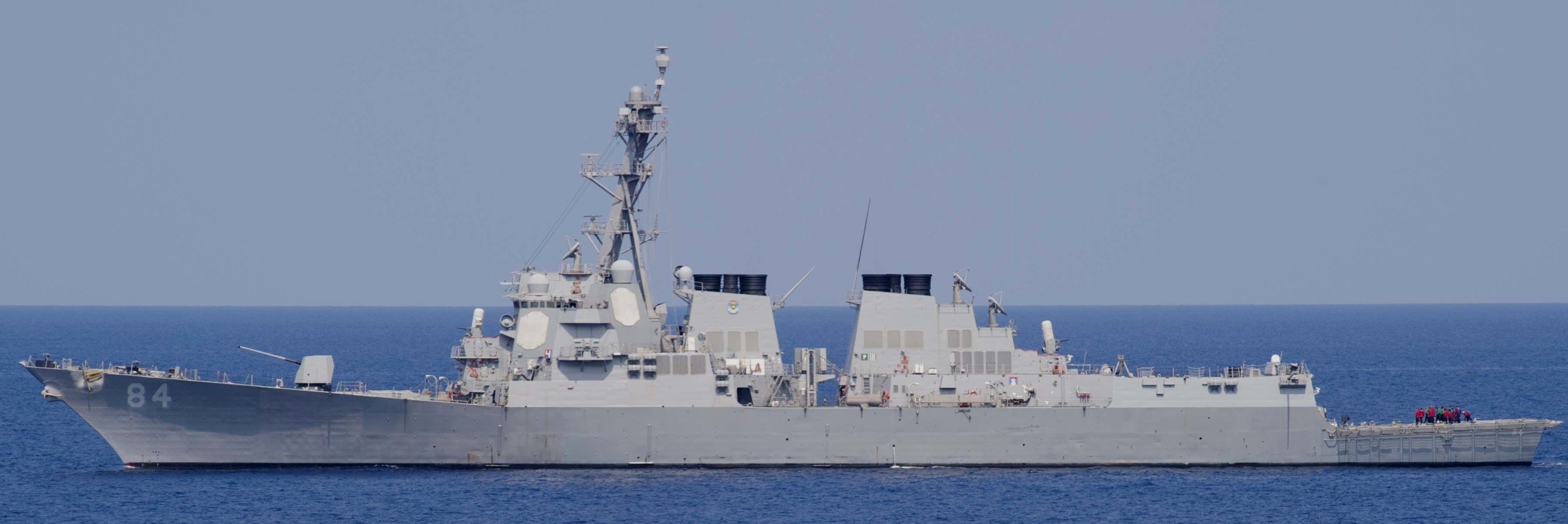 Atlantic Ocean - September 2015  returning to Naval Station Norfolk, Virginia - April 18, 2014 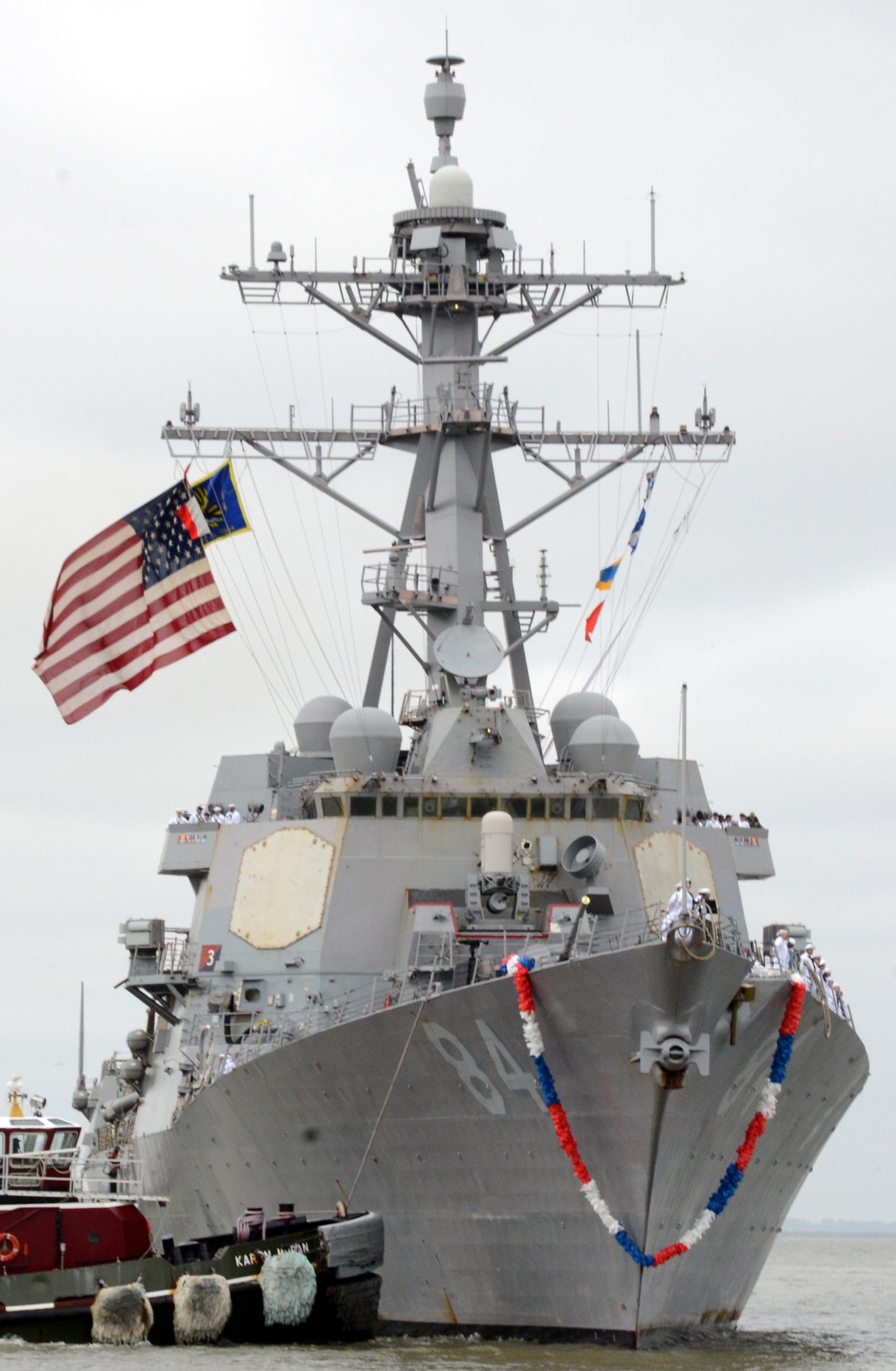 returning to Naval Station Norfolk, Virginia - April 18, 2014 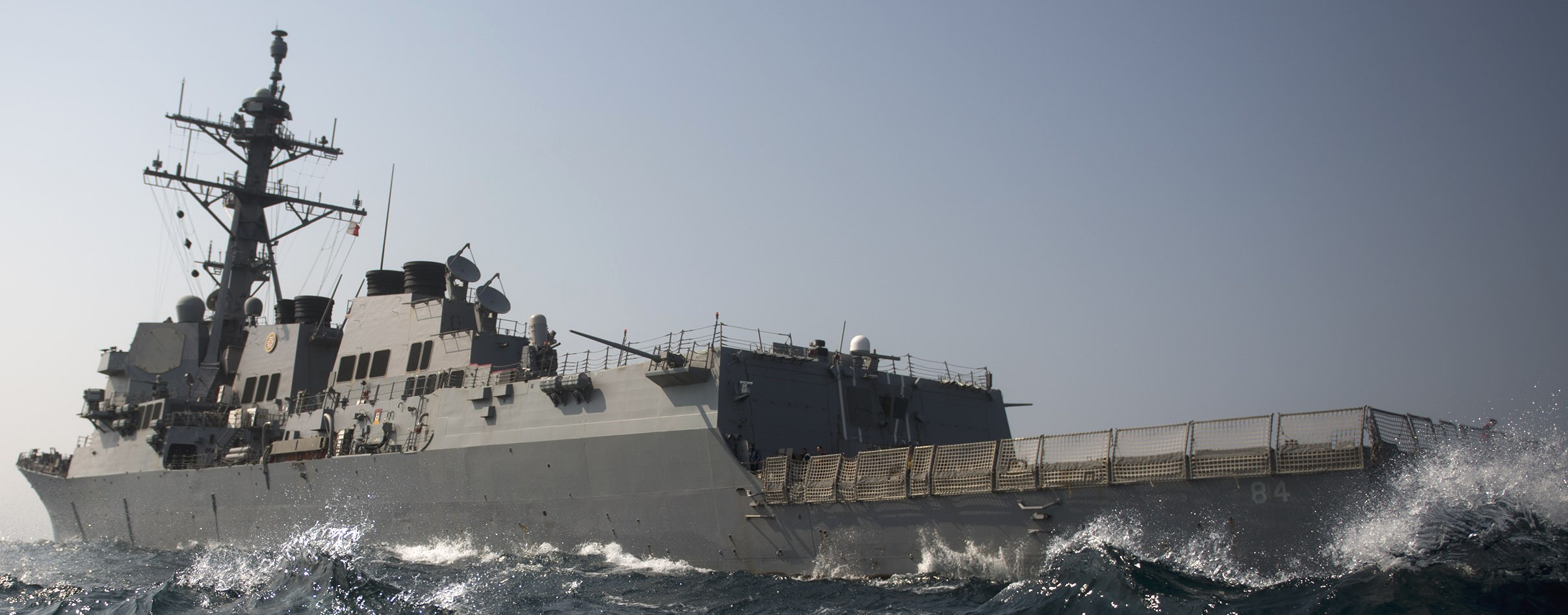 Gulf of Oman - February 2014 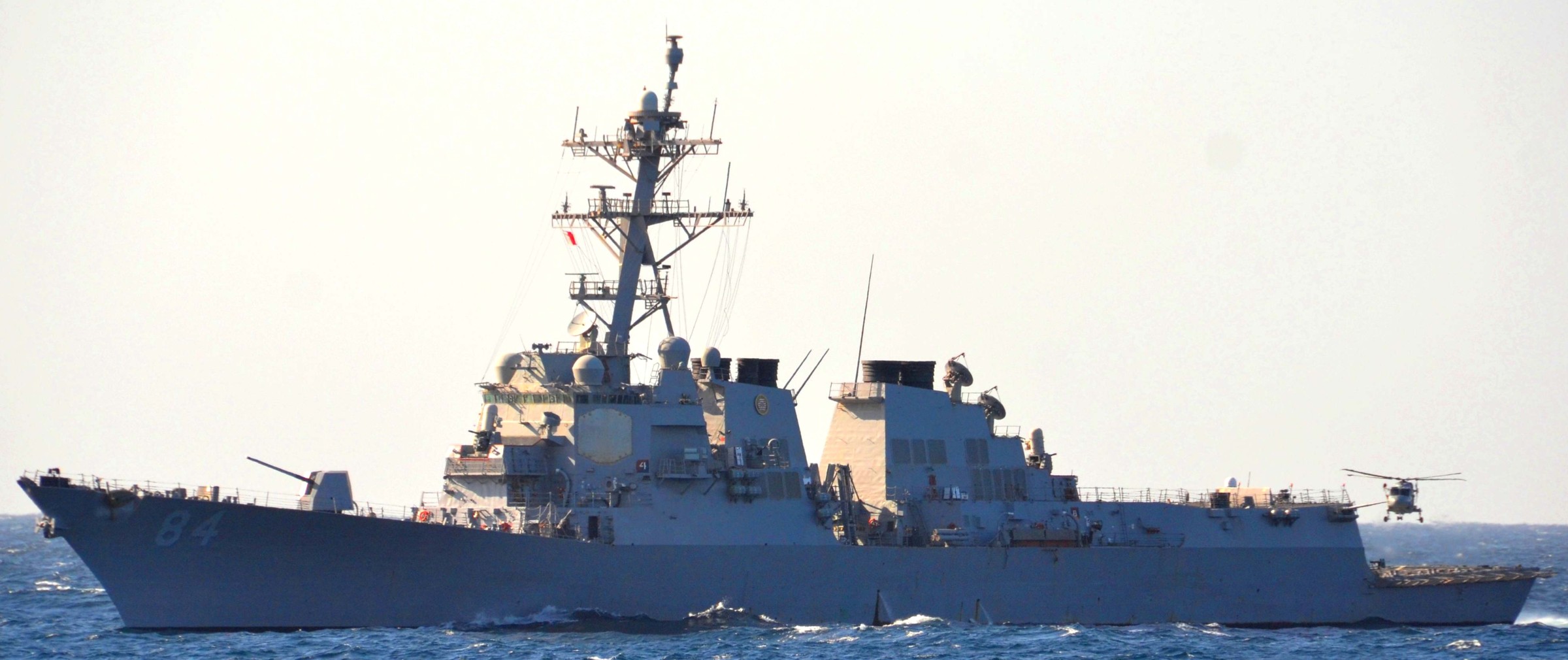 Gulf of Oman - January 2014 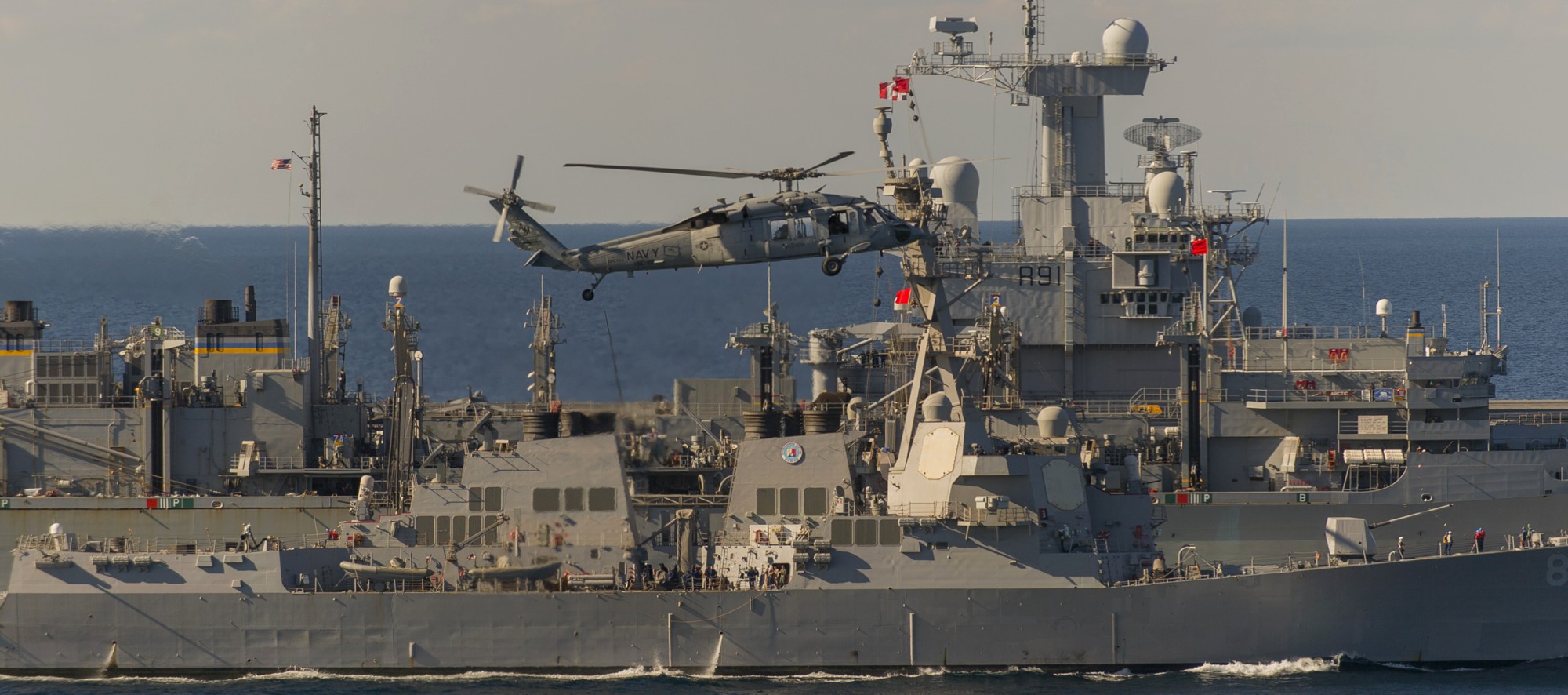 underway replenishment - Gulf of Oman - December 2013 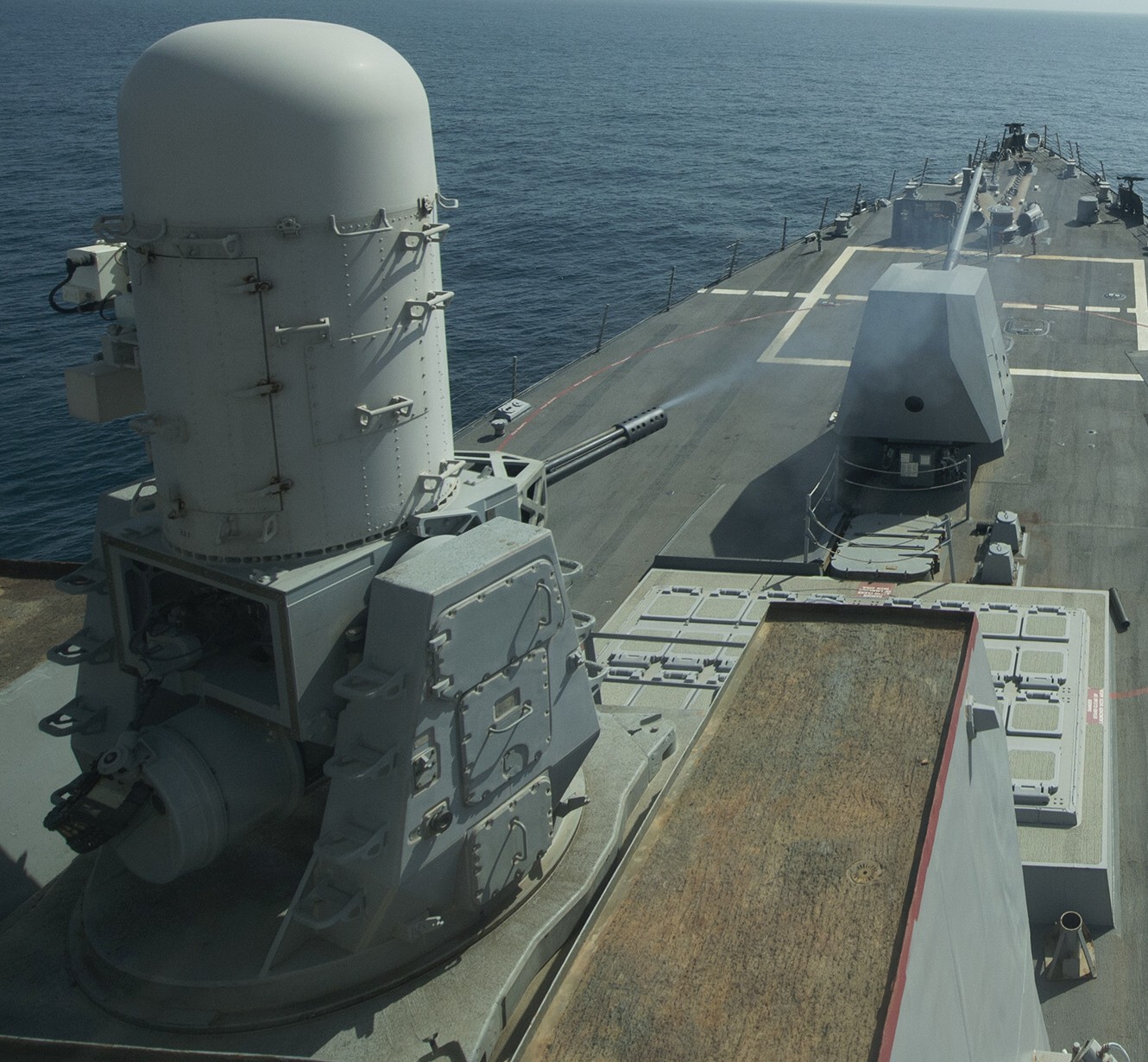 Mk.15 Phalanx CIWS fire exercise - Gulf of Oman - December 2013  Gulf of Oman - November 2013 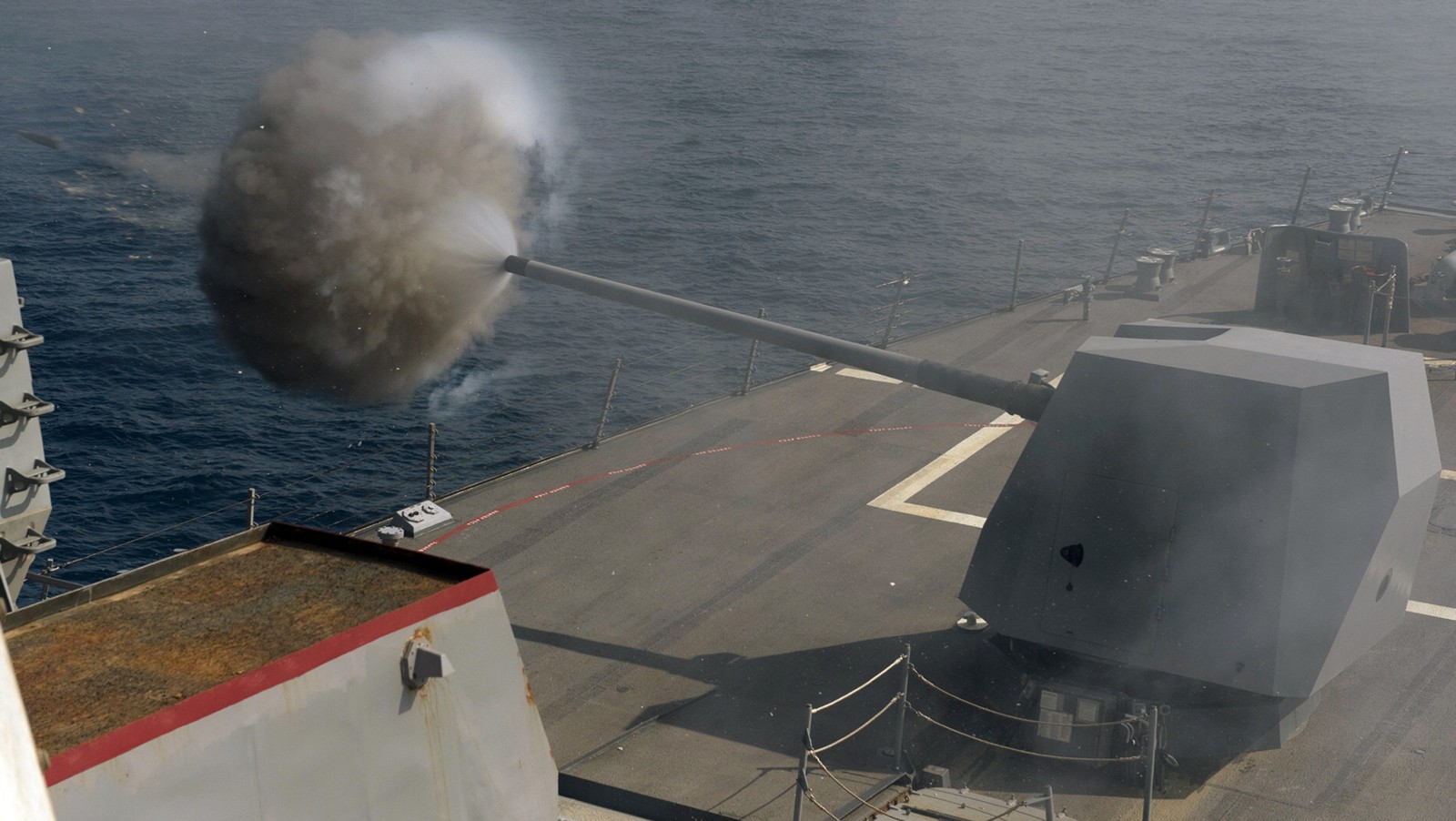 Mk.45 Mod.4 gun fire - Gulf of Oman - October 2013 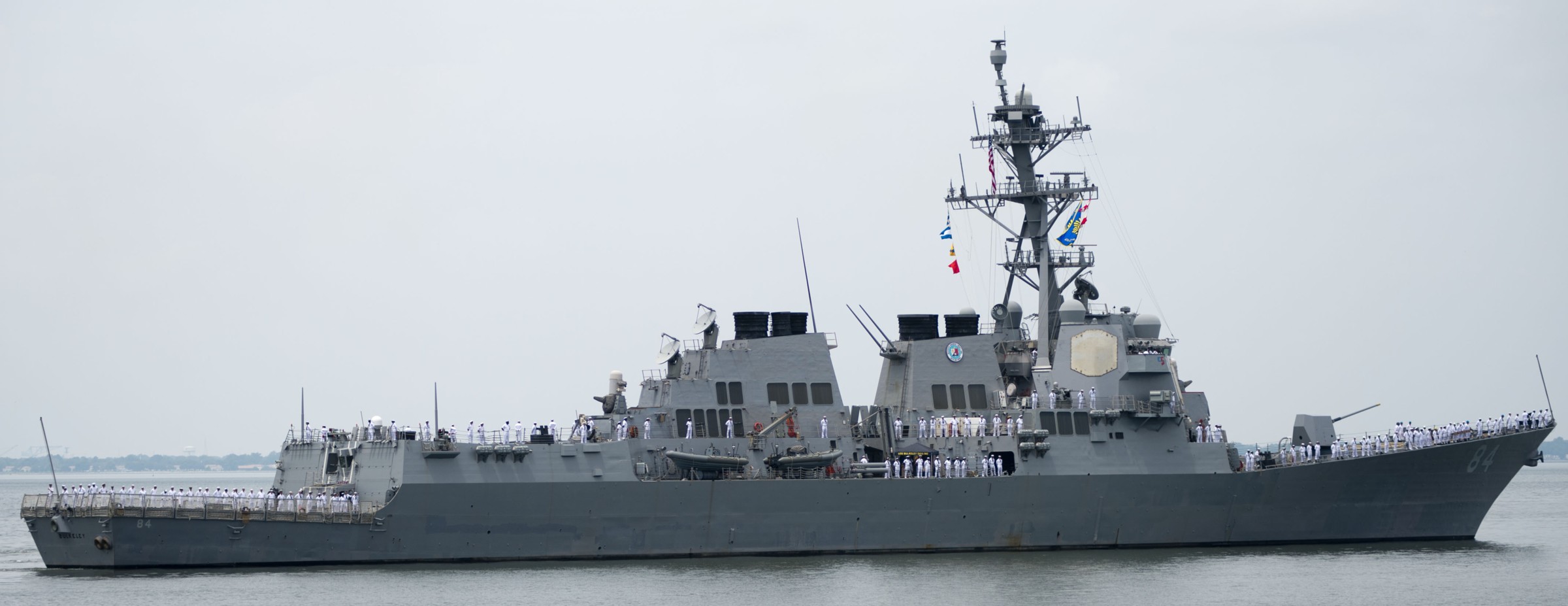 departing Naval Station Norfolk, Virginia - July 22, 2013  departing Naval Station Norfolk, Virginia - July 22, 2013 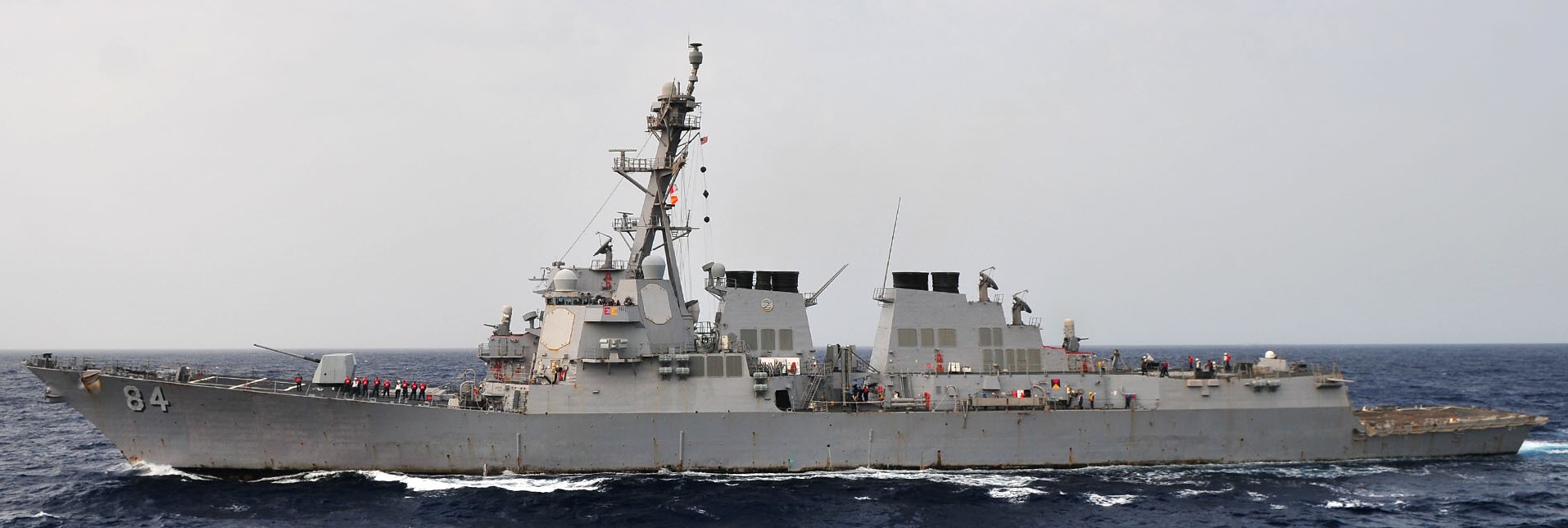 Gulf of Aden - June 2011 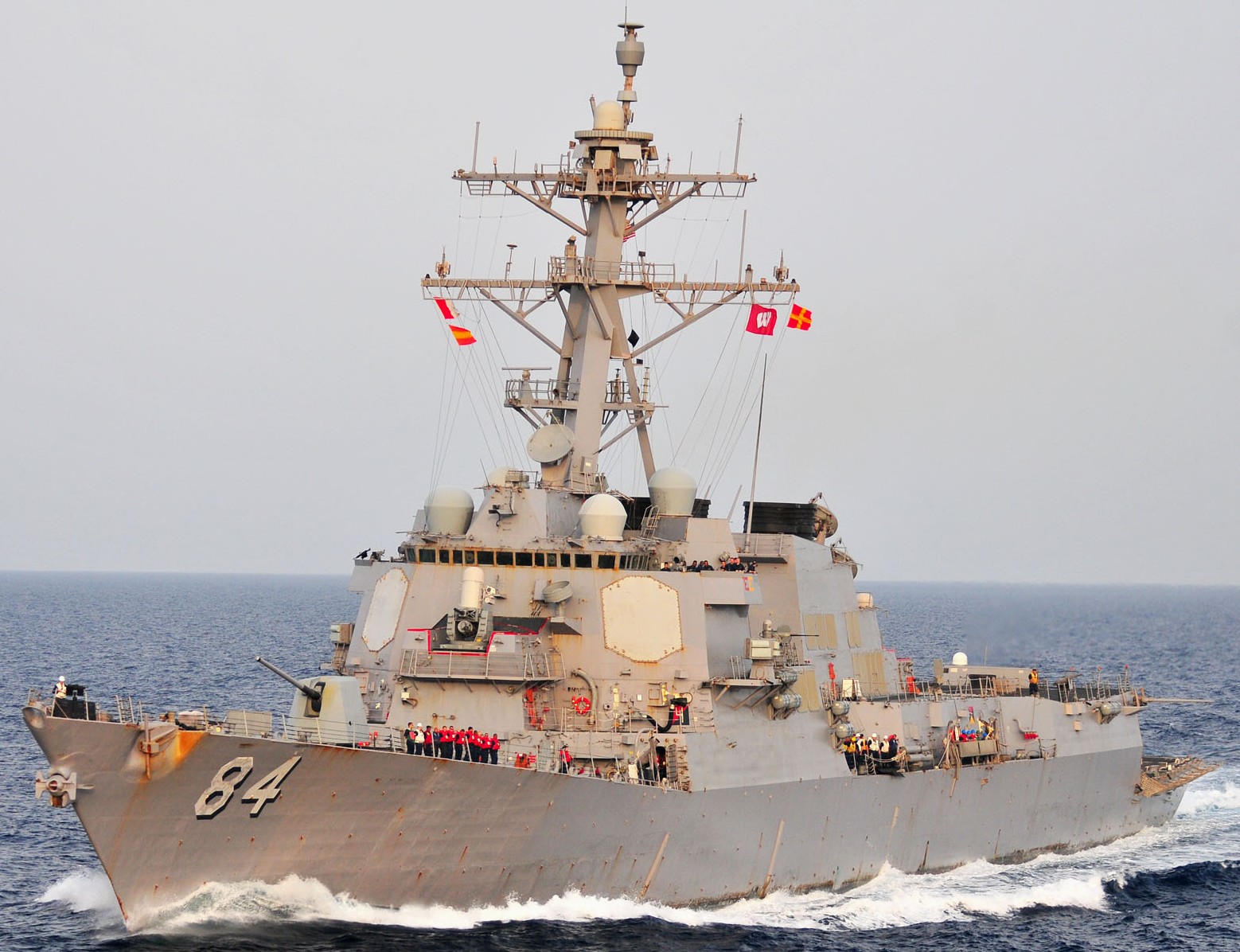 Gulf of Aden - June 2011 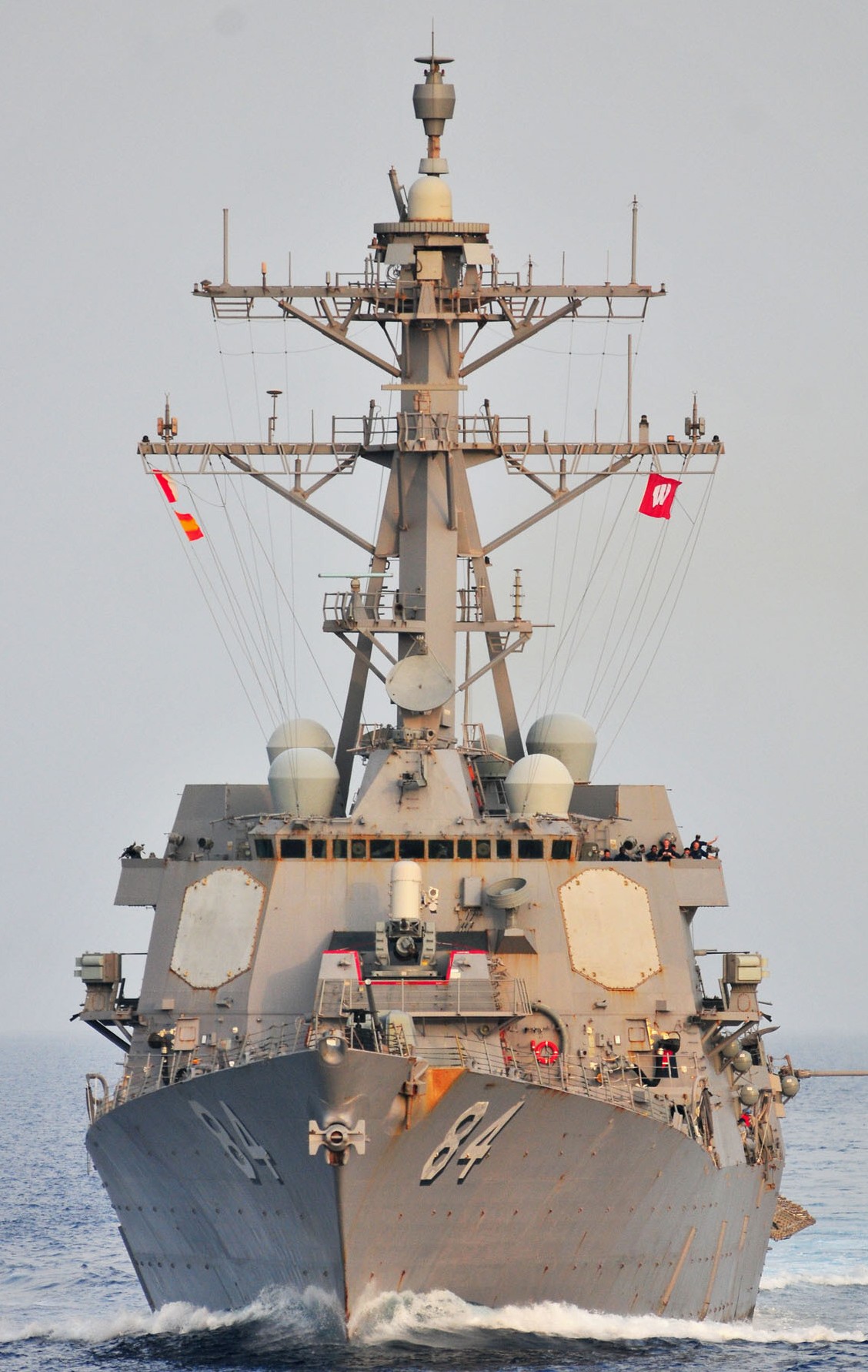 Gulf of Aden - June 2011 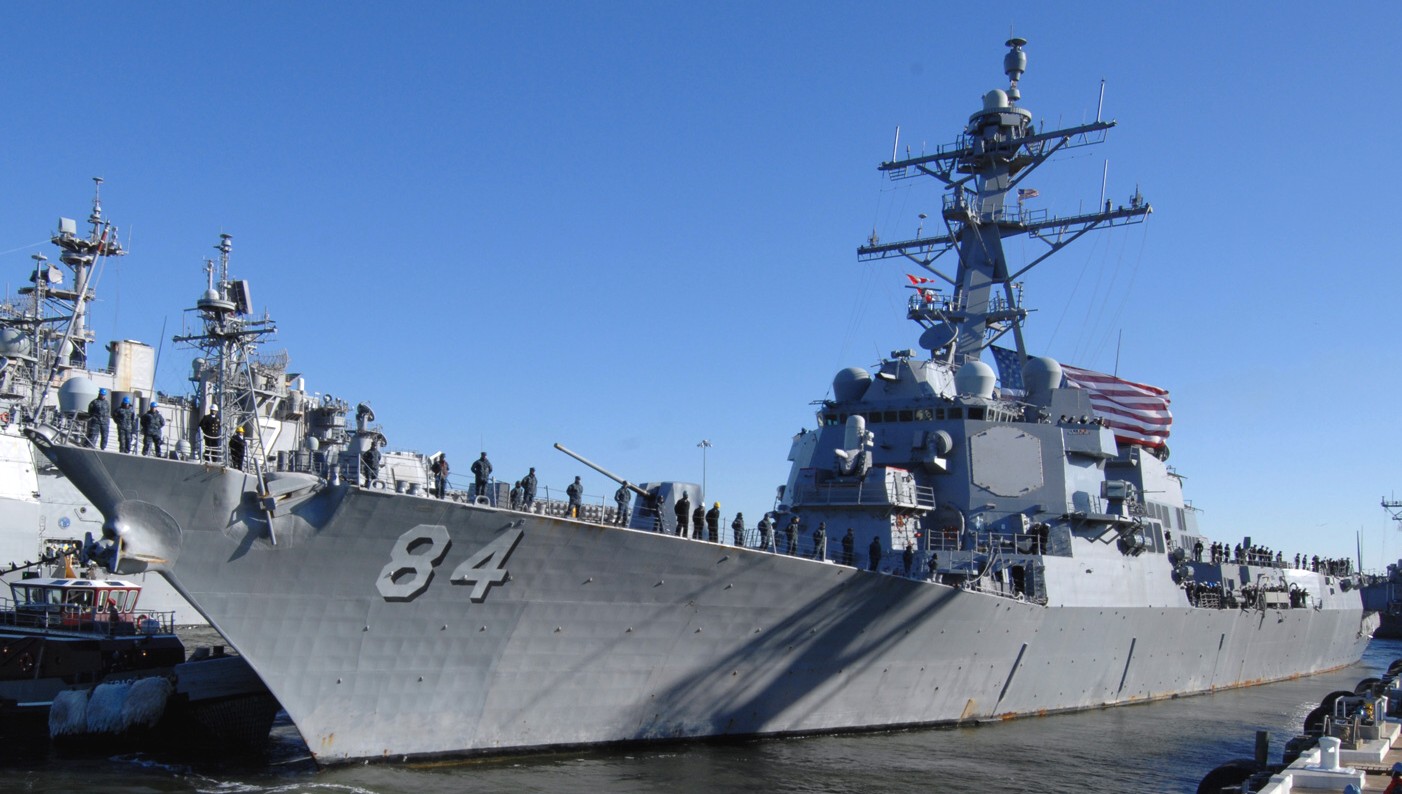 departing Naval Station Norfolk, Virginia - January 13, 2011 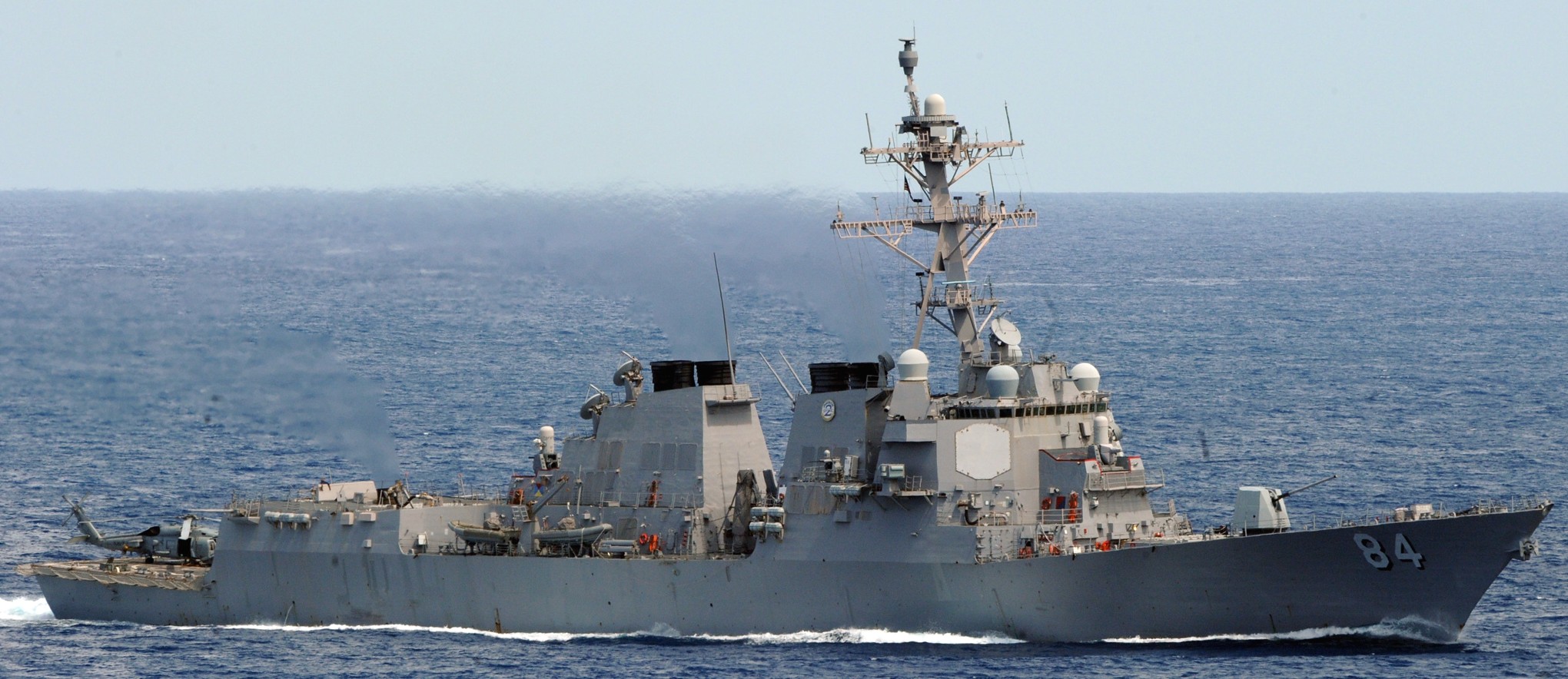 Atlantic Ocean - September 2010 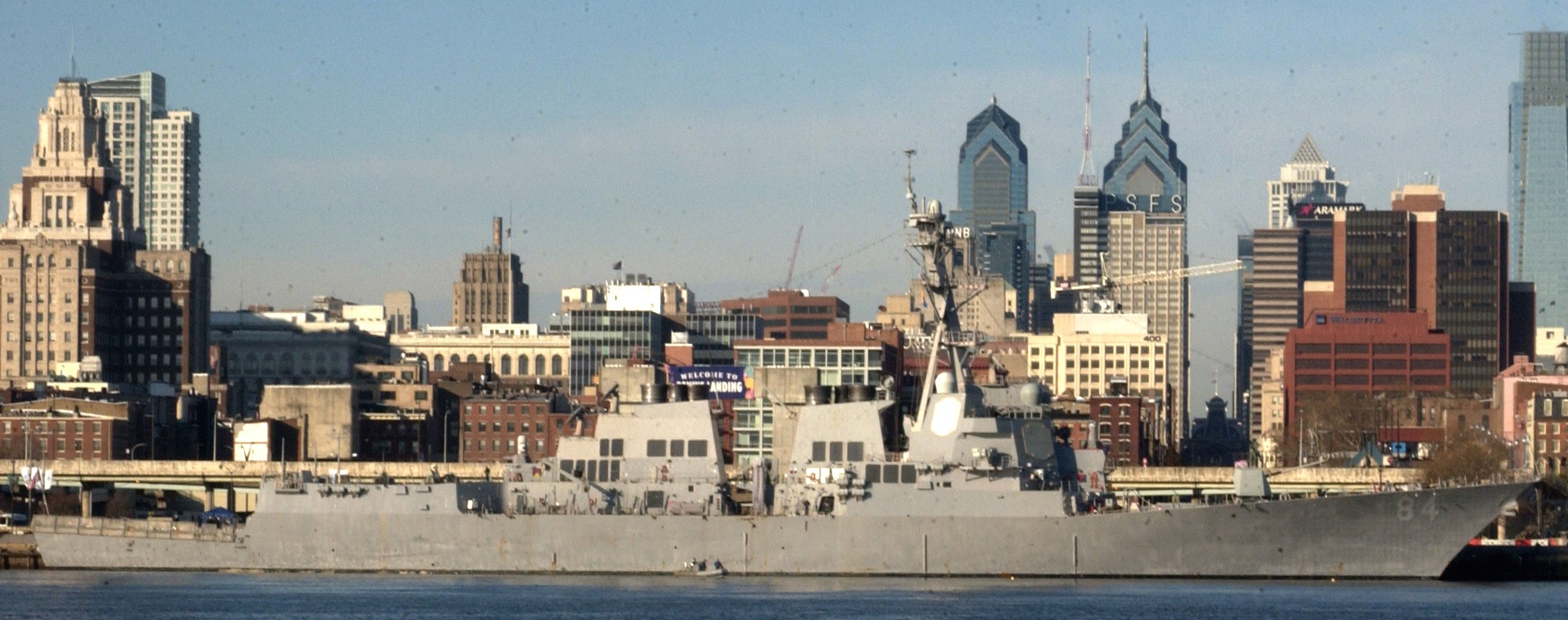 Philadelphia, Pennsylvania - December 2008 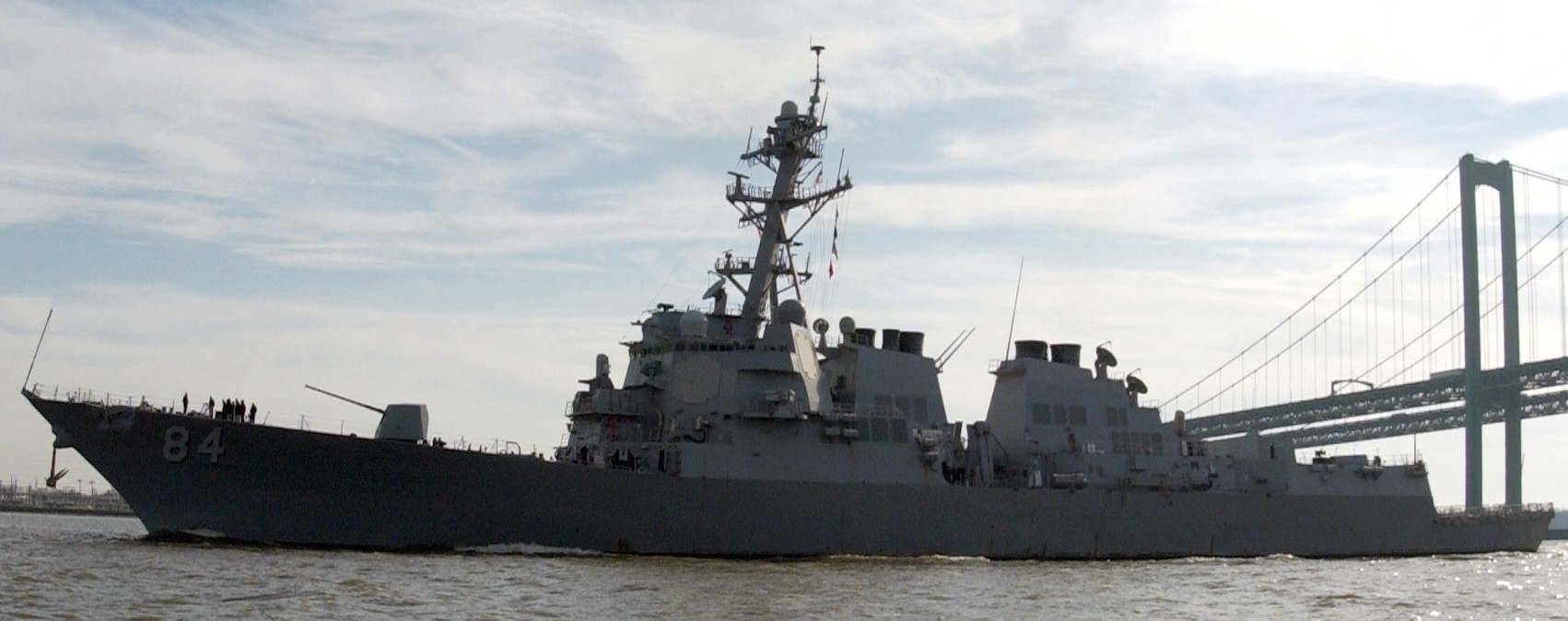 on her way to Philadelphia - Delaware River - December 2008 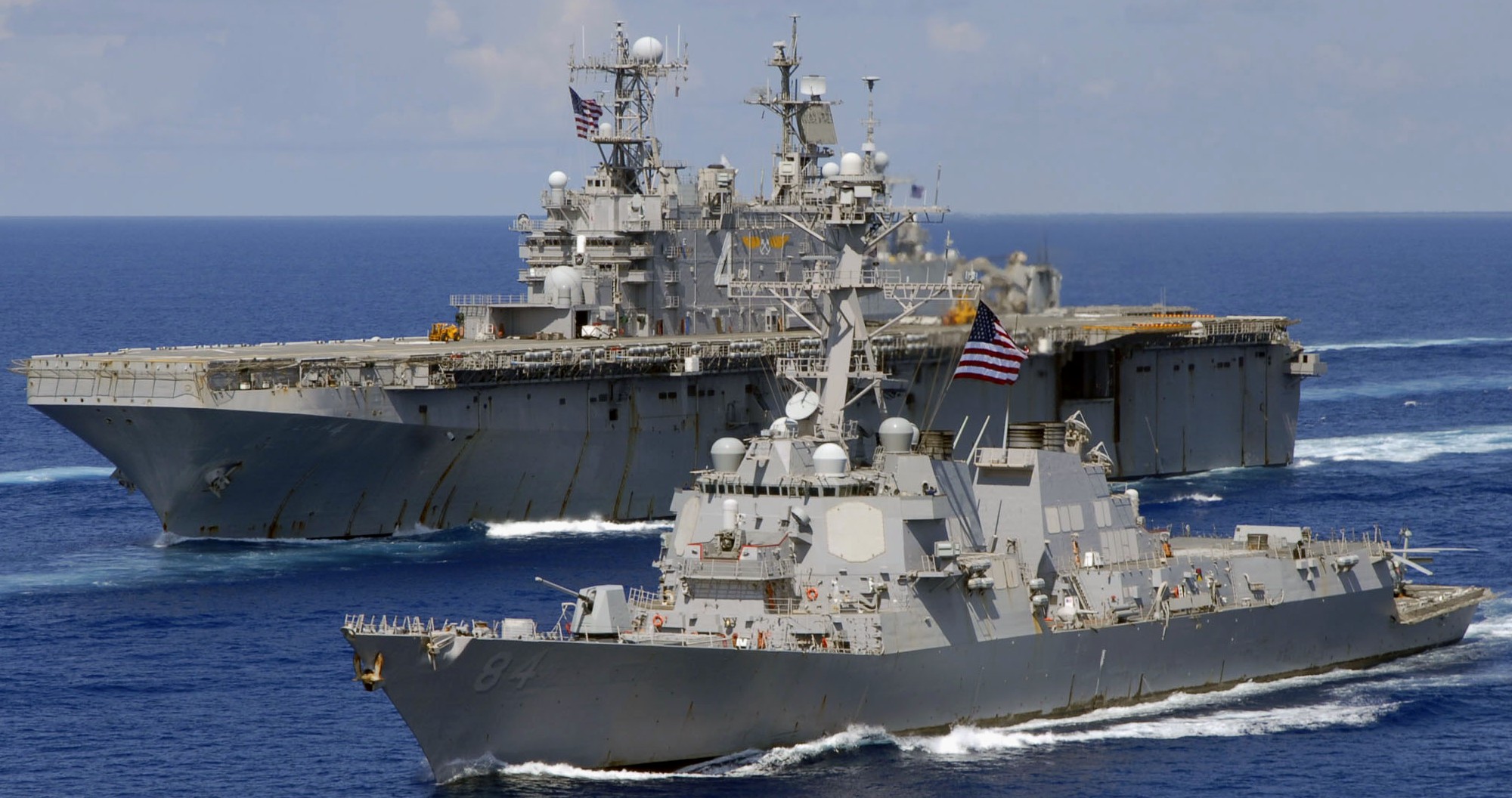 with USS Nassau (LHA 4) - Atlantic Ocean - July 2008 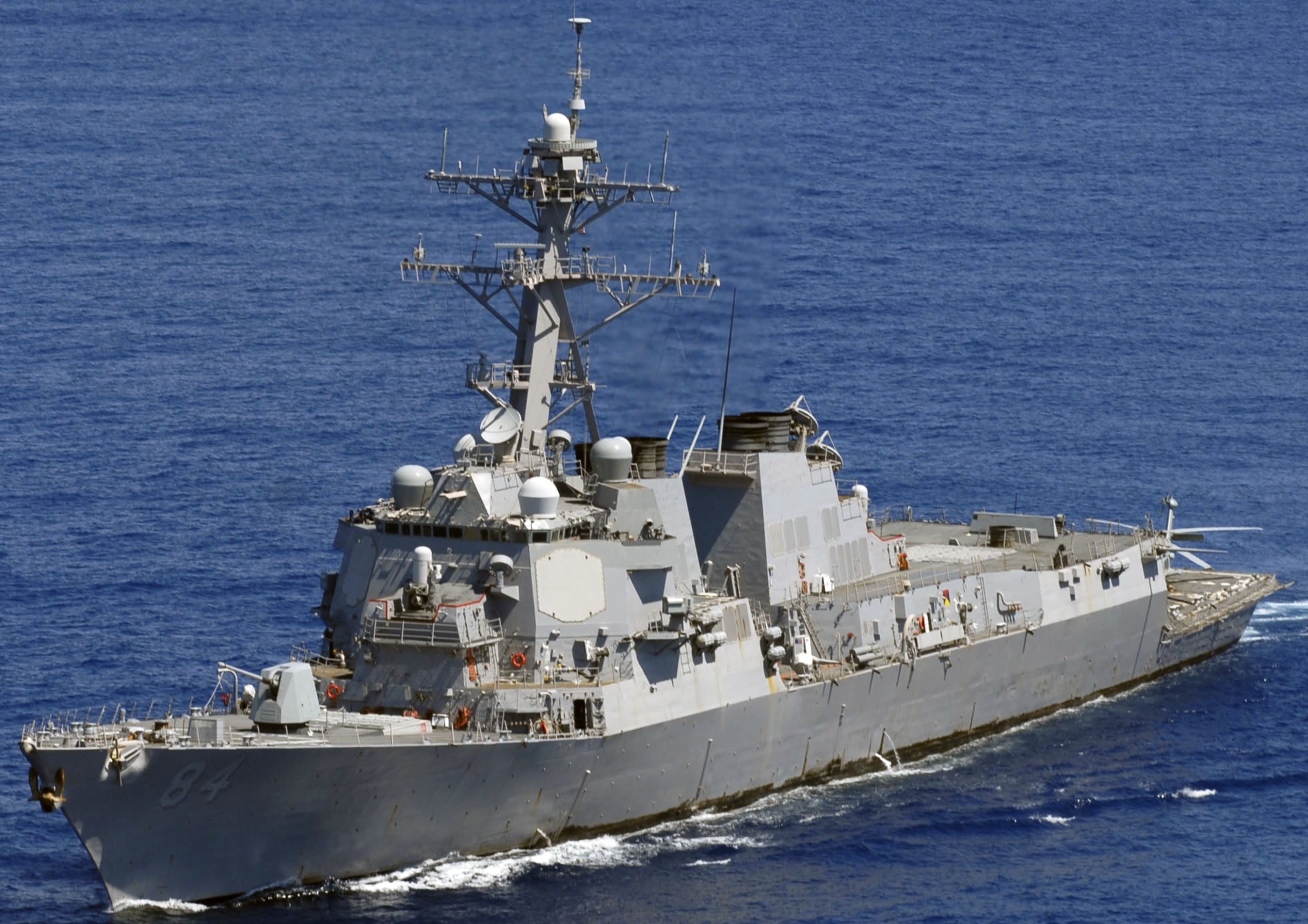 Atlantic Ocean - July 2008 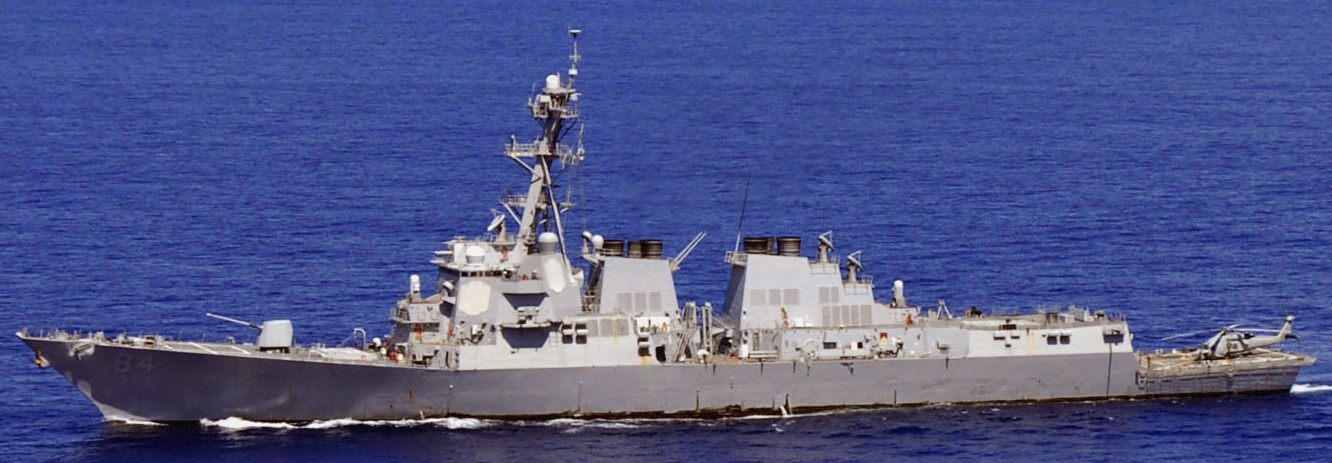 Atlantic Ocean - July 2008  arriving at Naval Support Activity Souda Bay, Crete, Greece - June 2008 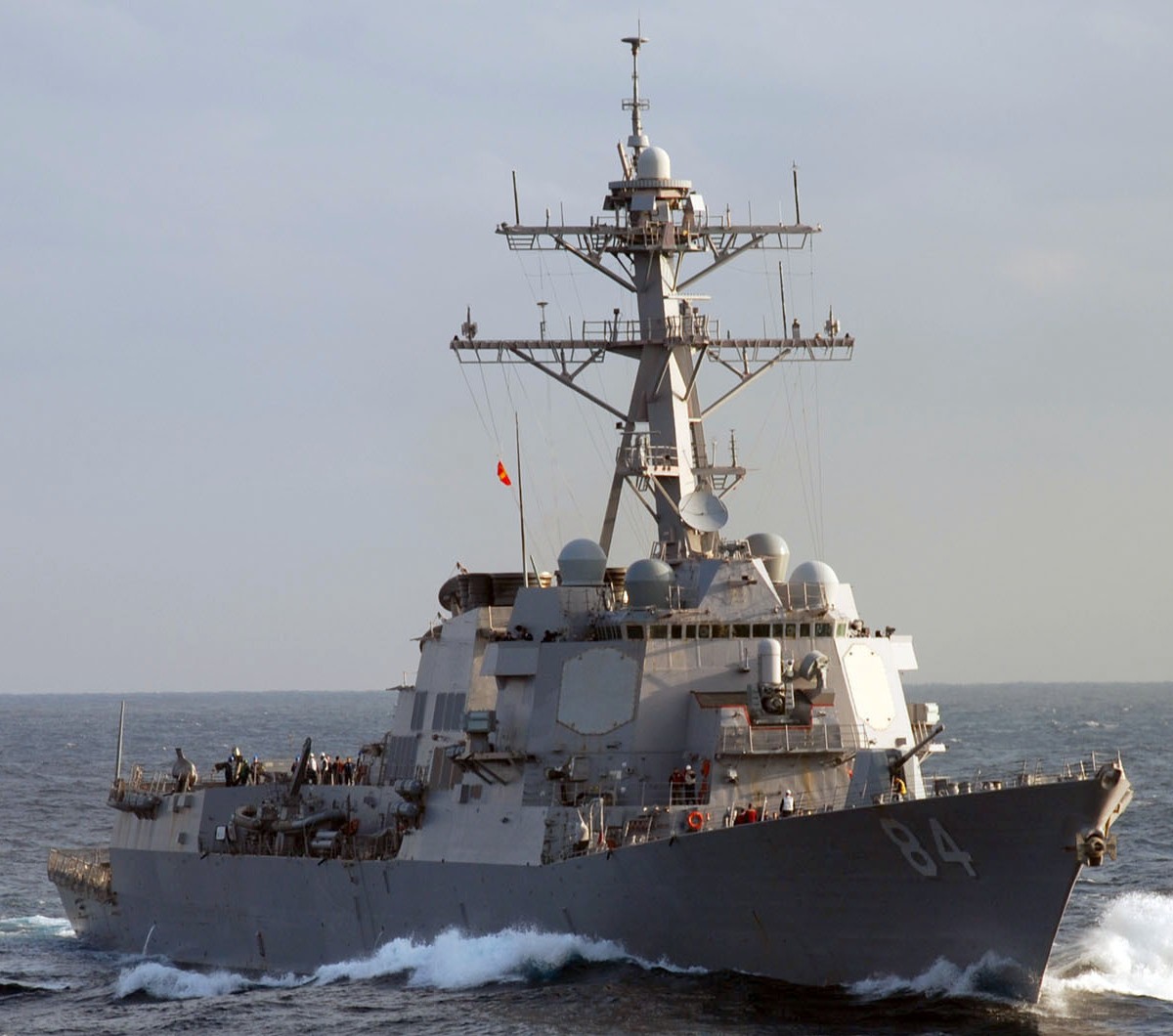 6th Fleet AOR - February 2008  departing Naval Station Norfolk, Virginia - June 8, 2006  departing Naval Station Norfolk, Virginia - June 8, 2006  departing Naval Station Norfolk, Virginia - June 8, 2006 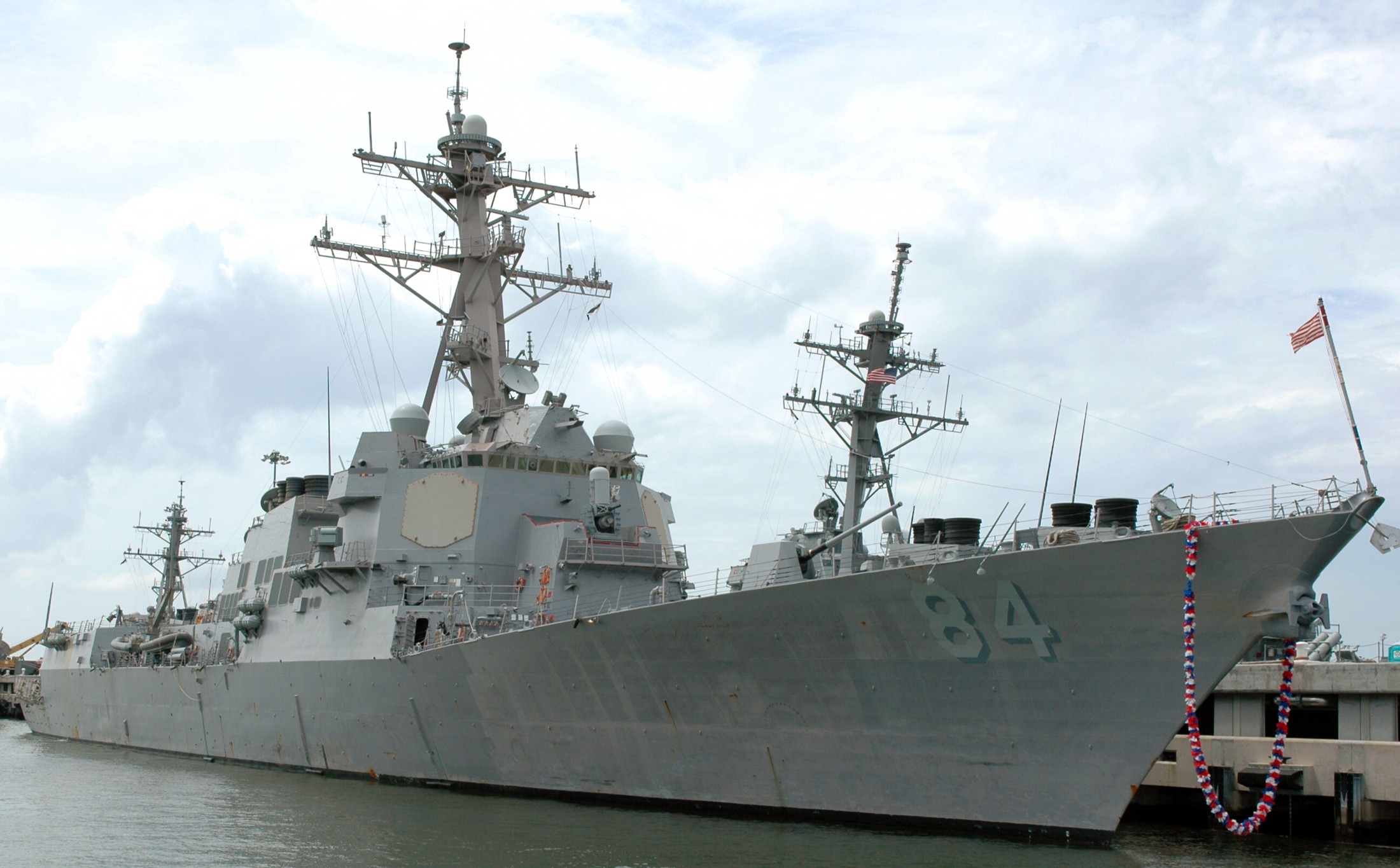 returning to Naval Station Norfolk, Virginia - August 1, 2004 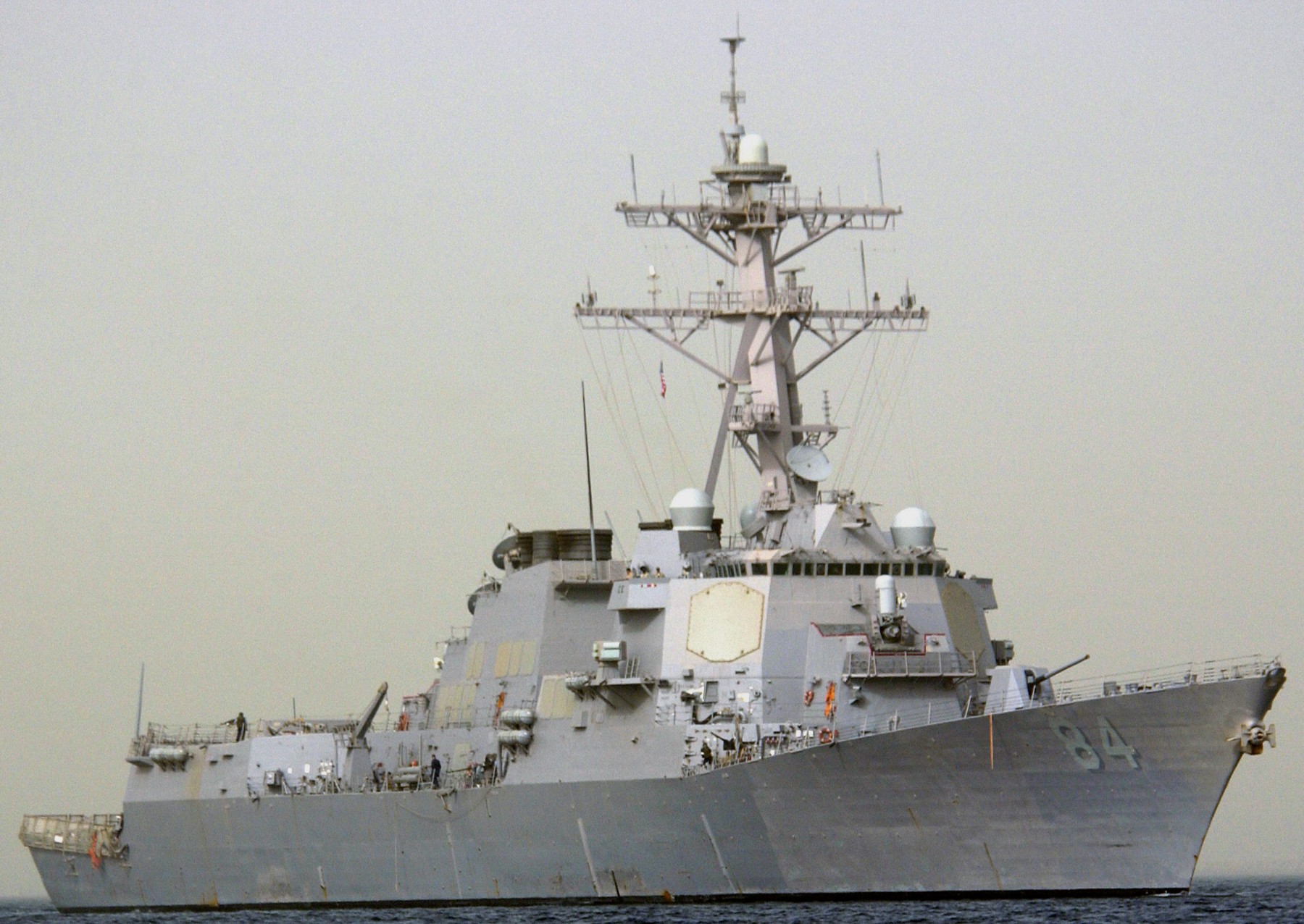 Operation Iraqi Freedom - Arabian Gulf - June 2004  Operation Iraqi Freedom - Arabian Gulf - June 2004  Operation Iraqi Freedom - Arabian Gulf - June 2004  Mk.50 torpedo exercise - Arabian Gulf - June 2004 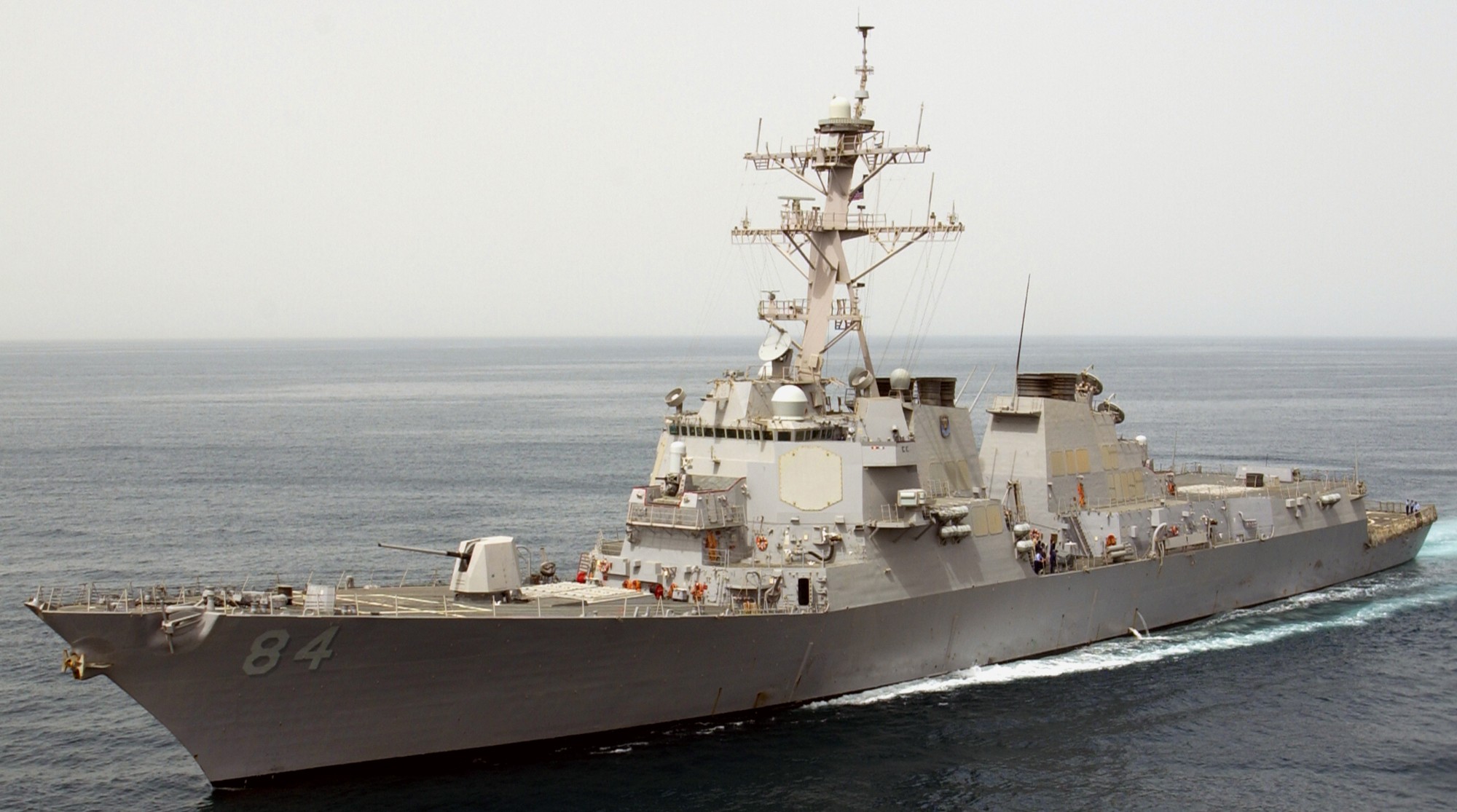 Arabian Gulf - April 2004  Arabian Gulf - April 2004  Arabian Gulf - April 2004  Arabian Gulf - March 2004  Mediterranean Sea - February 2004  Atlantic Ocean - October 2003 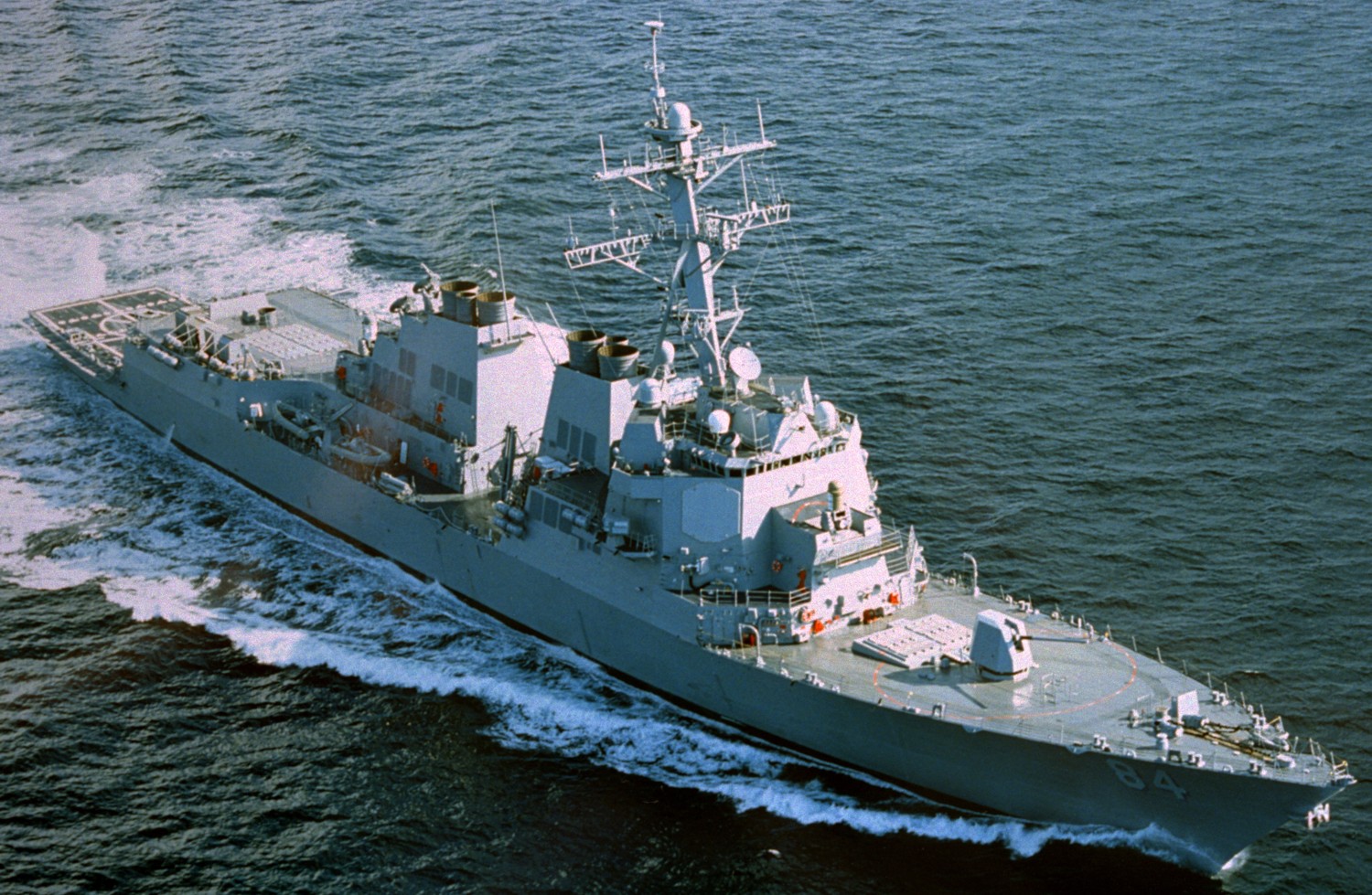 builder's sea trials - Gulf of Mexico - June 2001 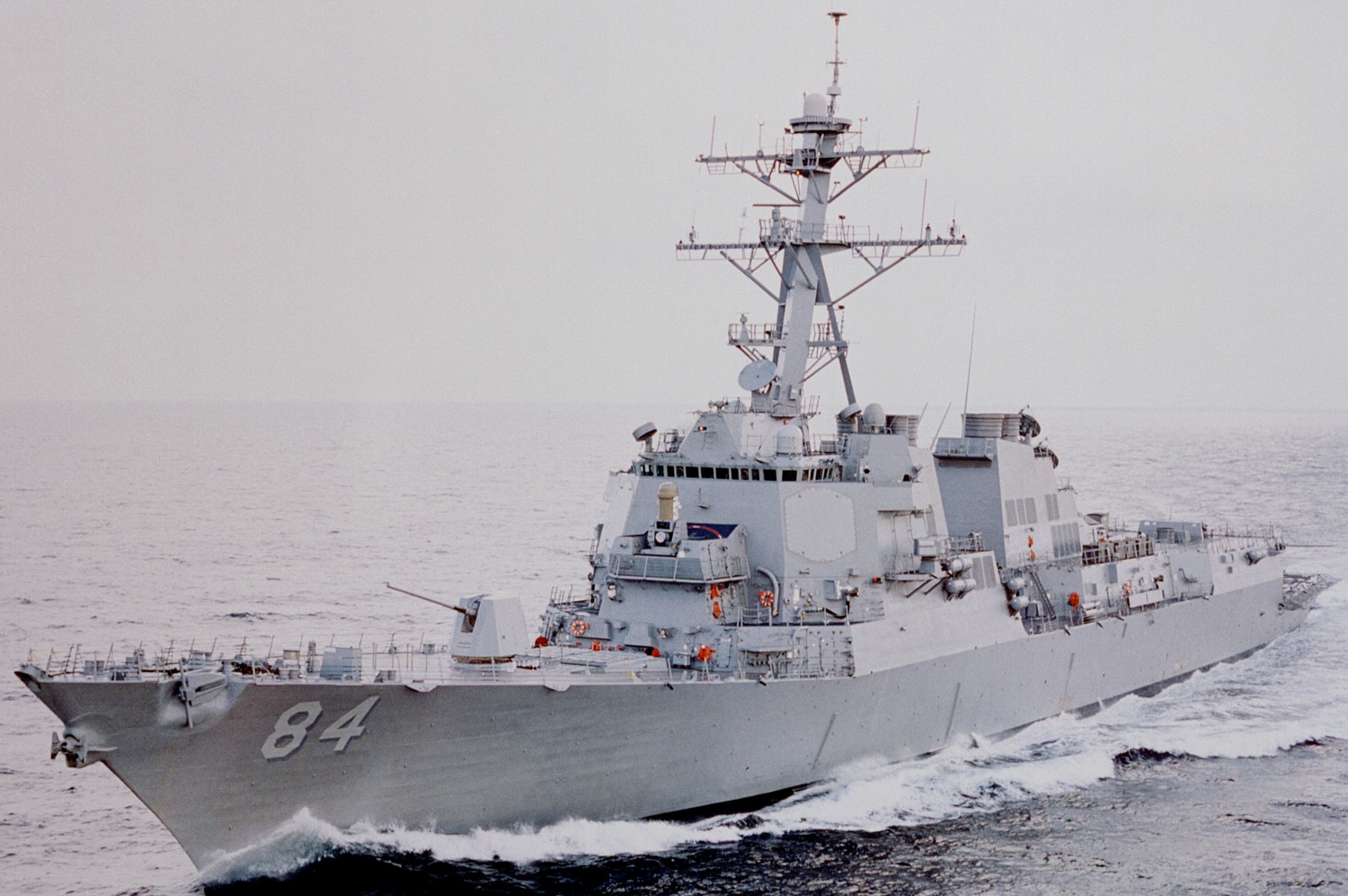 builder's sea trials - Gulf of Mexico - June 2001 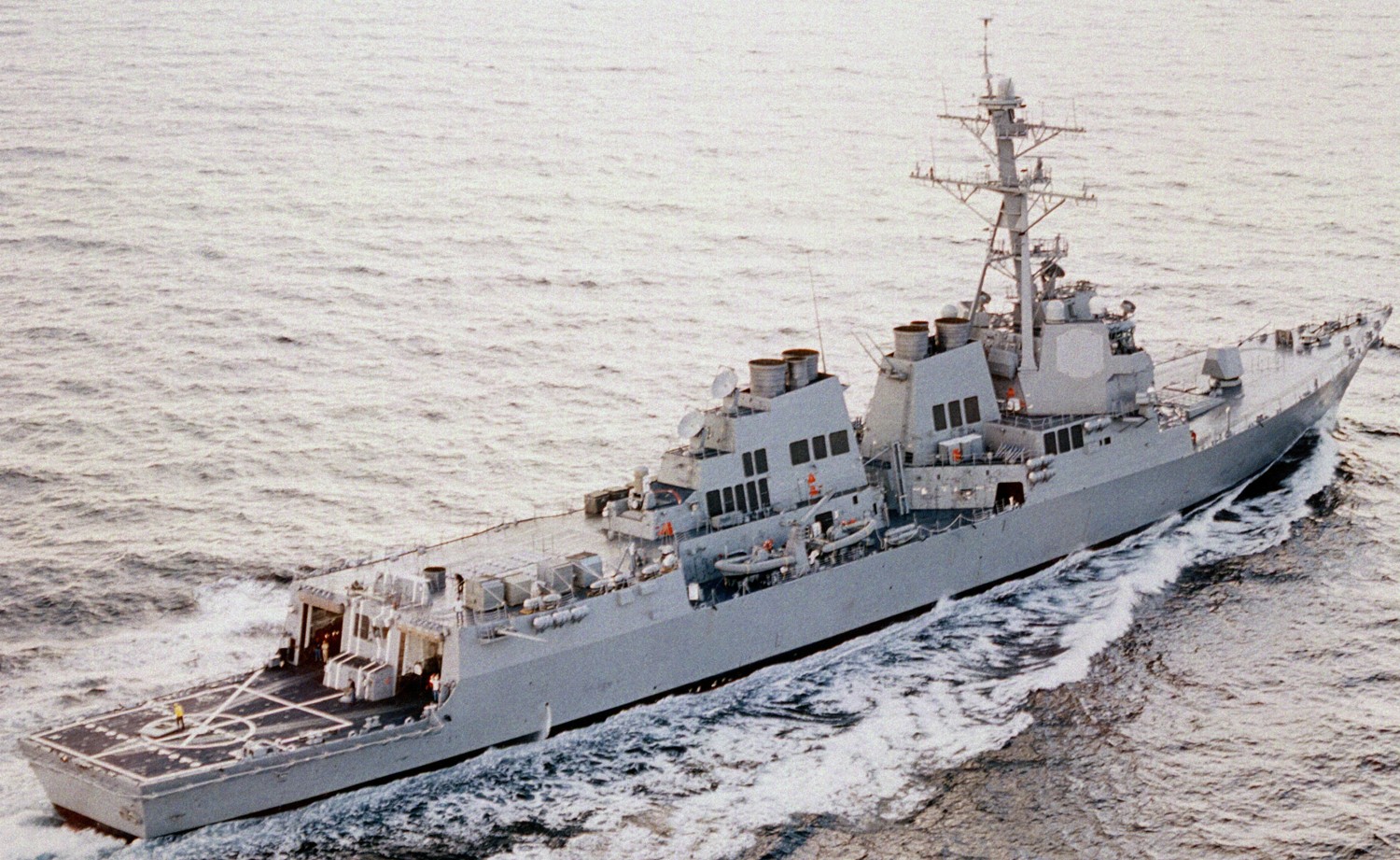 builder's sea trials - Gulf of Mexico - June 2001 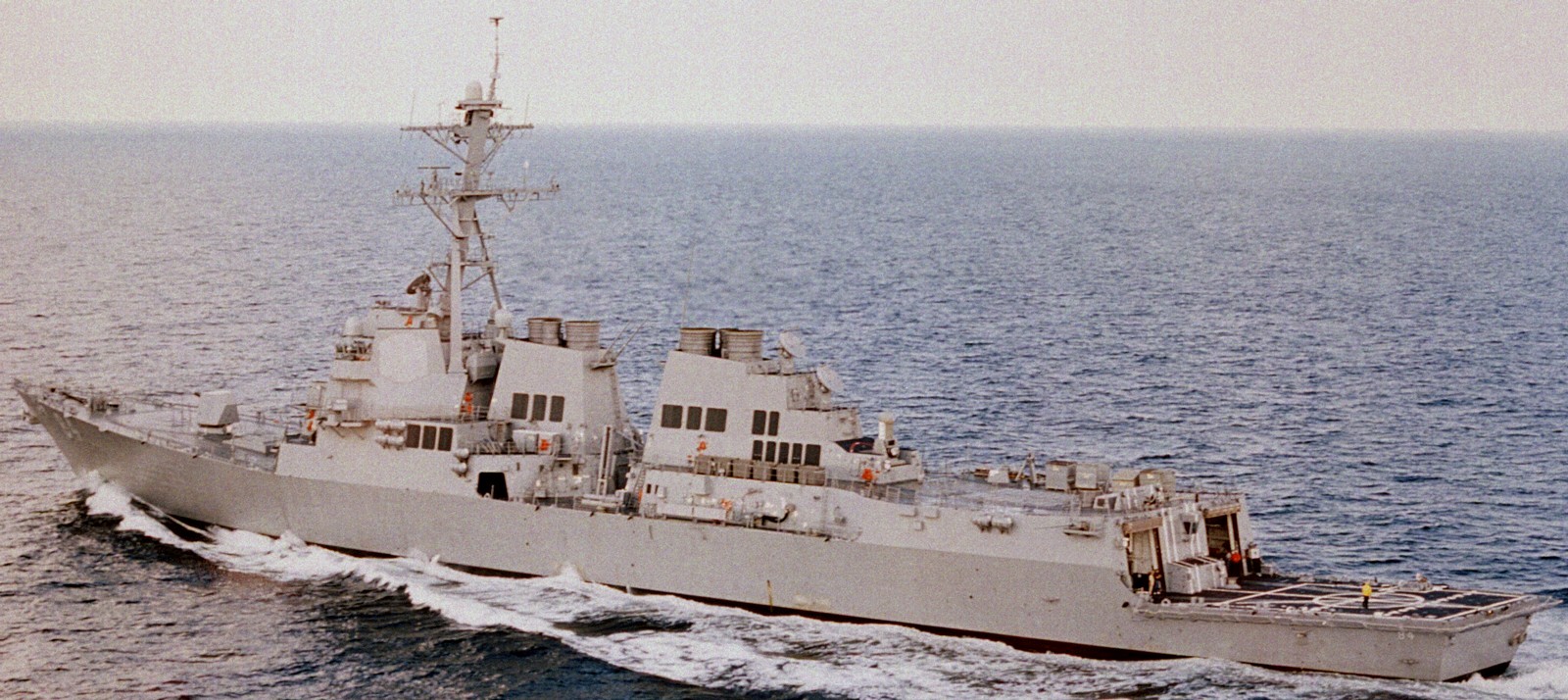 builder's sea trials - Gulf of Mexico - June 2001 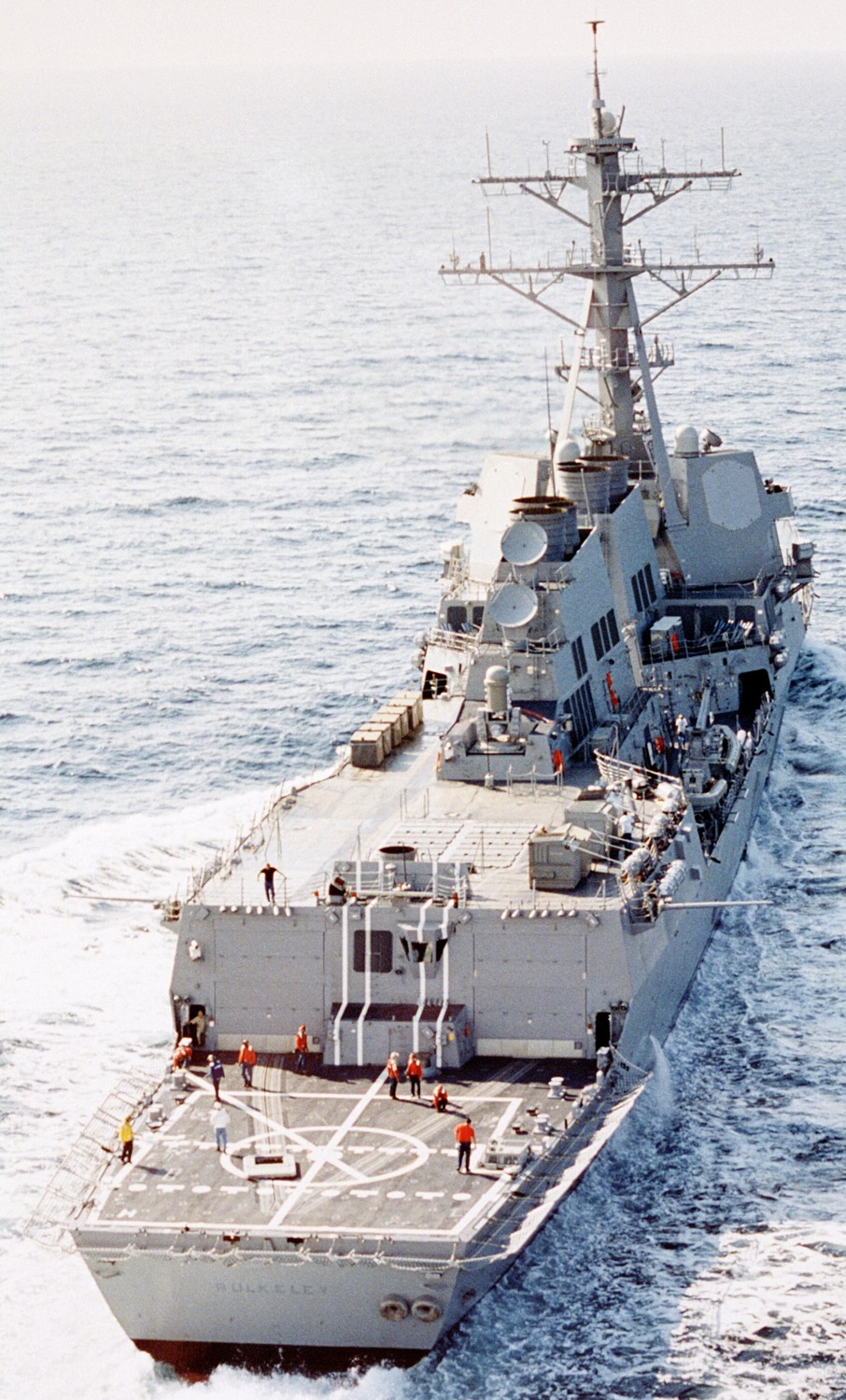 builder's sea trials - Gulf of Mexico - June 2001  launching at Litton Ingalls Shipbuilding, Pascagoula, Mississippi - June 21, 2000 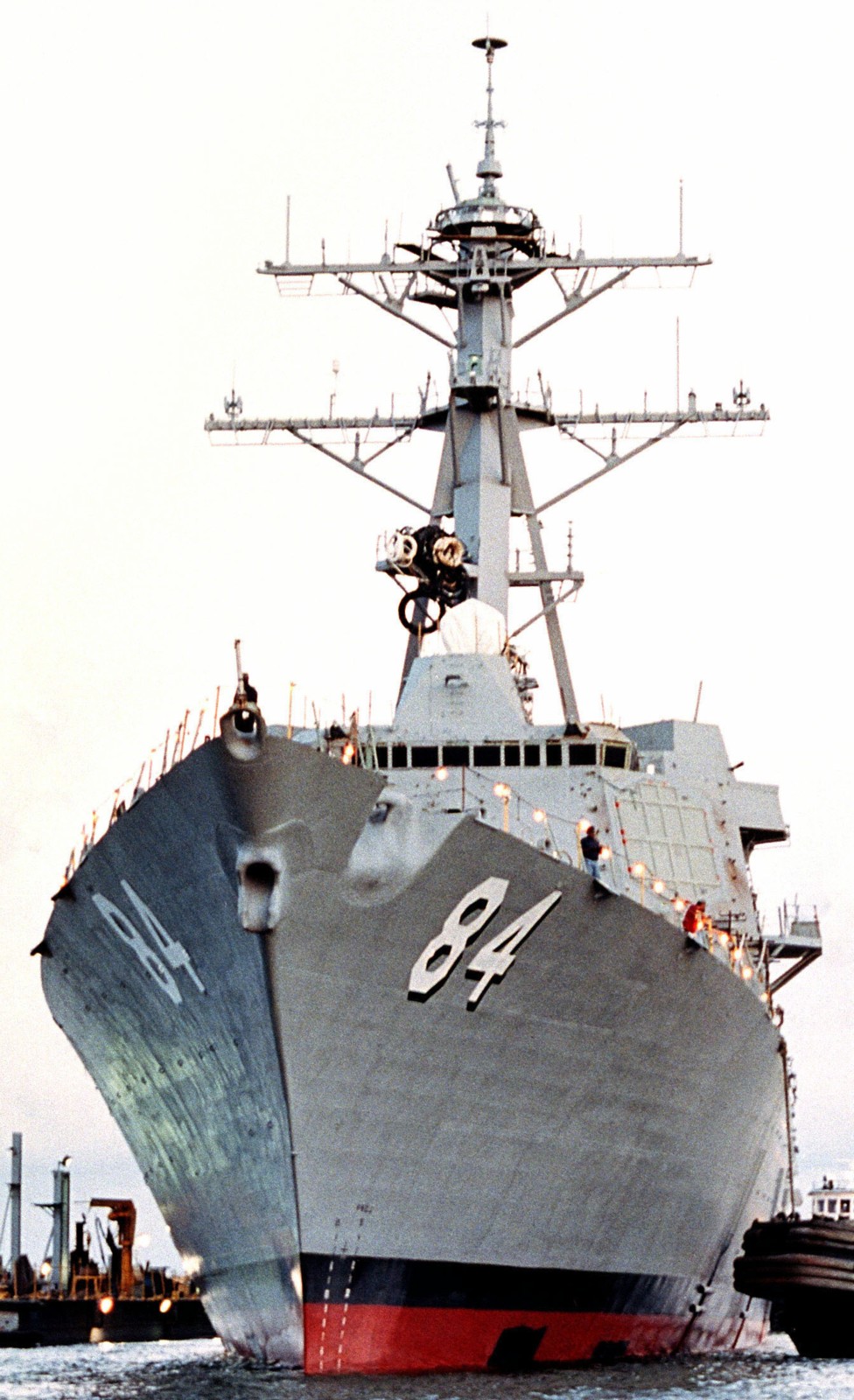 launching at Litton Ingalls Shipbuilding, Pascagoula, Mississippi - June 21, 2000  launching at Litton Ingalls Shipbuilding, Pascagoula, Mississippi - June 21, 2000  keel laying ceremony at Litton Ingalls Shipbuilding, Pascagoula, Mississippi - May 10, 1999 |
||
|
USS Bulkeley (DDG 84): On 13 June 2004, Bulkeley came to the aid of a vessel in distress, Al-Rashid Mum 131. Shortly after turning the vessel over to an Iranian tugboat, it sank. Bulkeley rescued three crew and recovered the body of a fourth. The tug rescued one additional crewman; the other seven were lost at sea. The incident is recounted in the book In the Shadow of Greatness. In February 2011, Bulkeley was involved in a mission to rescue four American citizens from the yacht Quest which was attacked by Somali pirates. On 5 March 2011, Bulkeley was involved in rescuing a Japanese oil tanker, MV Guanabara, from Somali pirates while on duty with Combined Task Force 151 off the coast of Oman. Three of the pirates were tried and convicted in Japan, the fourth was turned over to juvenile authorities, as it was determined that he was a minor. On 16 May 2011, Bulkeley responded to a mayday call from the Panamanian flagged very large crude carrier Artemis Glory by dispatching a Seahawk helicopter (from HSL 48) to its position. Seeing that a piratical skiff carrying four men was firing upon Artemis Glory, the Seahawk investigated the skiff. The pirates opened fire on the helicopter with small arms and were summarily neutralized by crew served weapons from the helicopter in self-defense. The helicopter then withdrew without any casualties to its own crewmembers or that of Artemis Glory. The ship returned to Norfolk on 15 July 2011. During its deployment, she had participated in operations which had captured 75 Somali pirates and had missile strikes by its carrier strike group against the Libyan government. On 4 August 2022, Bulkeley departed Norfolk for a homeport shift to Rota, Spain, arriving on 17 August. Her aft Phalanx CIWS was replaced with a SeaRAM CIWS. On July 16, while operating at a position between Libya and Crete, a helicopter from USS Bulkeley spotted a vessel that appeared to be dead in the water, the destroyer asked a nearby oil tanker Seaways Sabine to intervene, after which it retrieved 31 people from the distressed craft. Bulkeley transferred medical corpsmen over to the tanker in a RHIB. The responders were able to stabilize two of the victims; the third passed away despite their intervention, including an attempt at CPR. The remaining survivors stayed aboard Seaways Sabine as the tanker got back under way. The vessel arrived at an anchorage off Alexandria on the morning of July 18. source: wikipedia |
||
|
Vice Admiral John Duncan Bulkeley (August 19, 1911 - April
6, 1996): John Duncan Bulkeley was born on 19 August 1911 in New York City, New York. Though a resident of New Jersey, he was appointed to the U.S. Naval Academy from the State of Texas and graduated in June 1933. During sea duty as a junior officer, Bulkeley served in the heavy cruiser Indianapolis, the transport Chaumont, the gunboat Sacramento, and the aircraft carrier Saratoga. In May 1937, he was promoted from Ensign to Lieutenant Junior Grade. During the first half of 1941 he commanded Submarine Chaser Division Two and Submarine Chaser Squadron One, receiving promotion to Lieutenant in April, and took command of Motor Torpedo Boat Squadron Three in August. When Japan began the Pacific War in December 1941, Lieutenant Bulkeley skillfully led his PT boats in Philippine area combat operations, damaging or destroying numerous enemy planes and ships. In March 1942, he evacuated General Douglas MacArthur and Philippine President Quezon from Manila Bay to the southern Philippines. For his "extraordinary heroism" during the difficult early months of World War II, John D. Bulkeley was awarded the Medal of Honor. Returning to the United States in May 1942, Bulkeley was assigned to the Motor Torpedo Boat Squadron Training Center at Portsmouth, Rhode Island. In October, he was promoted to Lieutenant Commander and ordered to Motor Torpedo Boat Squadron Seven. While serving with his squadron, he was hospitalized for a period of time. In January 1944, he was promoted to Commander and a few months later assumed command of Motor Torpedo Boat Squadron Two. Bulkeley then transferred to Patrol Torpedo Boat Squadron One Hundred Two, leading the squadron during the Normandy D-Day Invasion. Days after, he transferred to command USS Endicott, serving off the Southern French coast. In August 1945, he fitted-out and served on board USS Stribling. After shore duty at the Naval Academy, he reported in May 1948 as the Executive Officer of Commander, Amphibious Group Two on board USS Mount Olympus. After training, he was assigned as the Chief of the Weapons Division of the Military Liaison Committee to the Atomic Energy Commission in Washington, D.C. After a promotion to Captain in July 1952, Bulkeley became Destroyer Division One Hundred Thirty Two and served during the Korean War. Remaining in the area, he transferred as Chief of Staff and Aide to Commander Cruiser Division Five. Returning to Washington D.C., he became a staff officer to the Joint Chiefs of Staff. After this tour, he commanded USS Tolovana before assigned as Commander, Destroyer Squadron Twelve. In July 1960, he commanded the Clarksville Nuclear Modification Center at Clarksville, Tennessee. After a promotion to Rear Admiral in 1963, he assumed command of Naval Base, Guantanamo Bay, Cuba and resolved the water crisis when Cuba stopped the base's supply. In June 1966, he became Cruiser-Destroyer Flotilla Eight. A year later, he assumed duties as President of the Board of Inspection and Survey in Washington, D.C and remained in that position until retiring in August 1988. Upon his retirement, he was promoted by Congress to Vice Admiral on the retired list. John D. Bulkeley died on 6 April 1996 and is buried at Arlington National Cemetery, Arlington, Virginia. U.S. Decorations: - Medal of Honor (Presented by President Roosevelt) - Navy Cross (Presented by Secretary of the Navy Frank Knox) - Distinguished Service Cross (Army) with Oak Leaf cluster in Lieu of Second Award (Presented by Gen Douglas MacArthur) - Distinguished Service Medal with two Gold Stars in Lieu of Second and Third Awards (Presented by CNO) - Silver Star (Army) with Gold Star in Lieu of a Second Award - Legion of Merit with Combat Distinguishing Device-V-for Valor - Bronze Star with Gold Star in Lieu of a Second Award - Joint Services Commendation Medal - Purple Heart with Gold Star in Lieu of a Second Award - Army Distinguished Unit Award U.S. Campaign and Service Medals: - China Service Medal - USS SACRAMENTO - American Defense Service Medal with "Fleet" Clasp - American Campaign Medal - Asiatic-Pacific Campaign Medal with three Bronze Battle Stars for the following: Philippine Island Operations 7 Dec 1941 - 6 May 1942 Eastern New Guinea Operations - Torpedo Boat Operations 17 Dec 1942 - 24 Jul 1944 Lea Occupation 4-22 September 1943 - European- African- Middle East Campaign Medal with two Bronze Battle Stars: Invasion of Normandy Invasion of France - World War Two Victory Medal - National Defense Service Medal with Bronze Star for Second Award - Korea Service Medal - Navy Expert Rifle Shot Foreign Decorations and Service Awards: - Philippine Distinguished Conduct Star (presented by President Manual Quezon of Republic of the Philippines) - Philippines Defense Service Medal - French Legion of "Honor-Degree of Officer" - French Croix de Guerre (Presented by Gen. Charles de Gaulle Second Award (Presented by Monsieur Louis Mexandeau on the behalf of President Mitterand) - Korean Presidental Unit Citation - UN Korean Service Medal Medal of Honor citation: Bulkeley, John Duncan Rank and organization: Lieutenant Commander, Commander of Motor Torpedo Boat Squadron 3, U.S. Navy. Place and date: Philippine waters, 7 December 1941 to 10 April 1942. Entered service at: Texas. Born: 19 August 1911, New York, N.Y. Other awards: Navy Cross, Distinguished Service Cross, Silver Star, Legion of Merit. Citation: For extraordinary heroism, distinguished service, and conspicuous gallantry above and beyond the call of duty as commander of Motor Torpedo Boat Squadron 3, in Philippine waters during the period 7 December 1941 to 10 April 1942. The remarkable achievement of Lt. Comdr. Bulkeley's command in damaging or destroying a notable number of Japanese enemy planes, surface combatant and merchant ships, and in dispersing landing parties and land-based enemy forces during the 4 months and 8 days of operation without benefit of repairs, overhaul, or maintenance facilities for his squadron, is believed to be without precedent in this type of warfare. His dynamic forcefulness and daring in offensive action, his brilliantly planned and skillfully executed attacks, supplemented by a unique resourcefulness and ingenuity, characterize him as an outstanding leader of men and a gallant and intrepid seaman. These qualities coupled with a complete disregard for his own personal safety reflect great credit upon him and the Naval Service.
|
||
| patches + more | ||
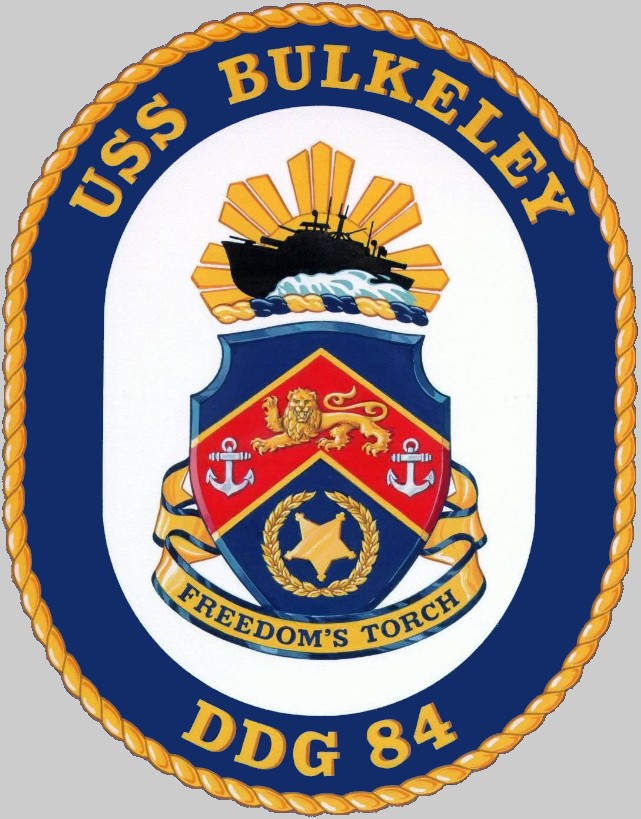 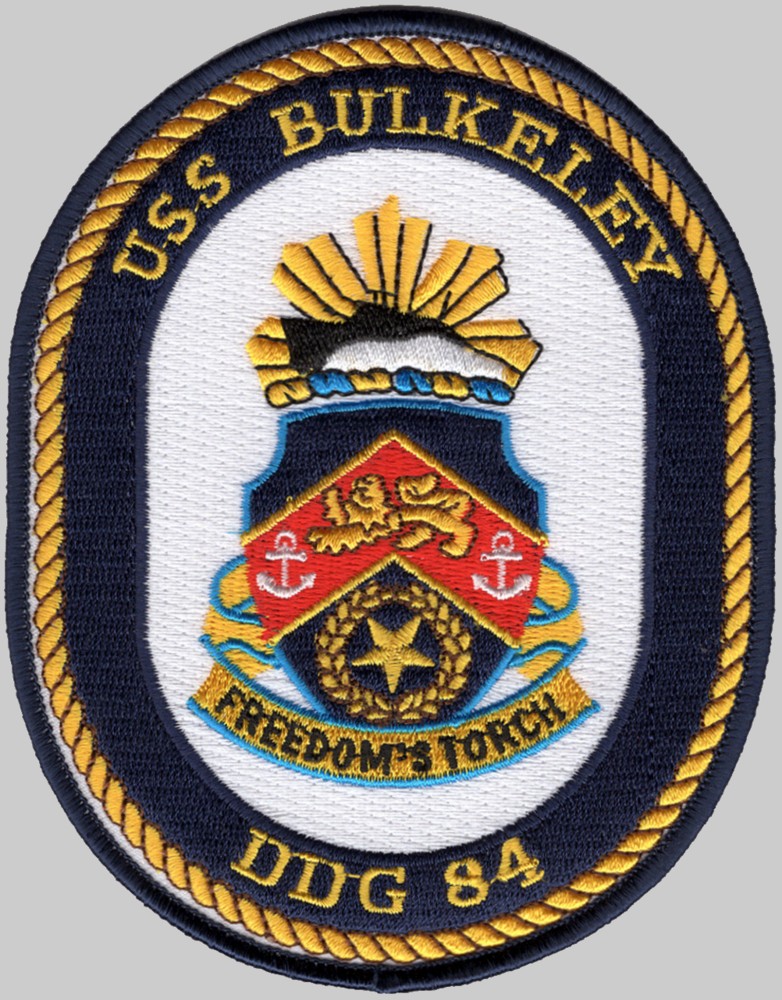 |
||
|
|
seaforces.org
|
USN ships
start page | |
